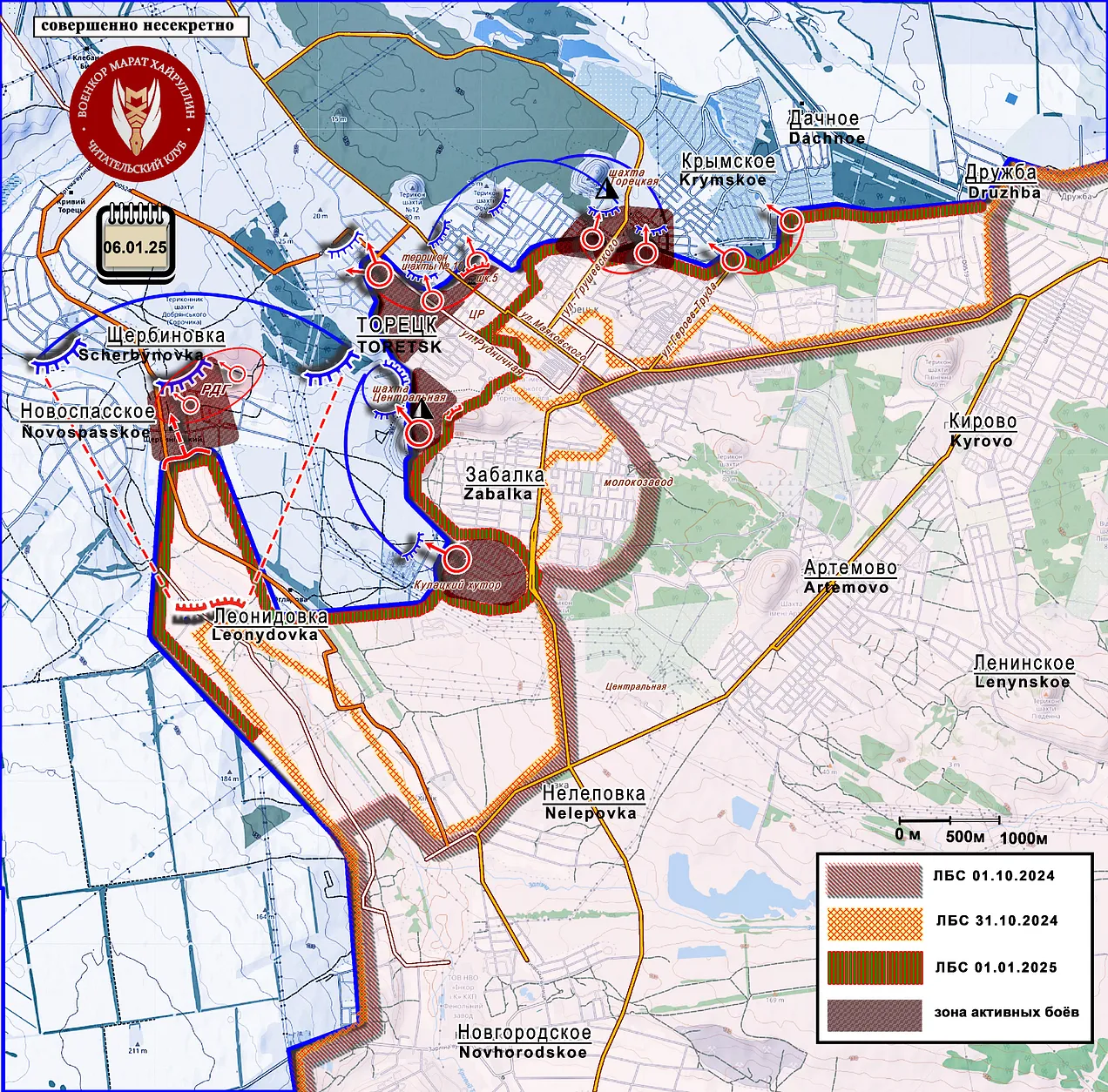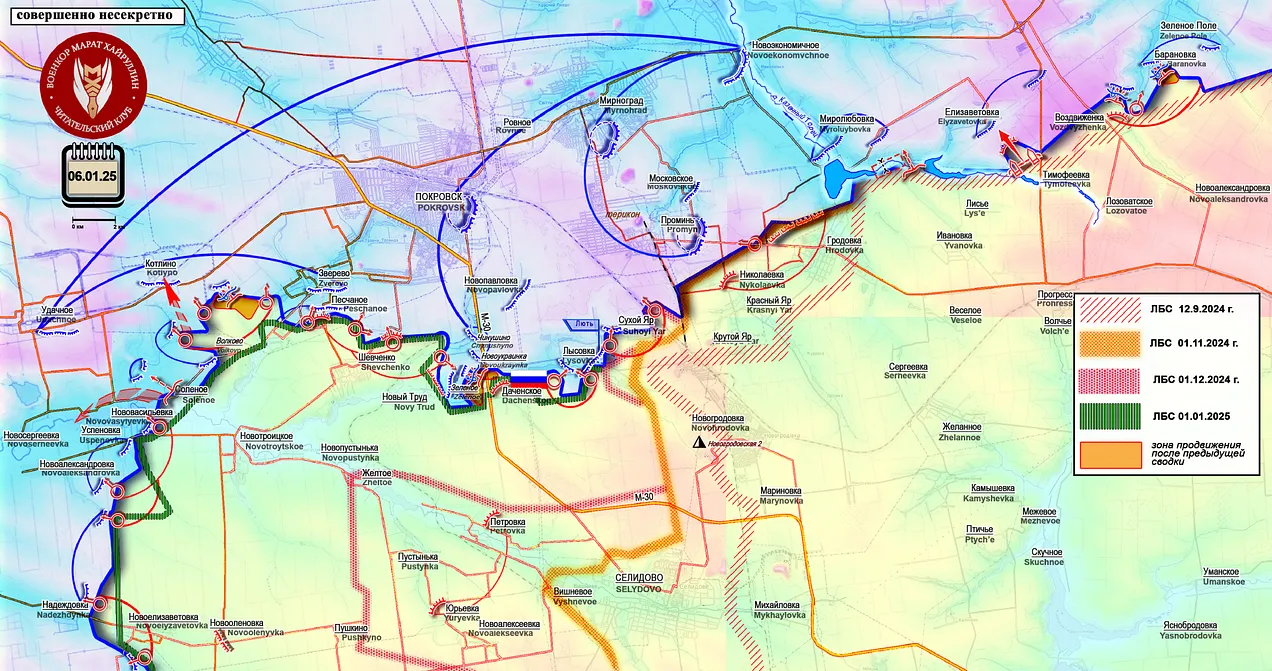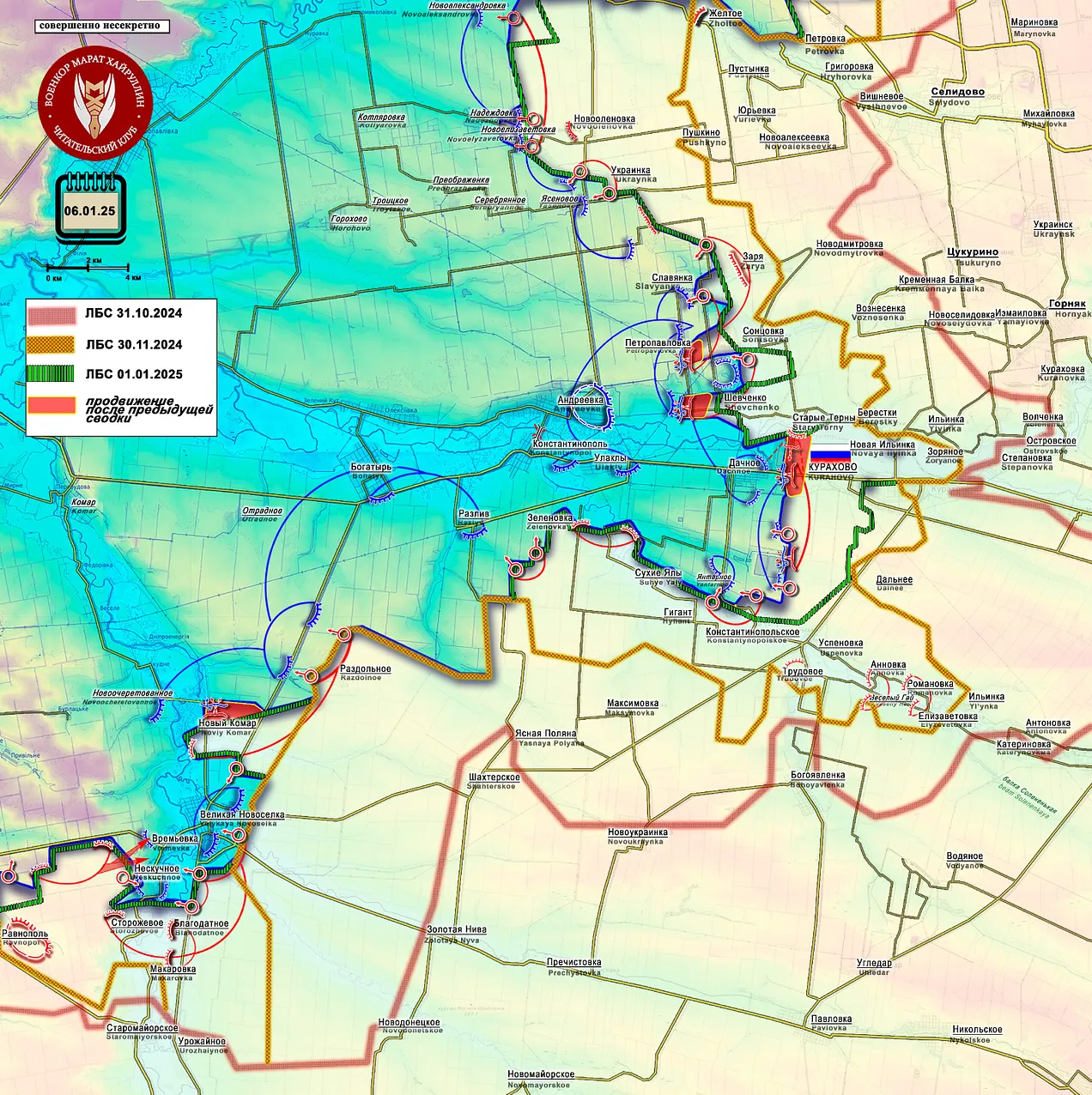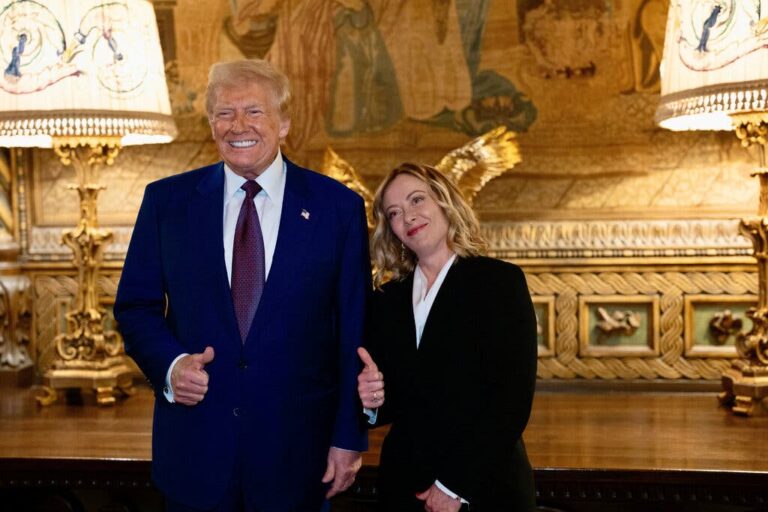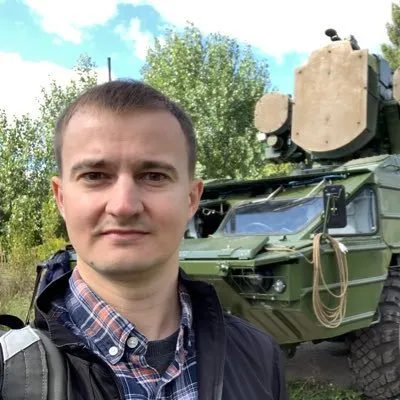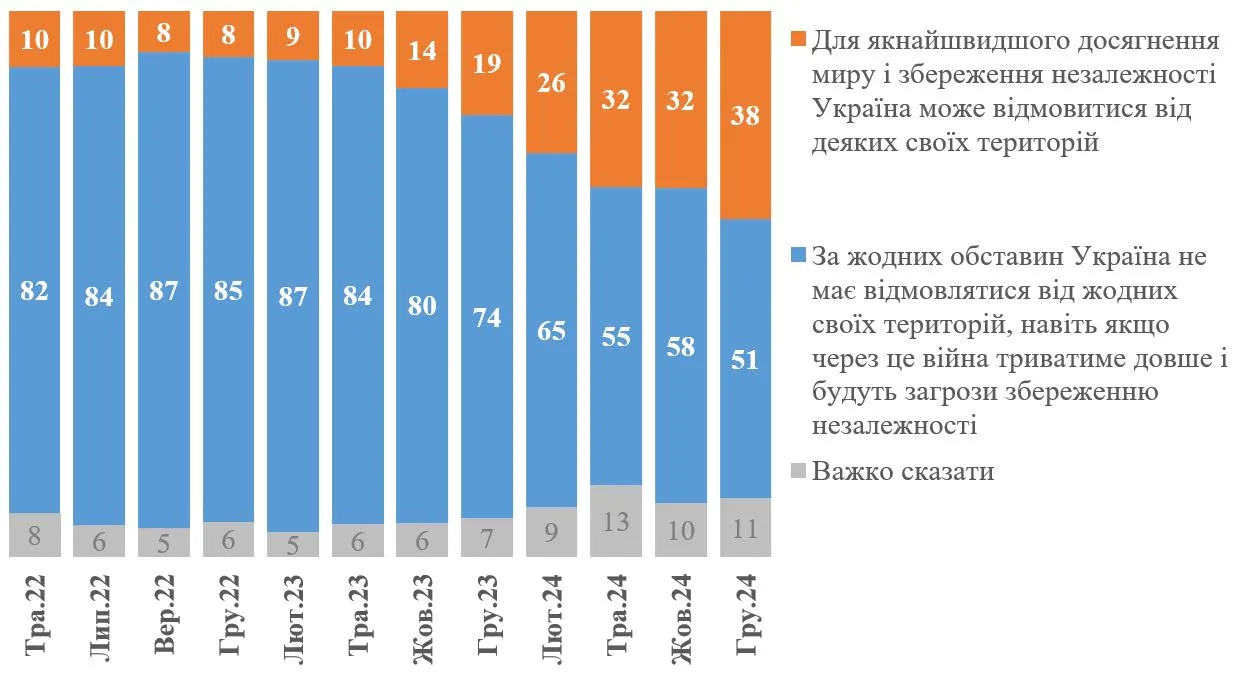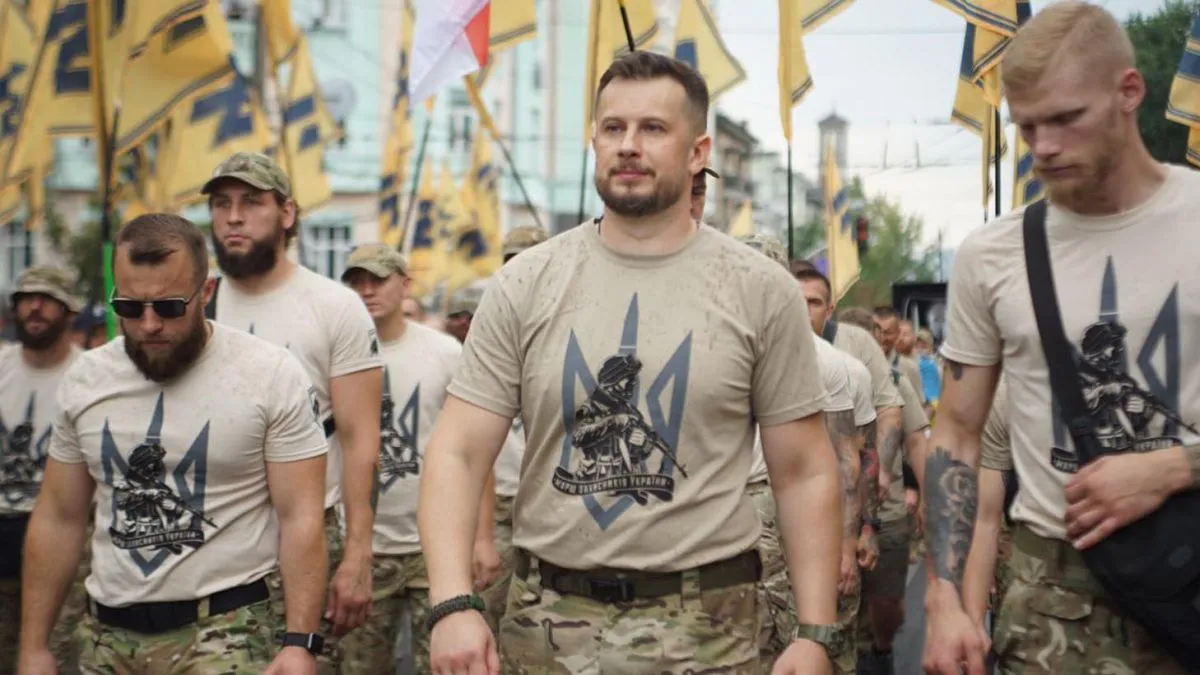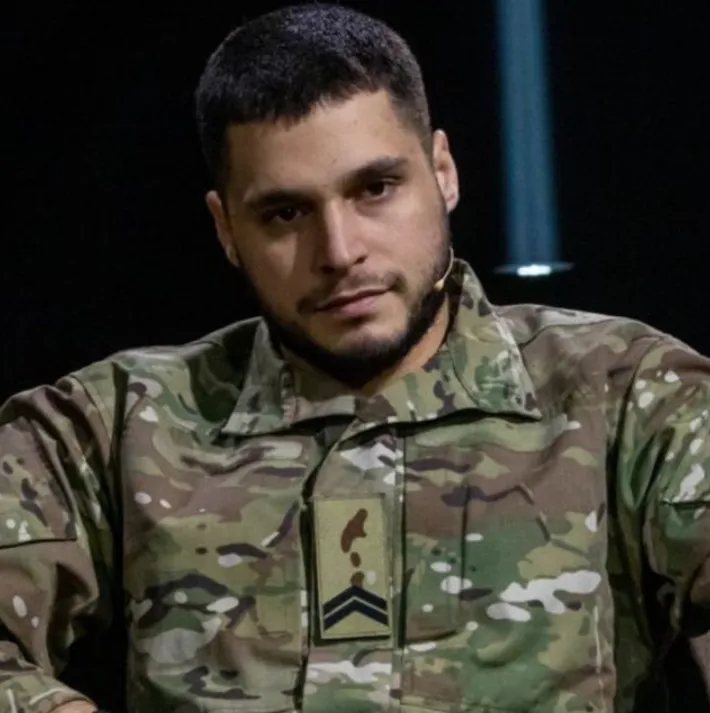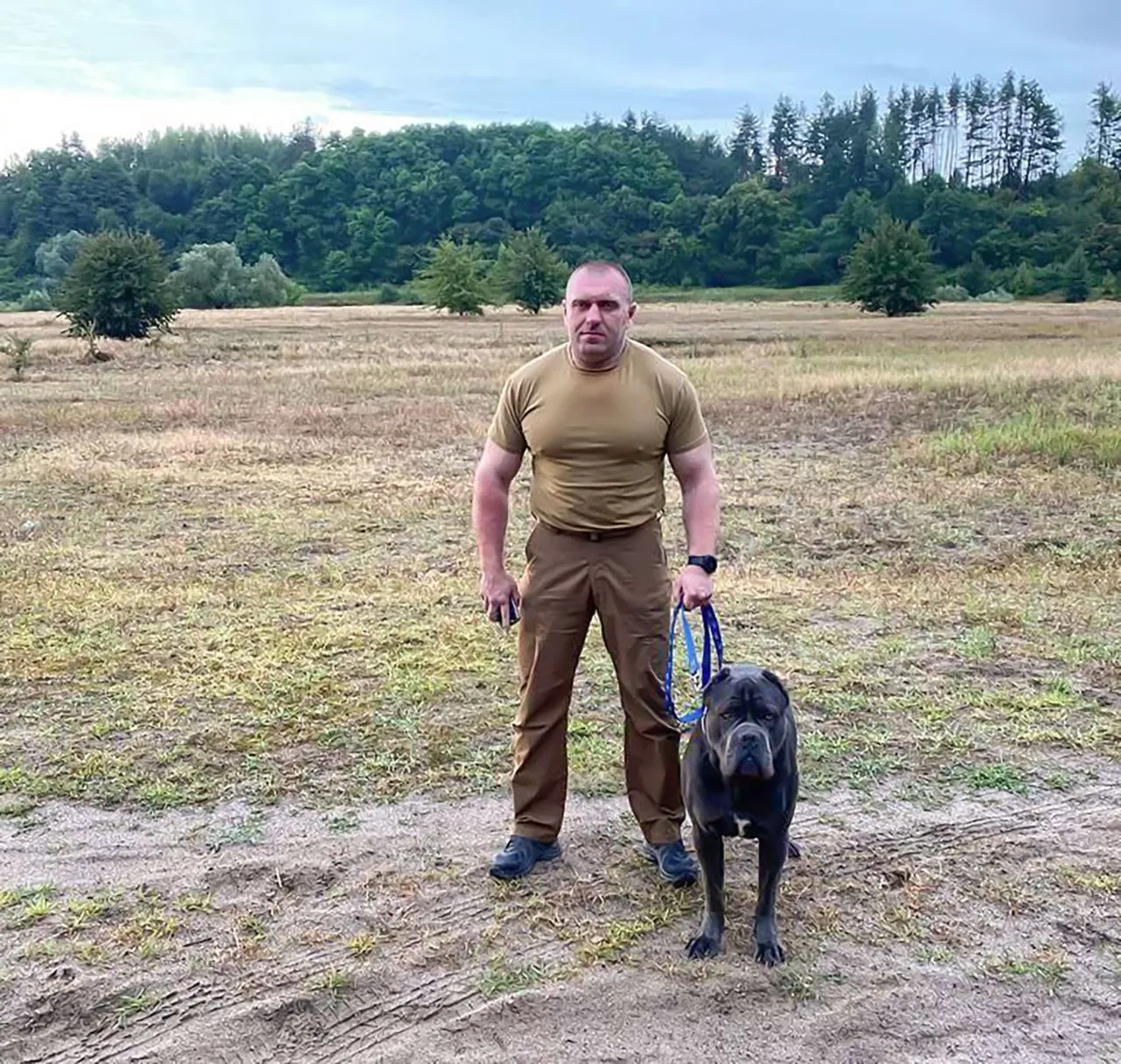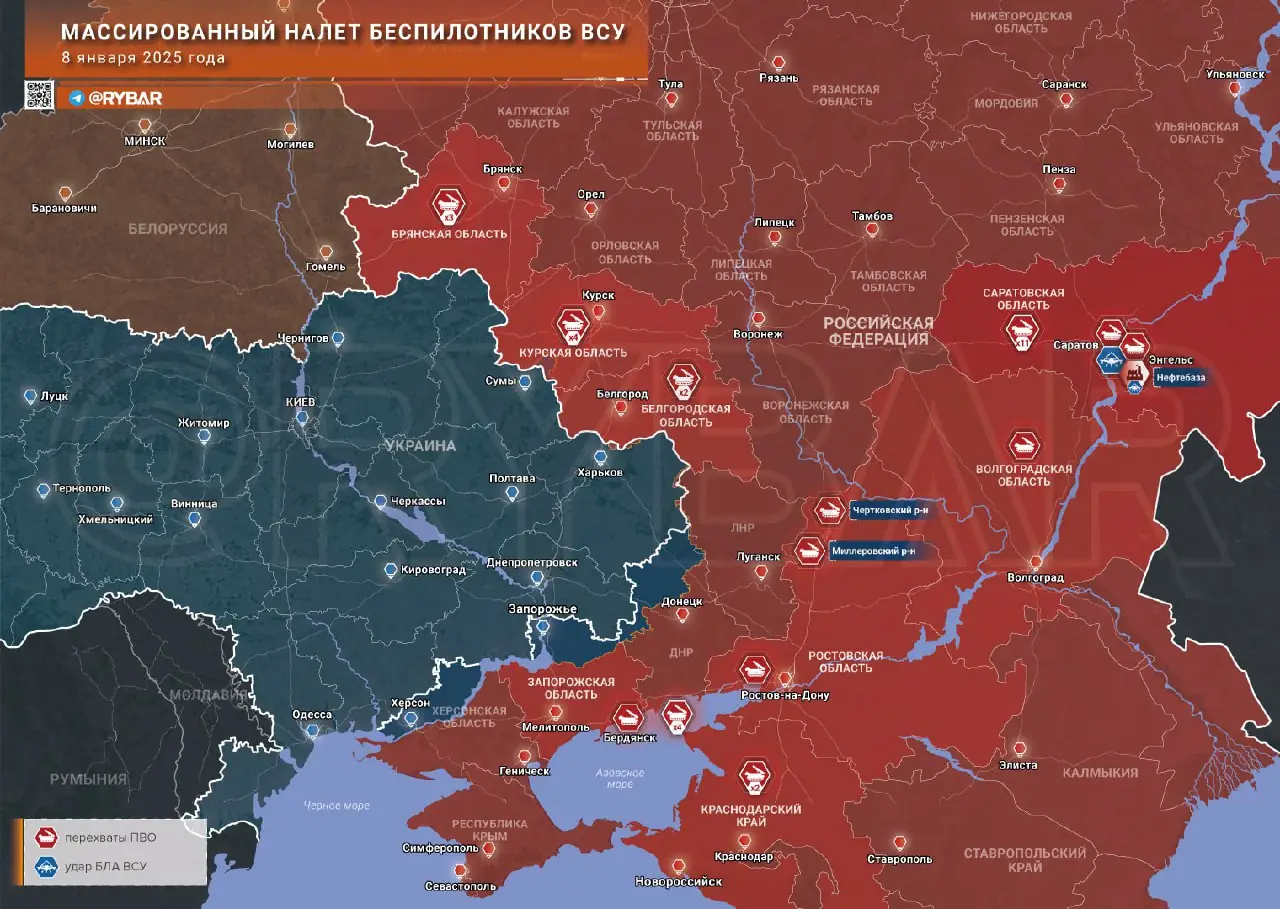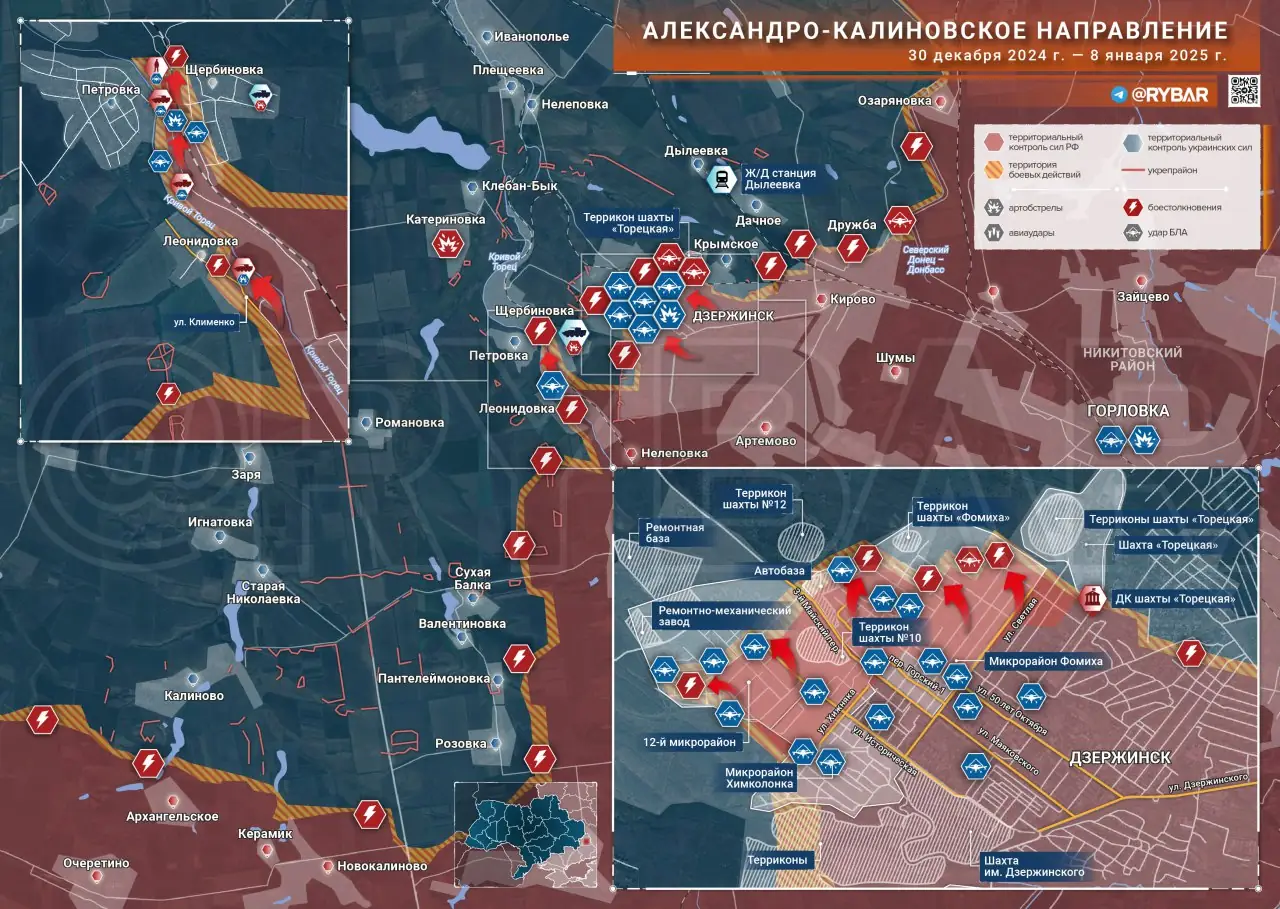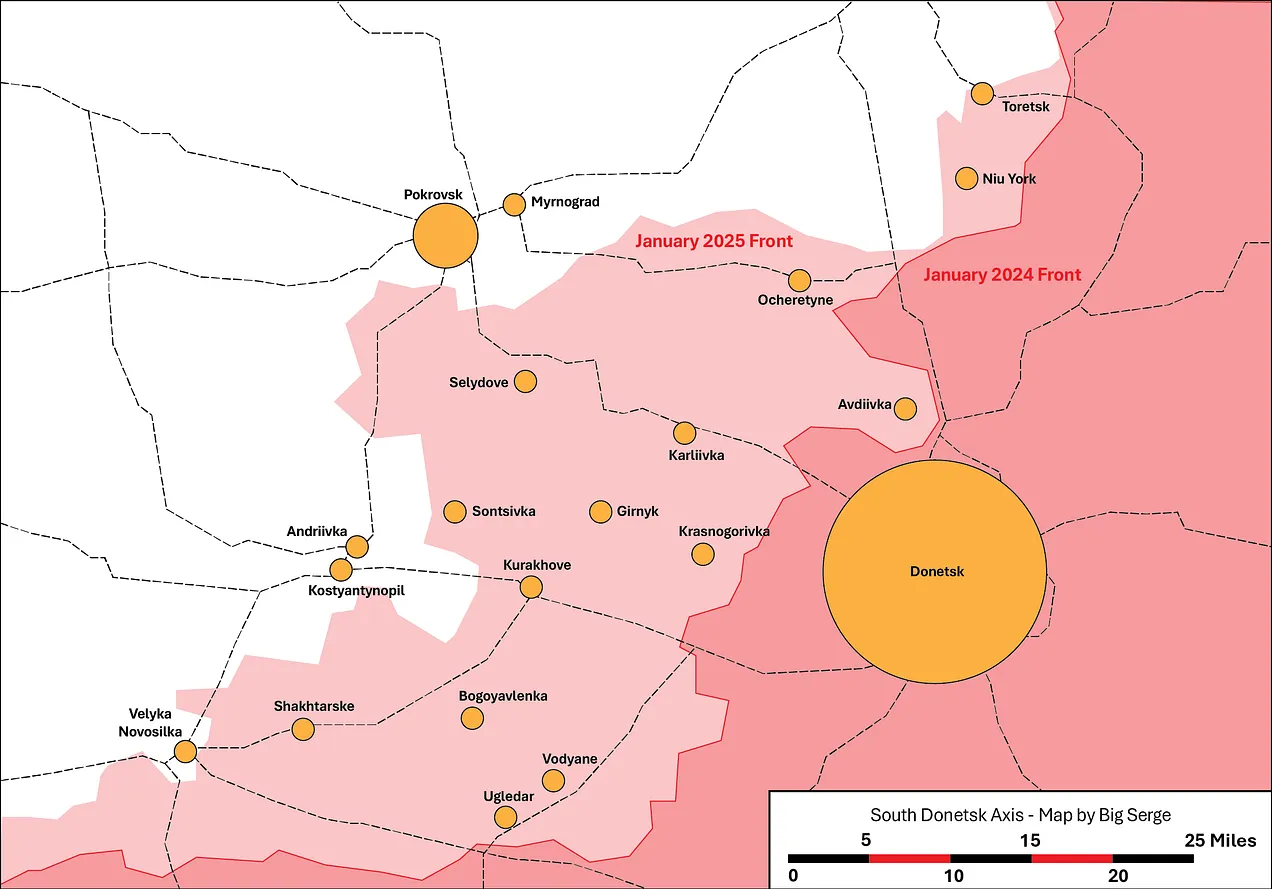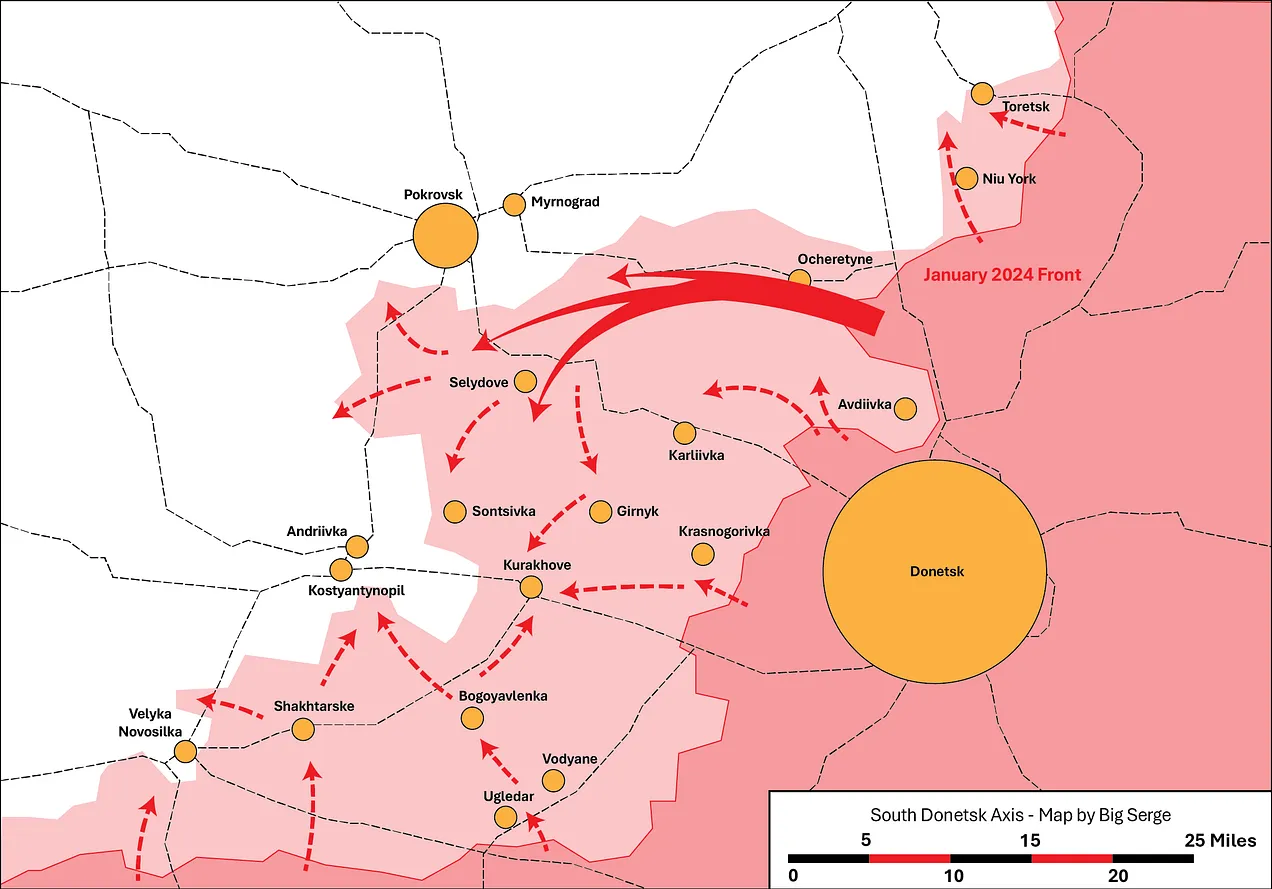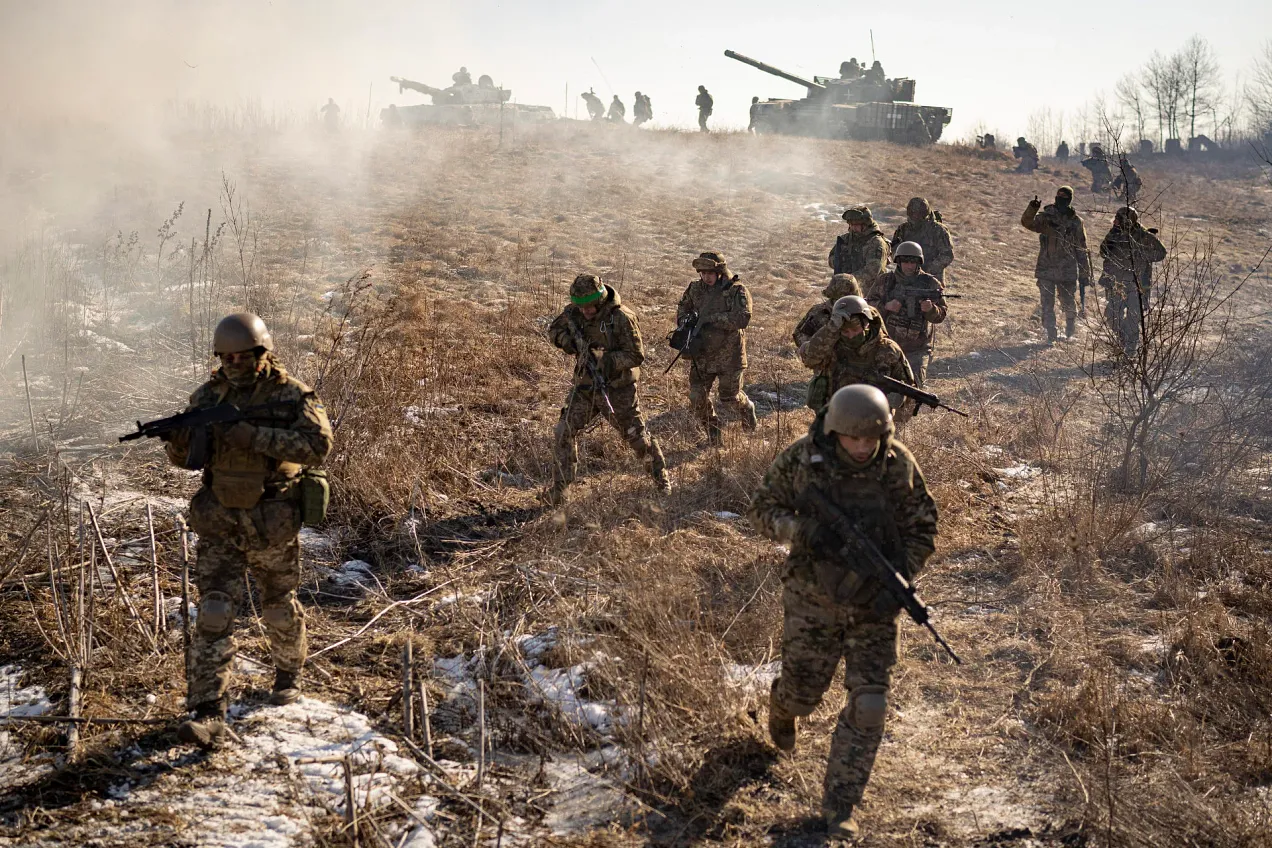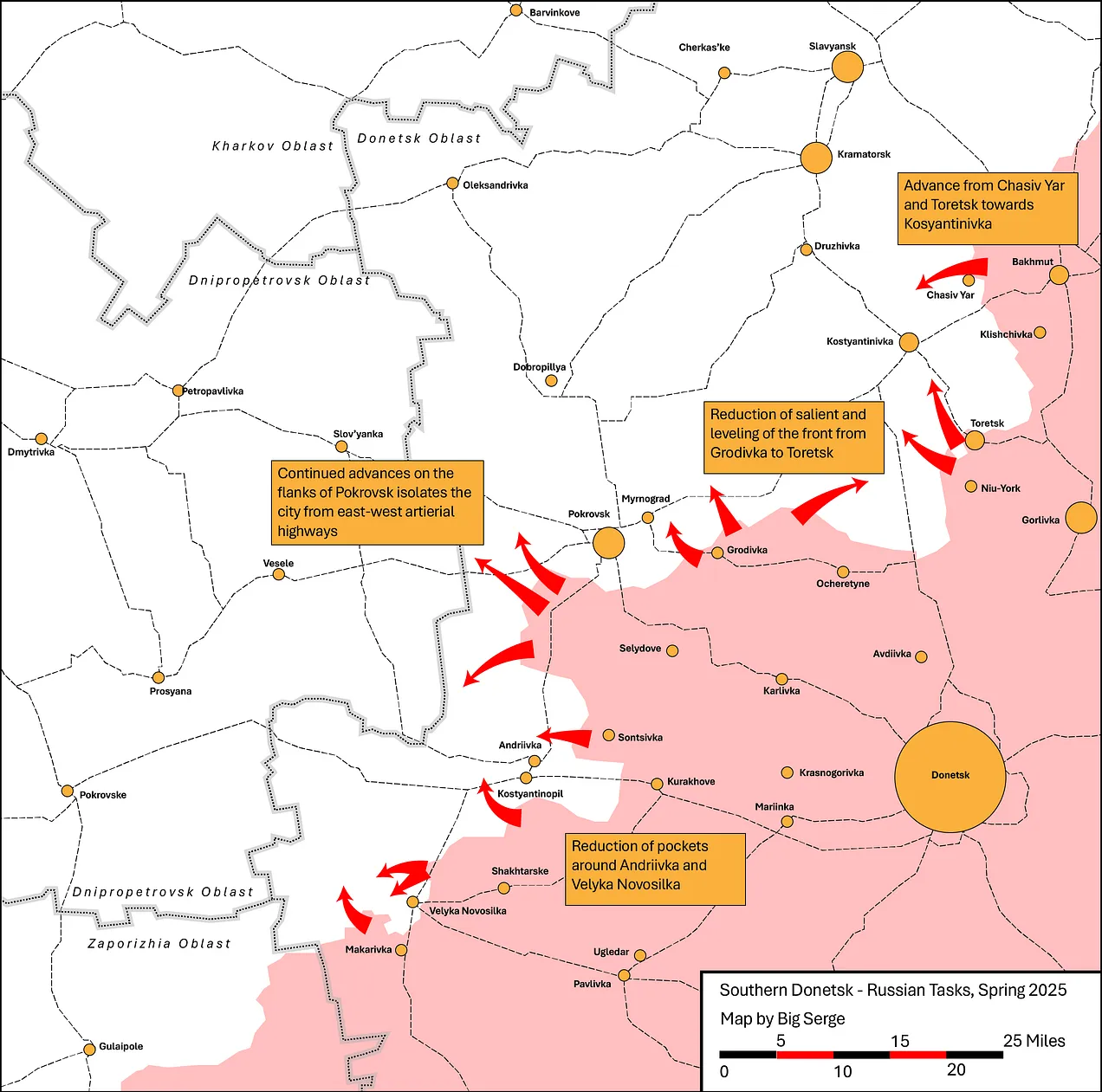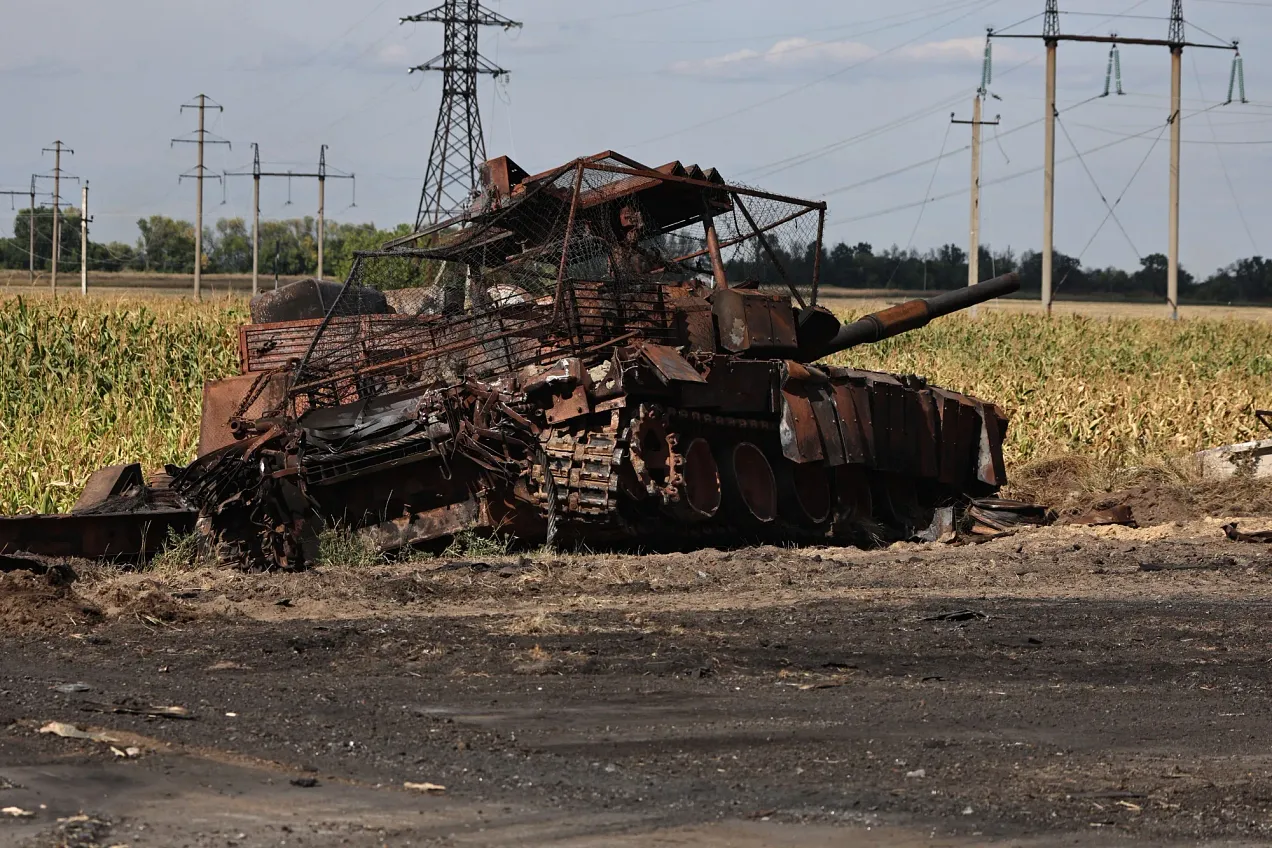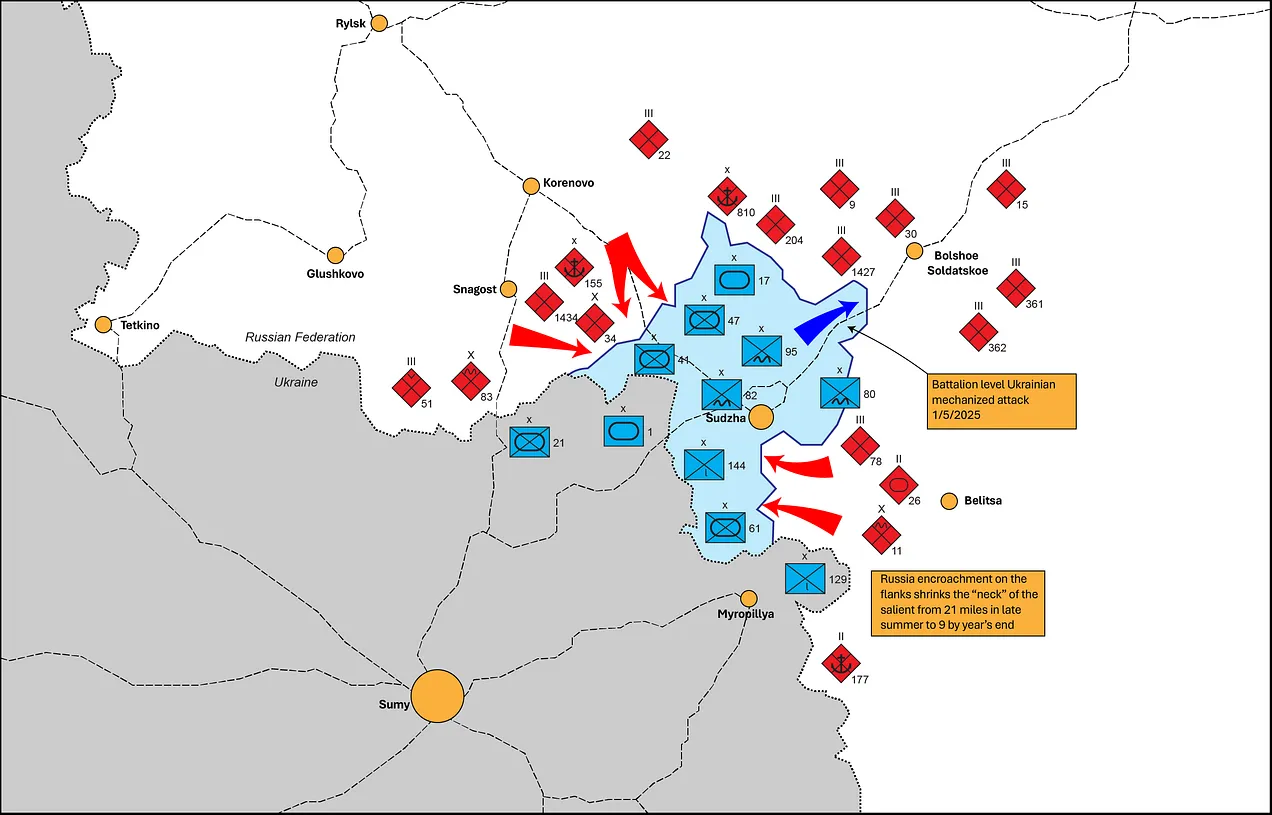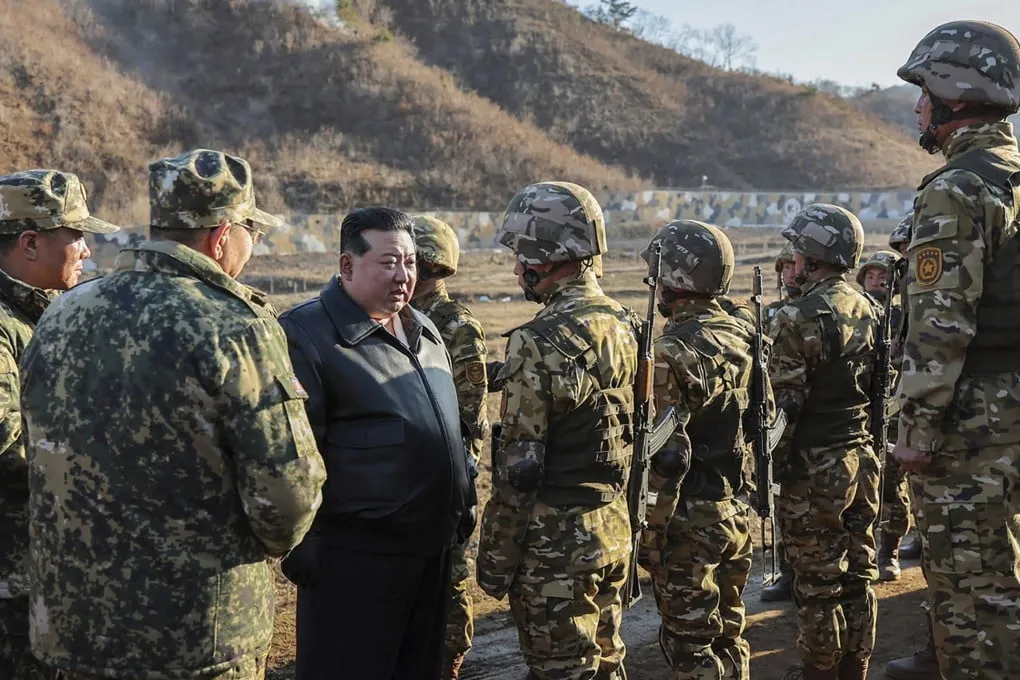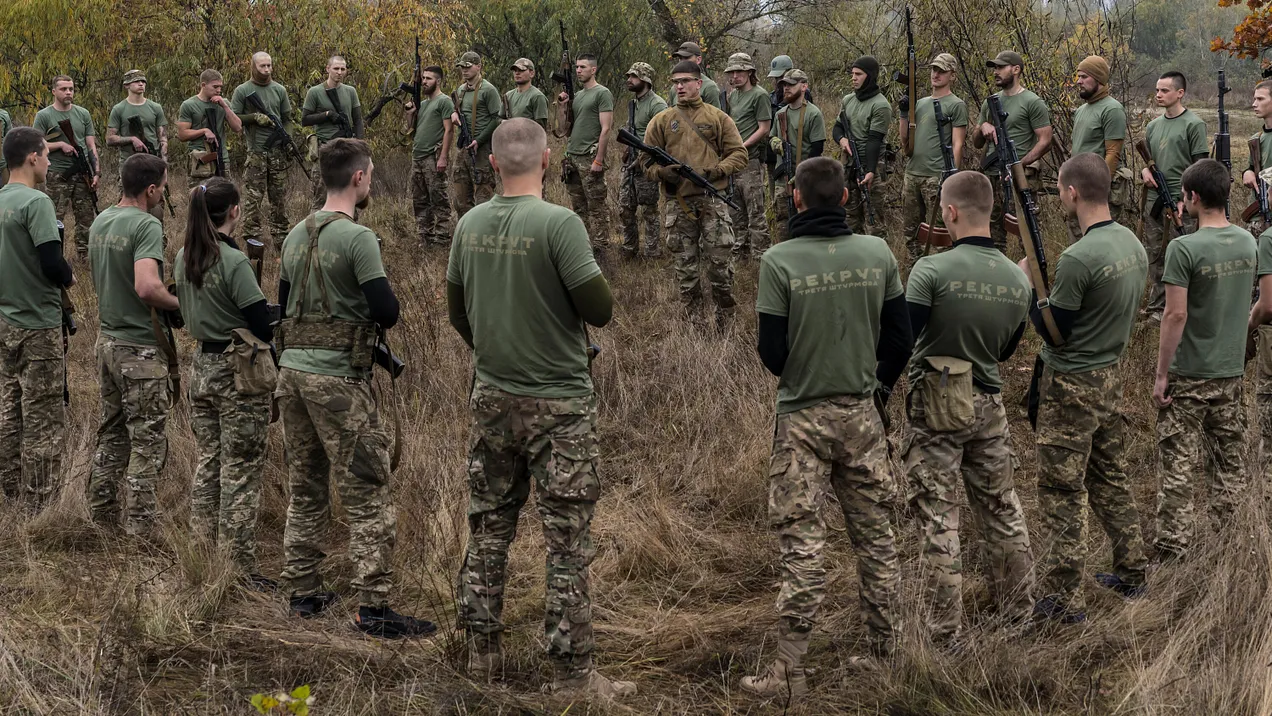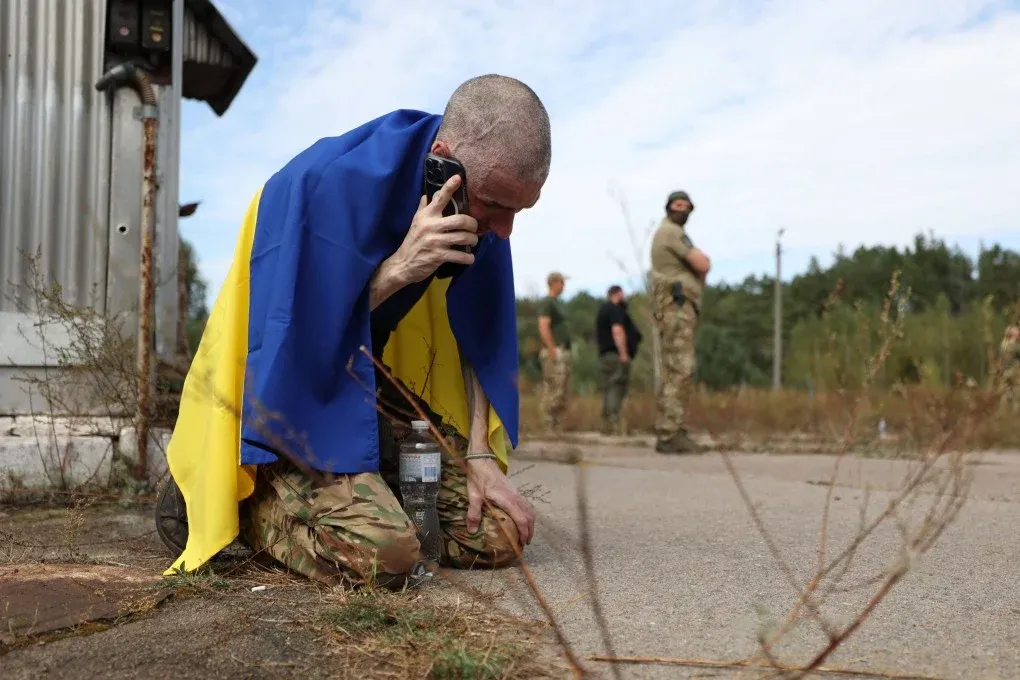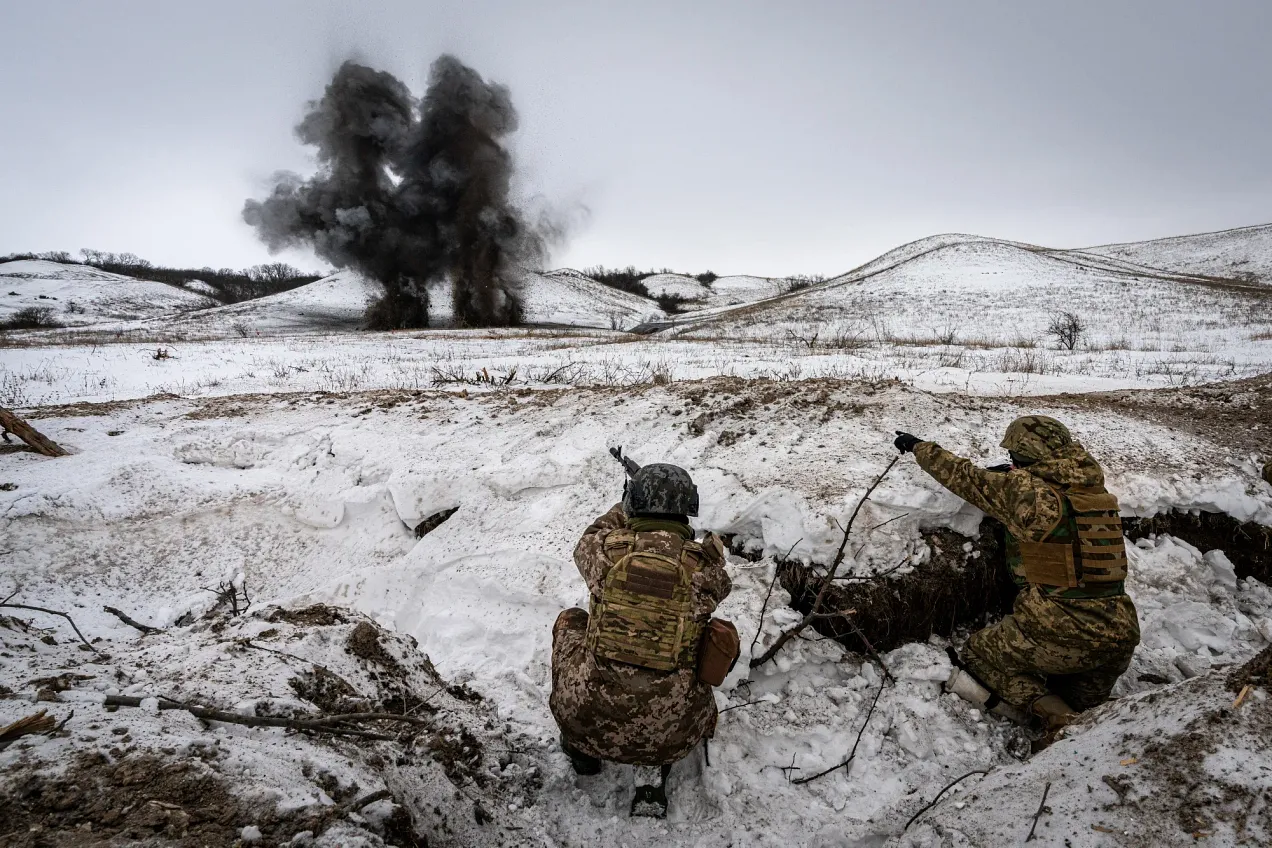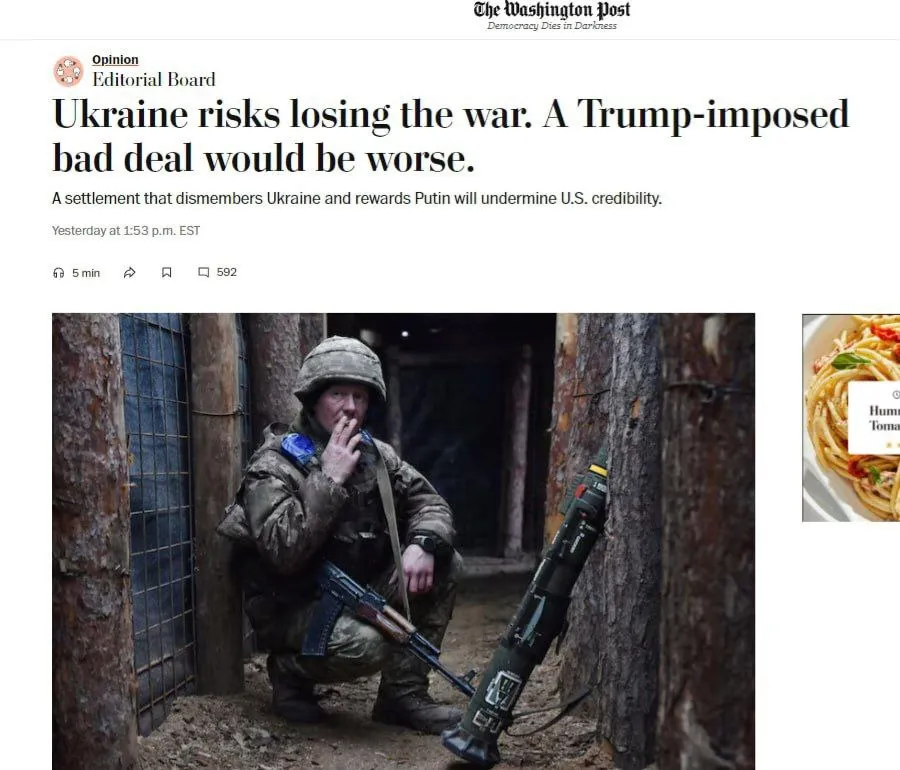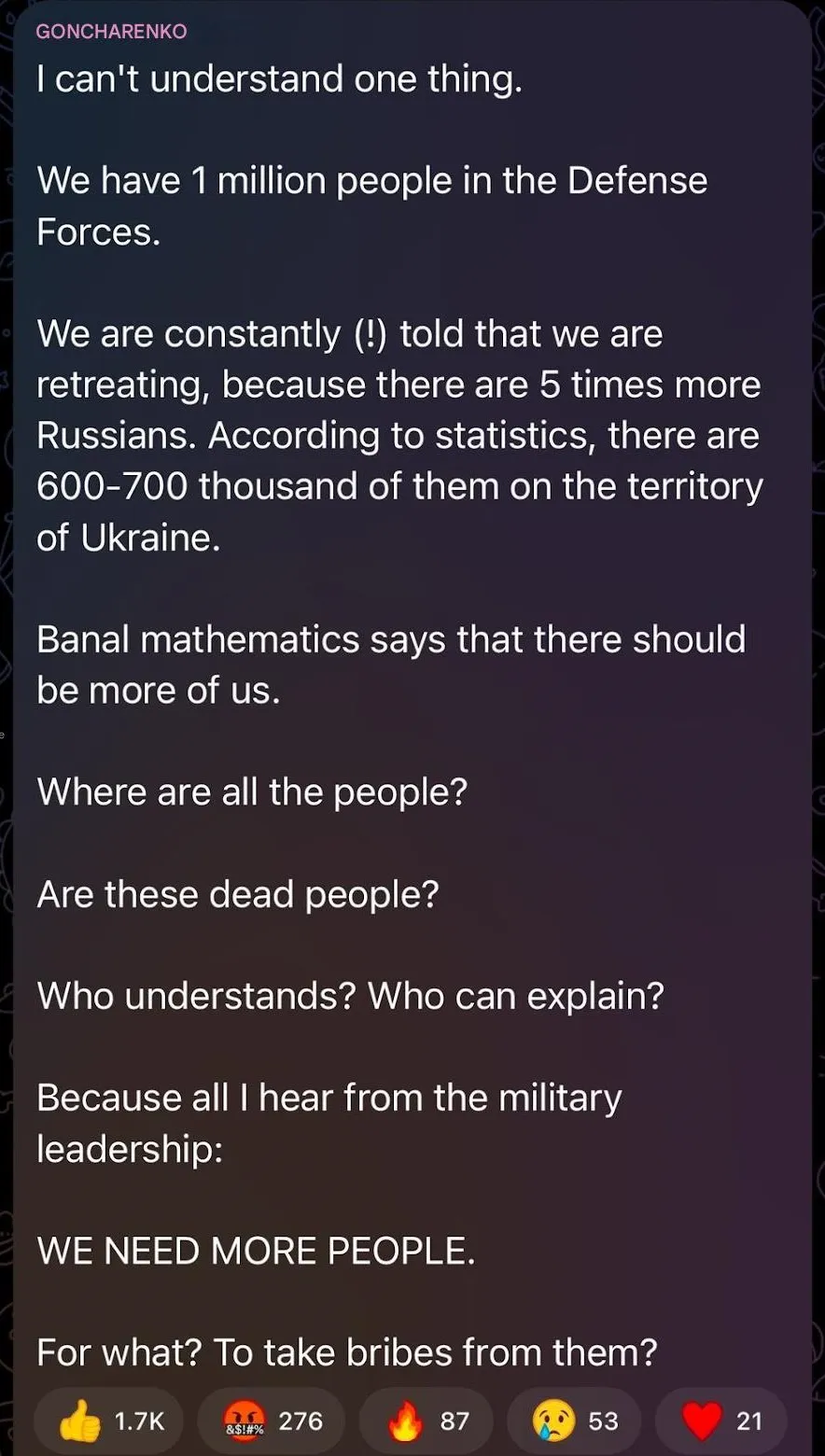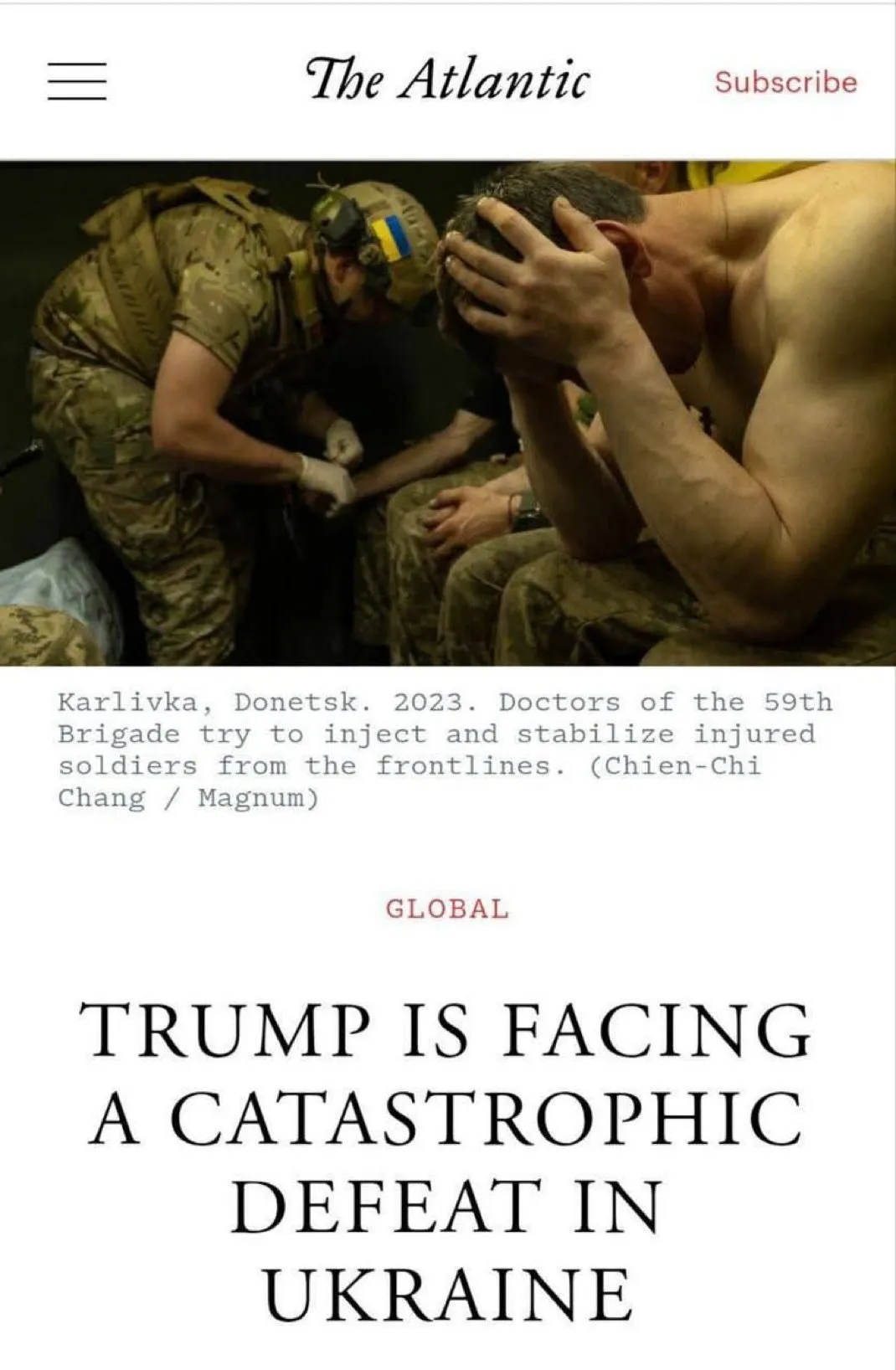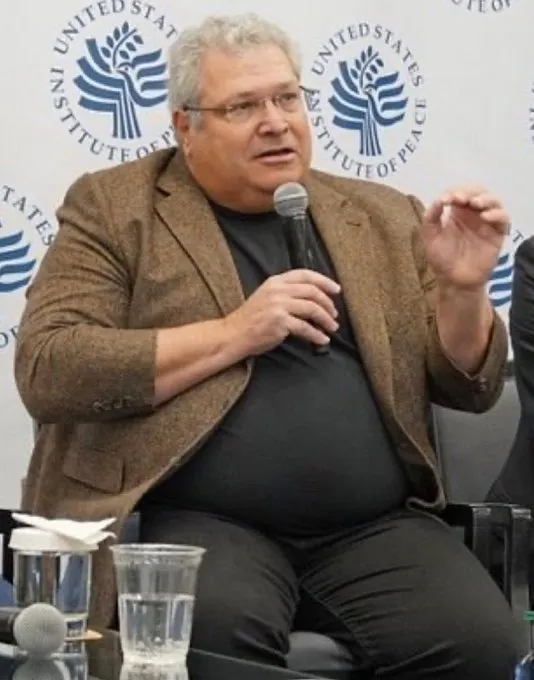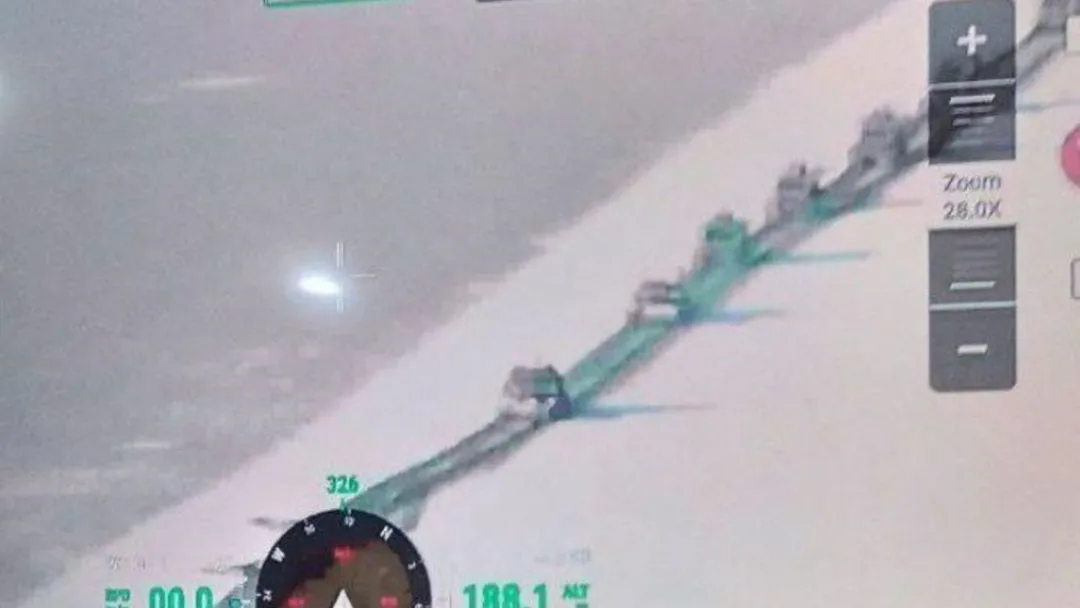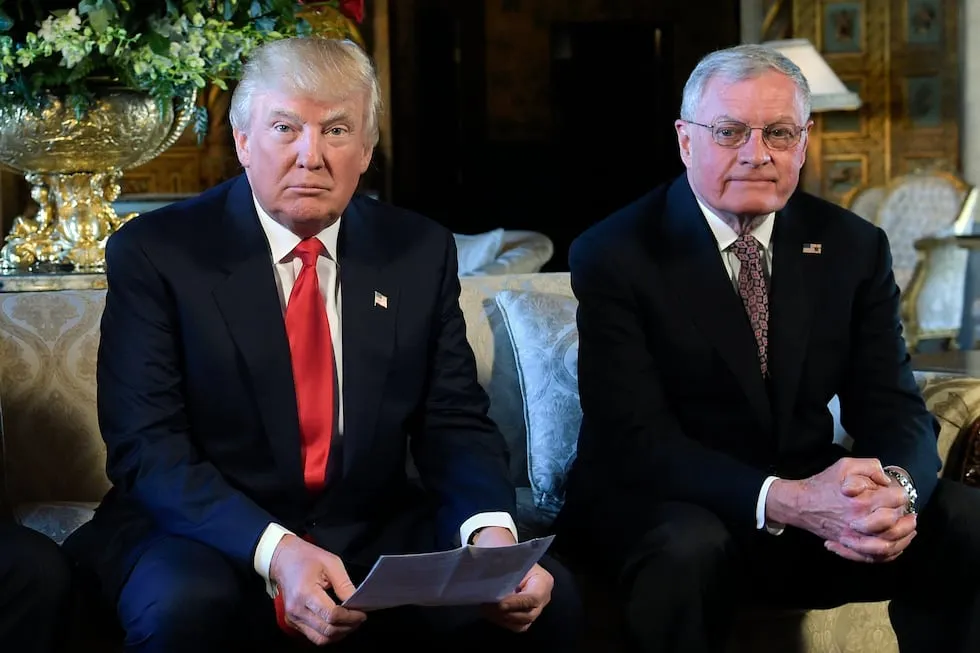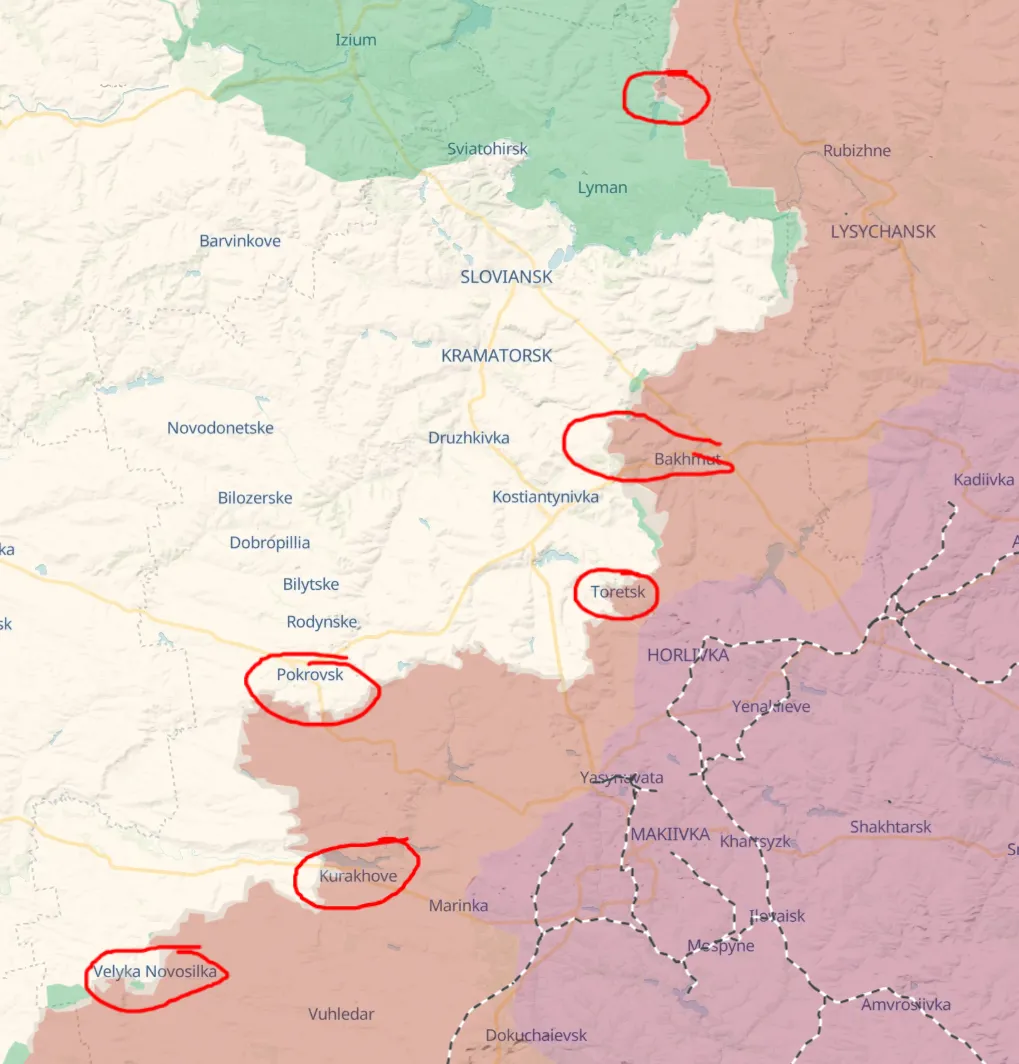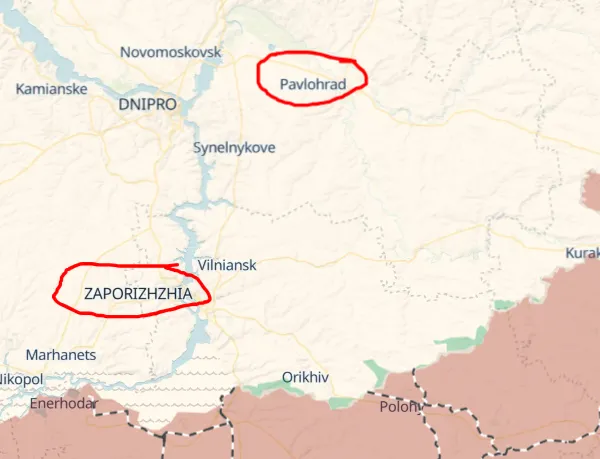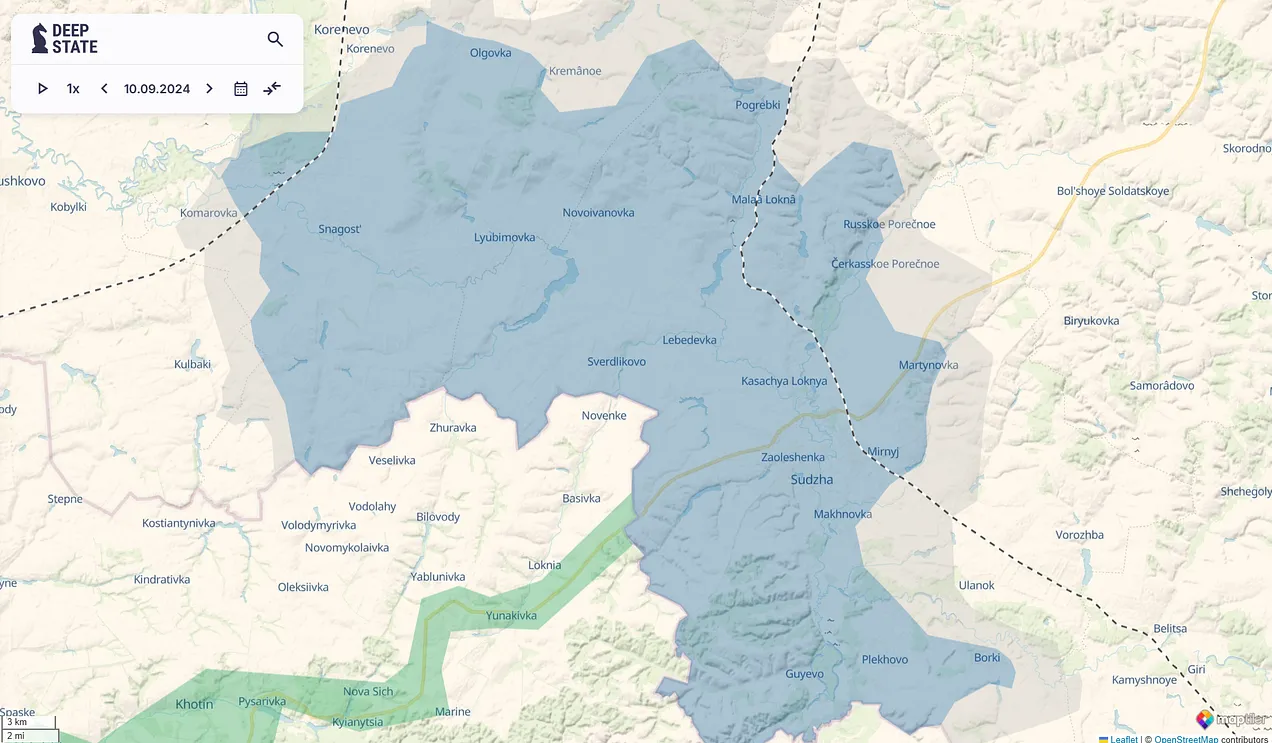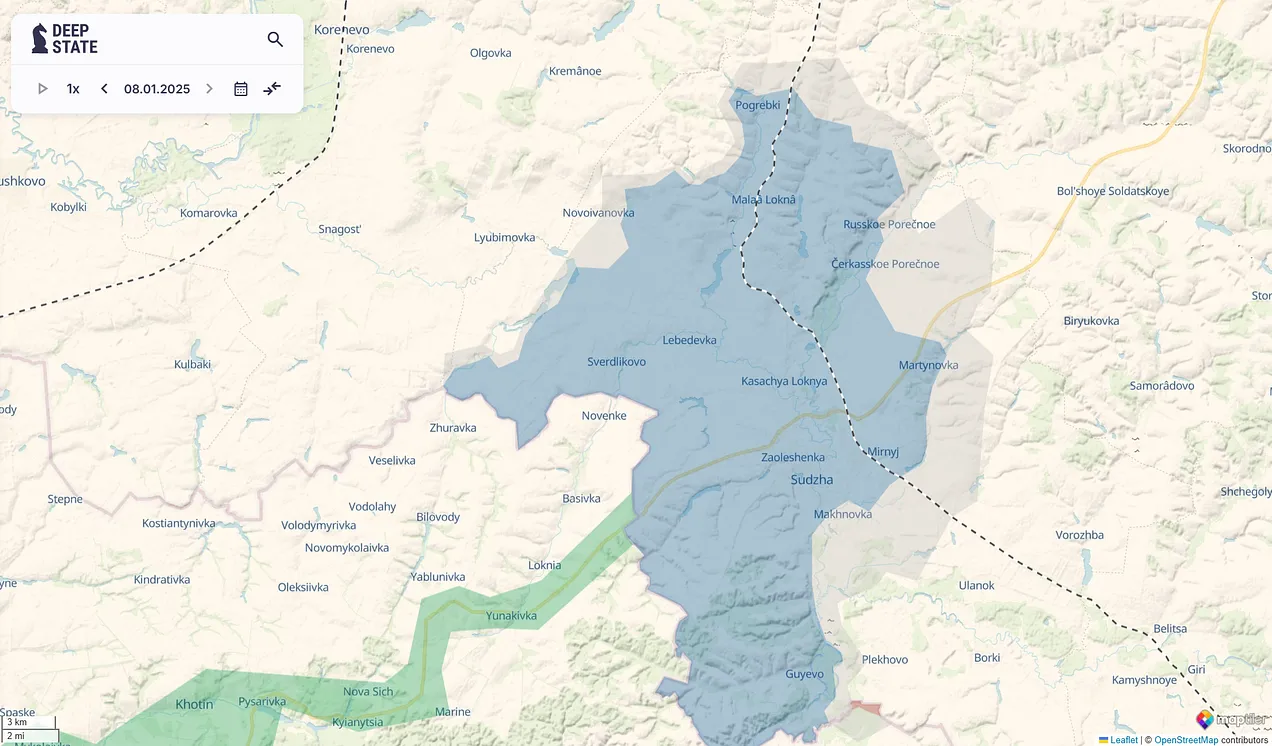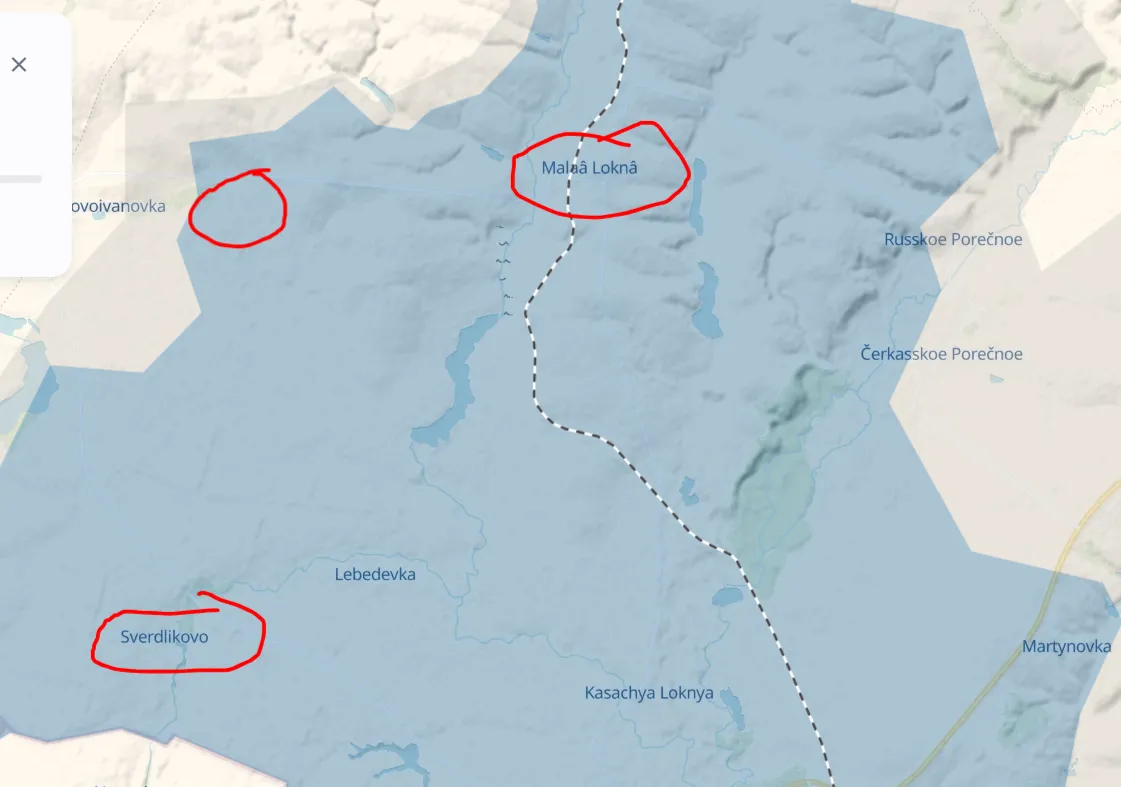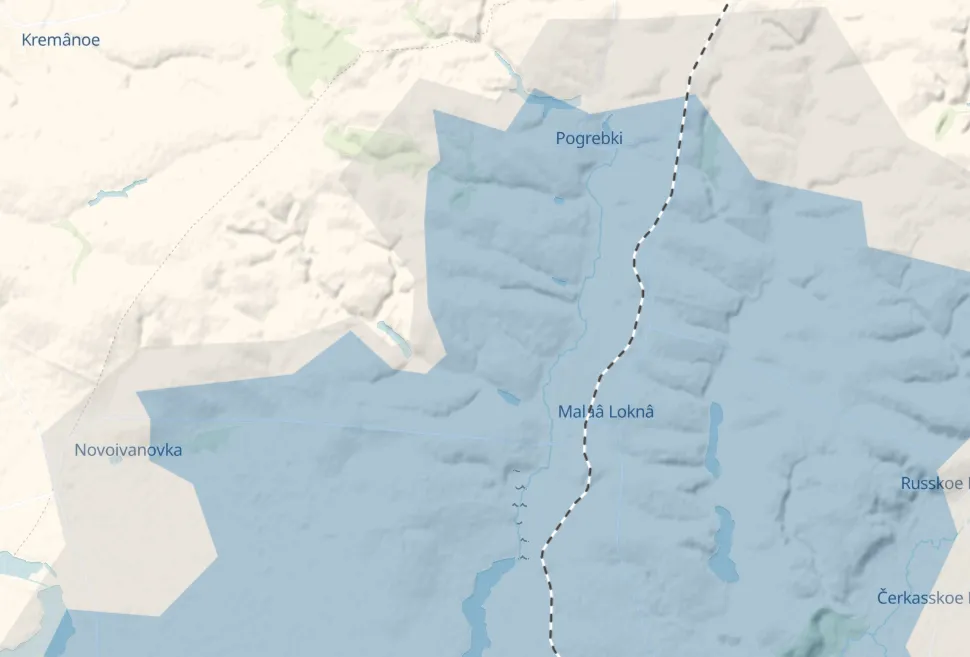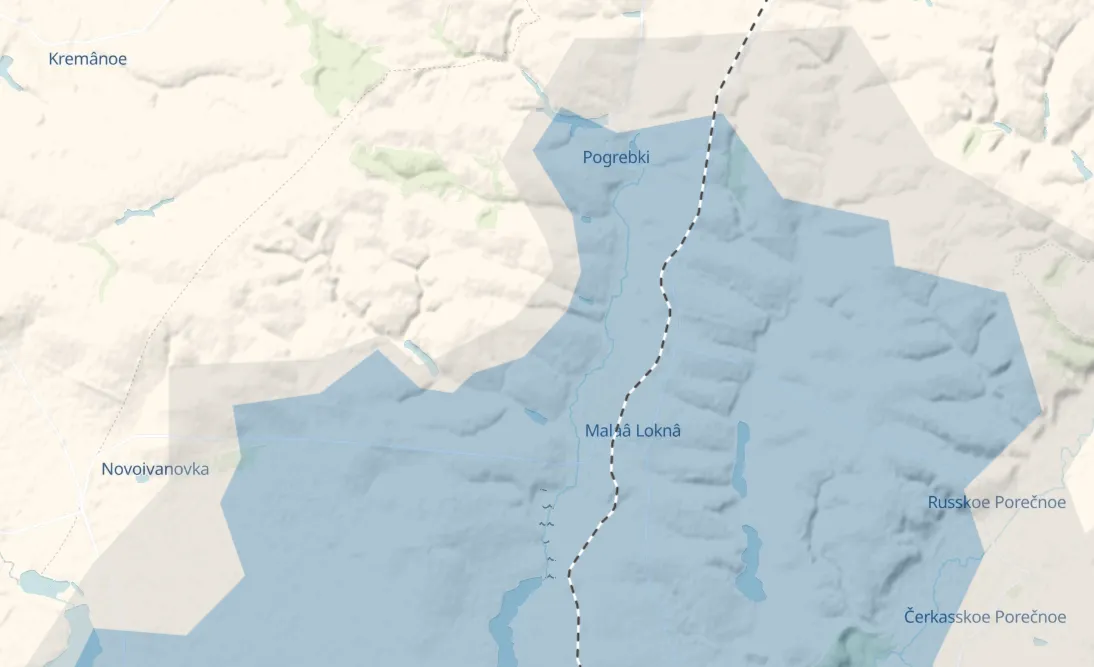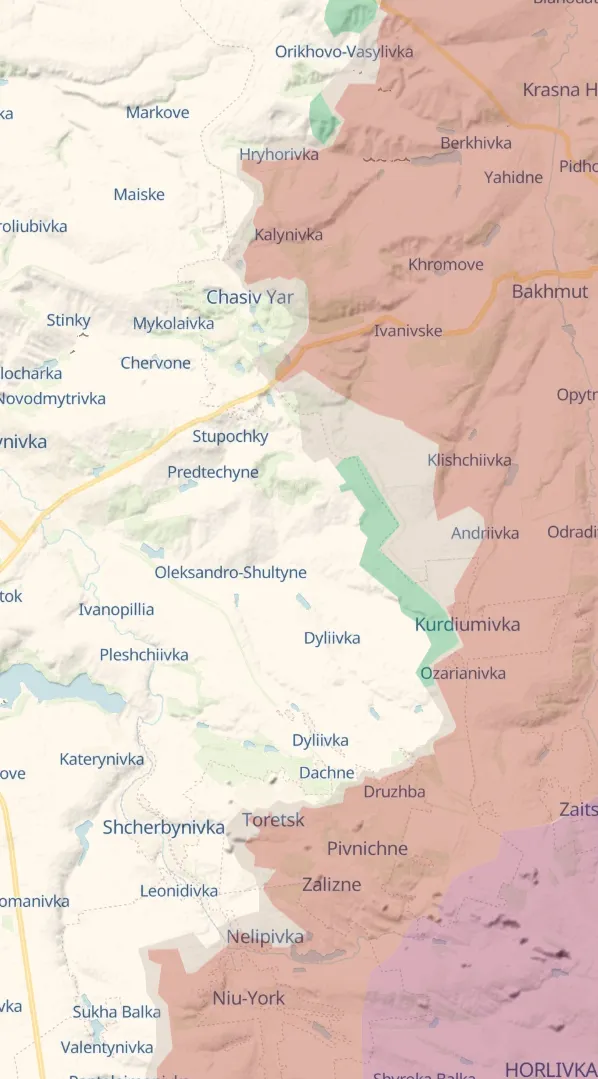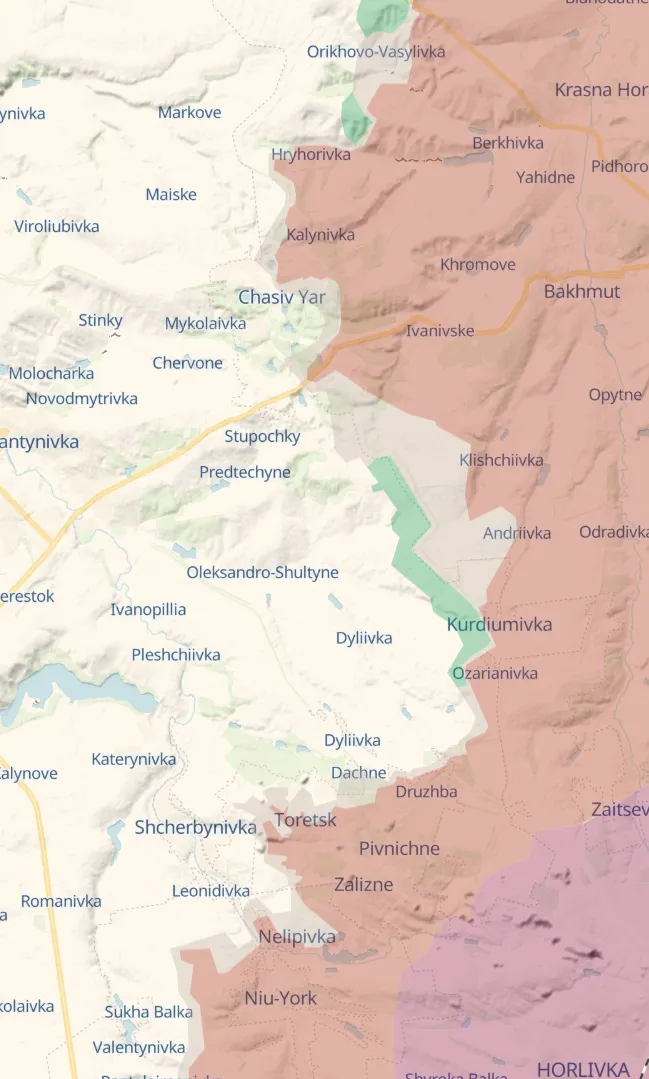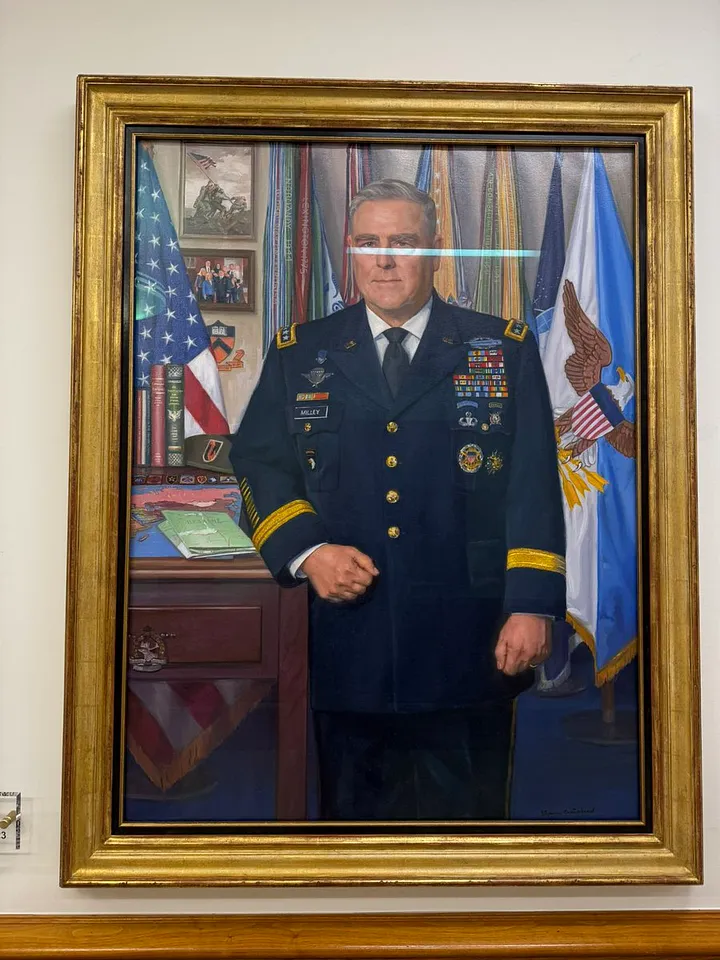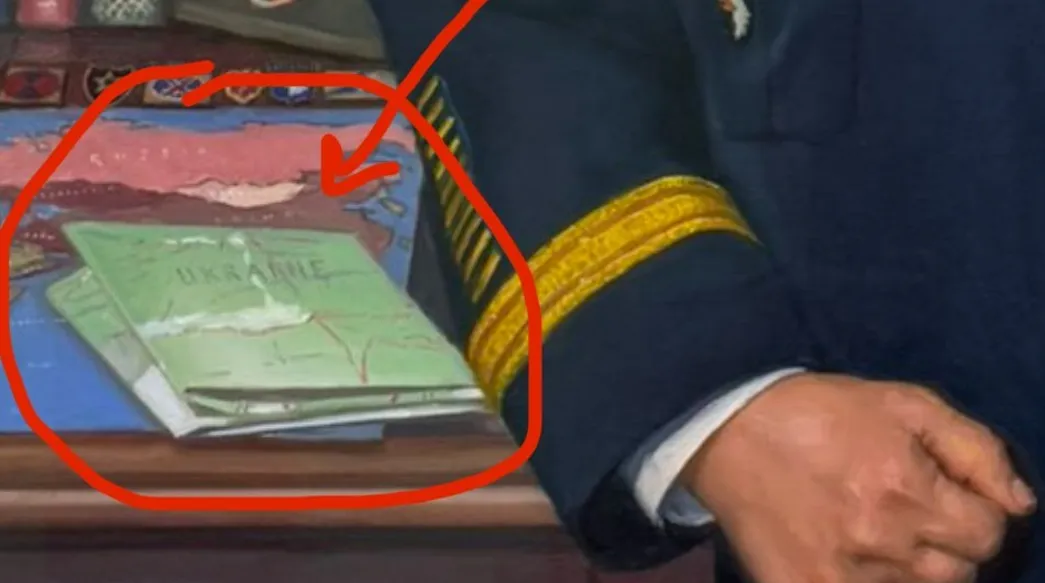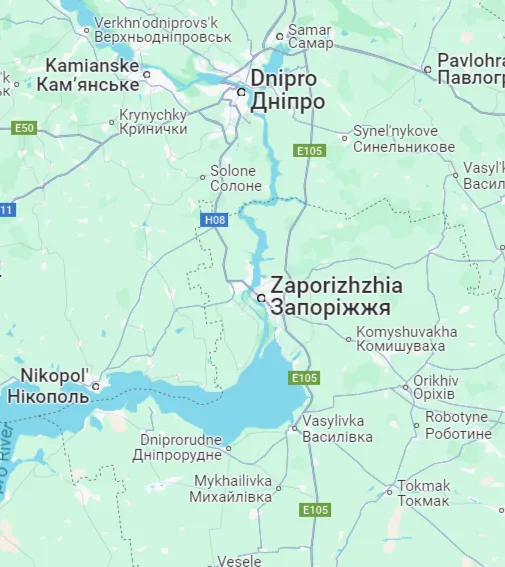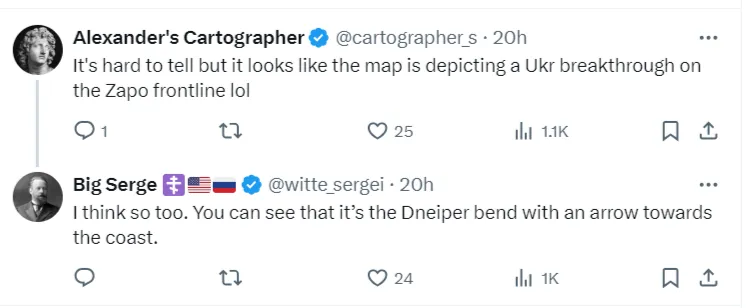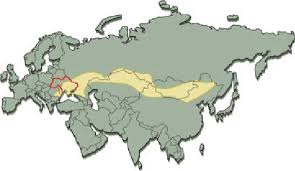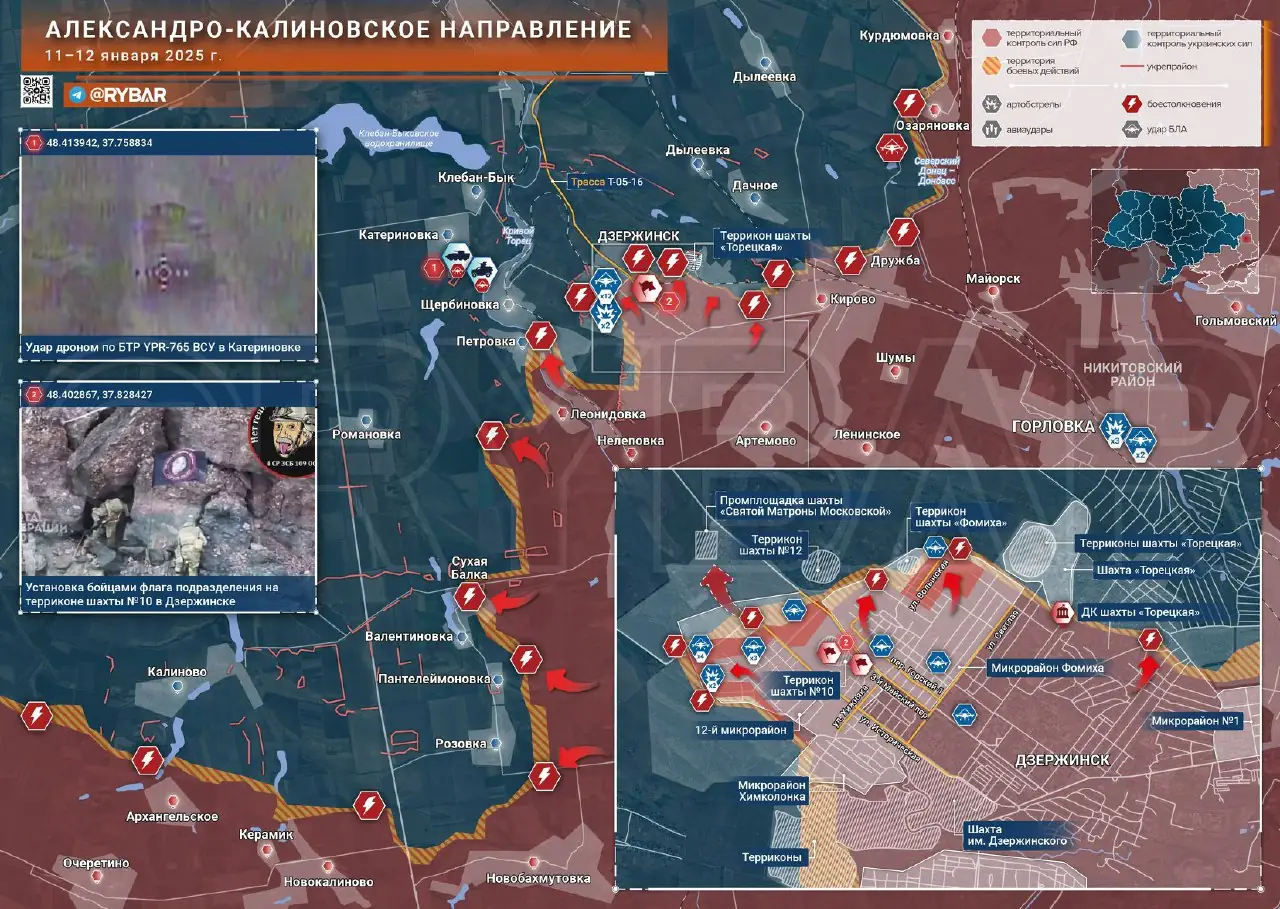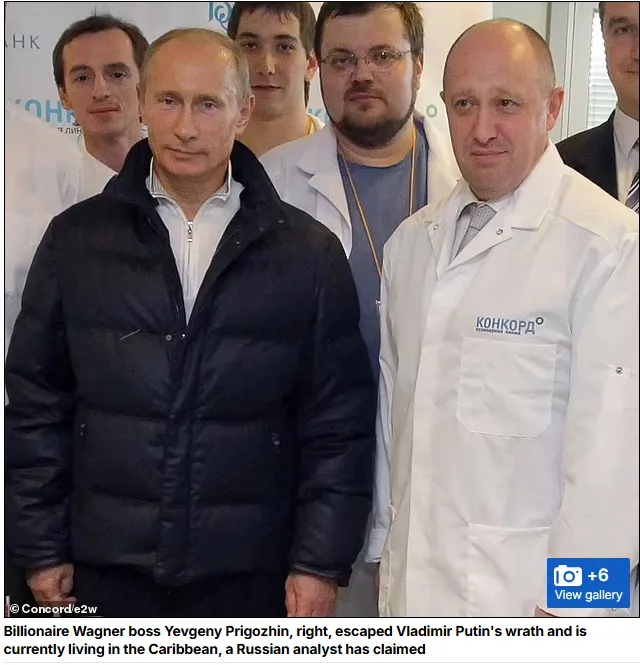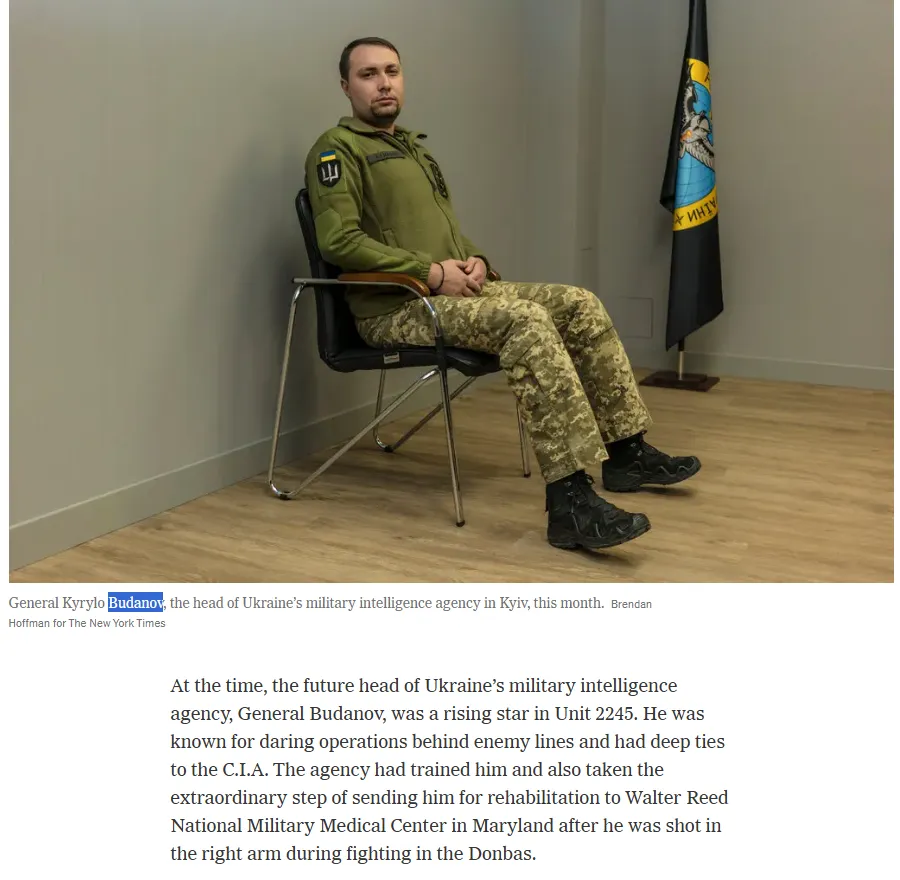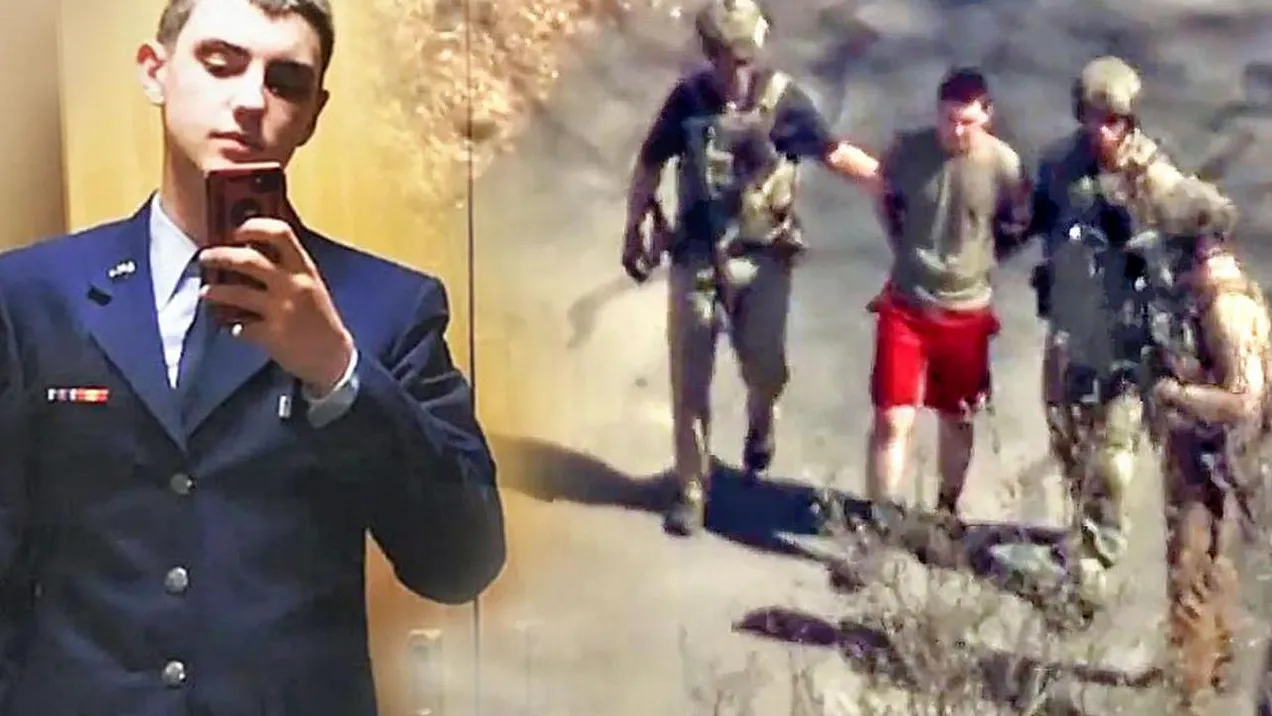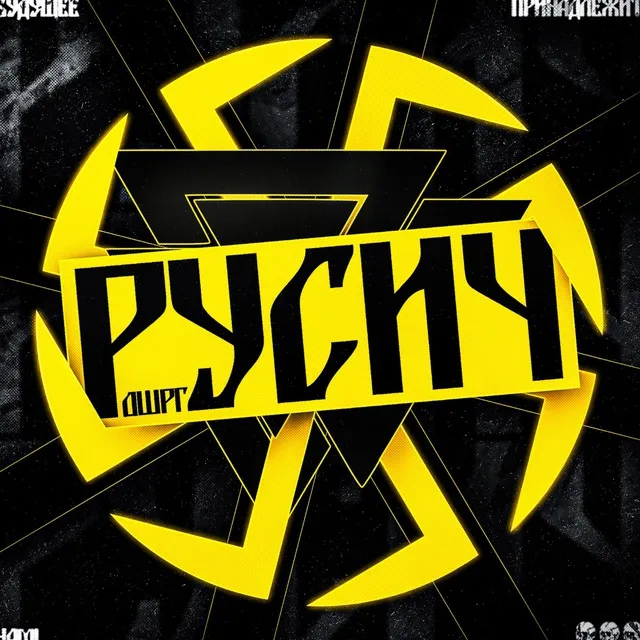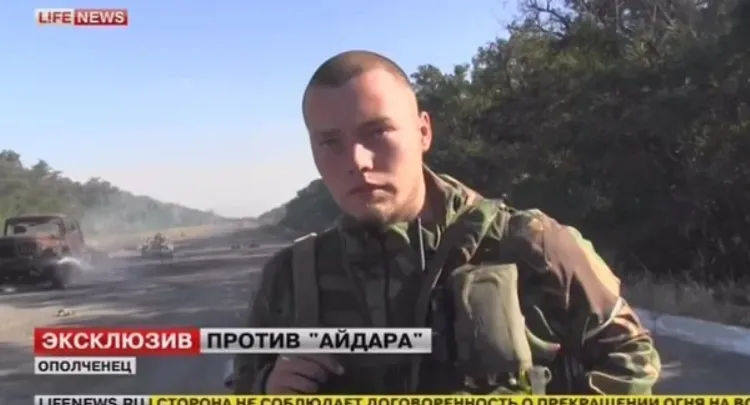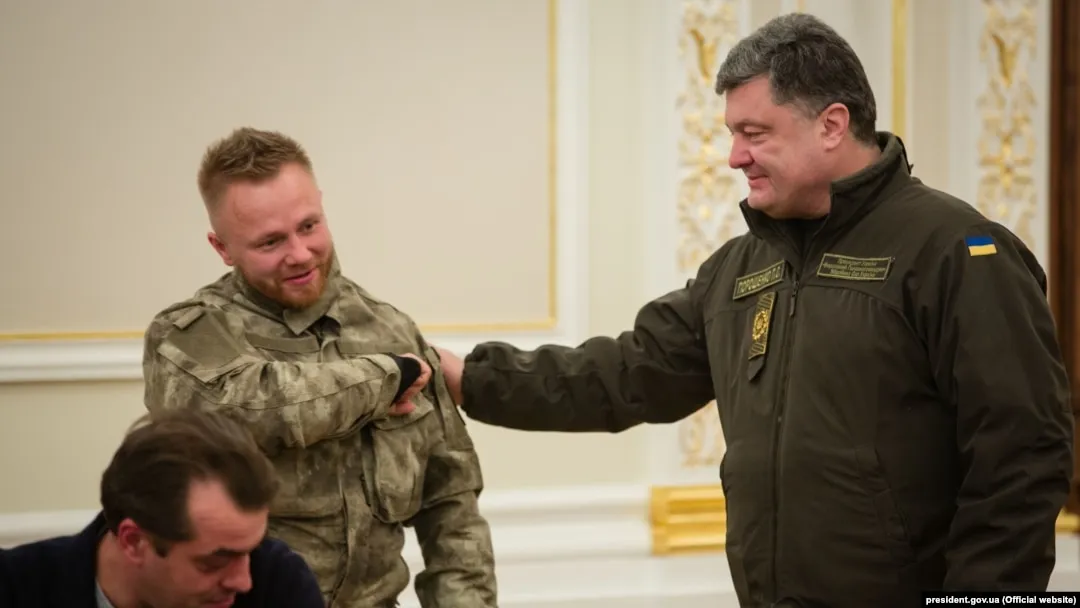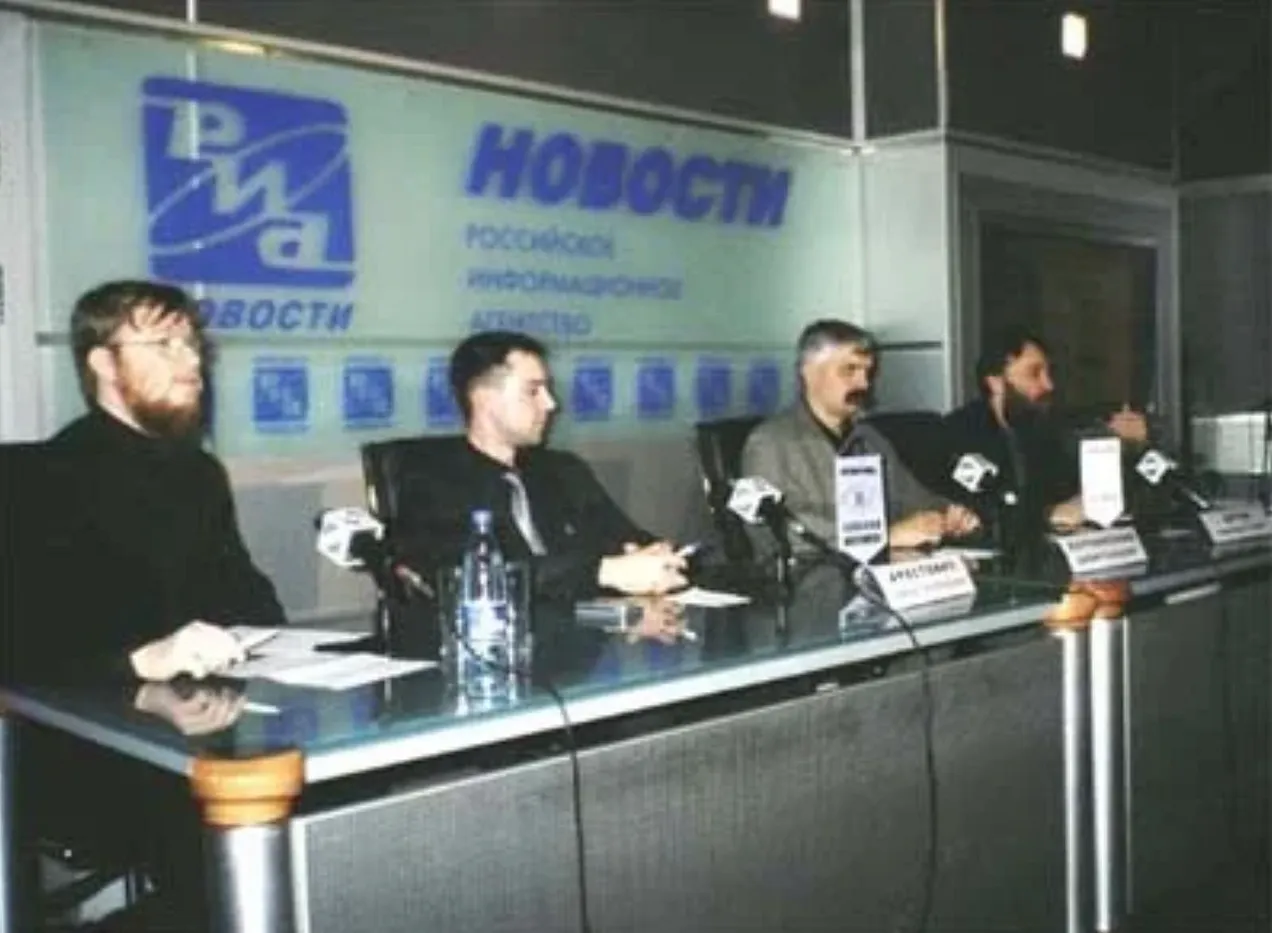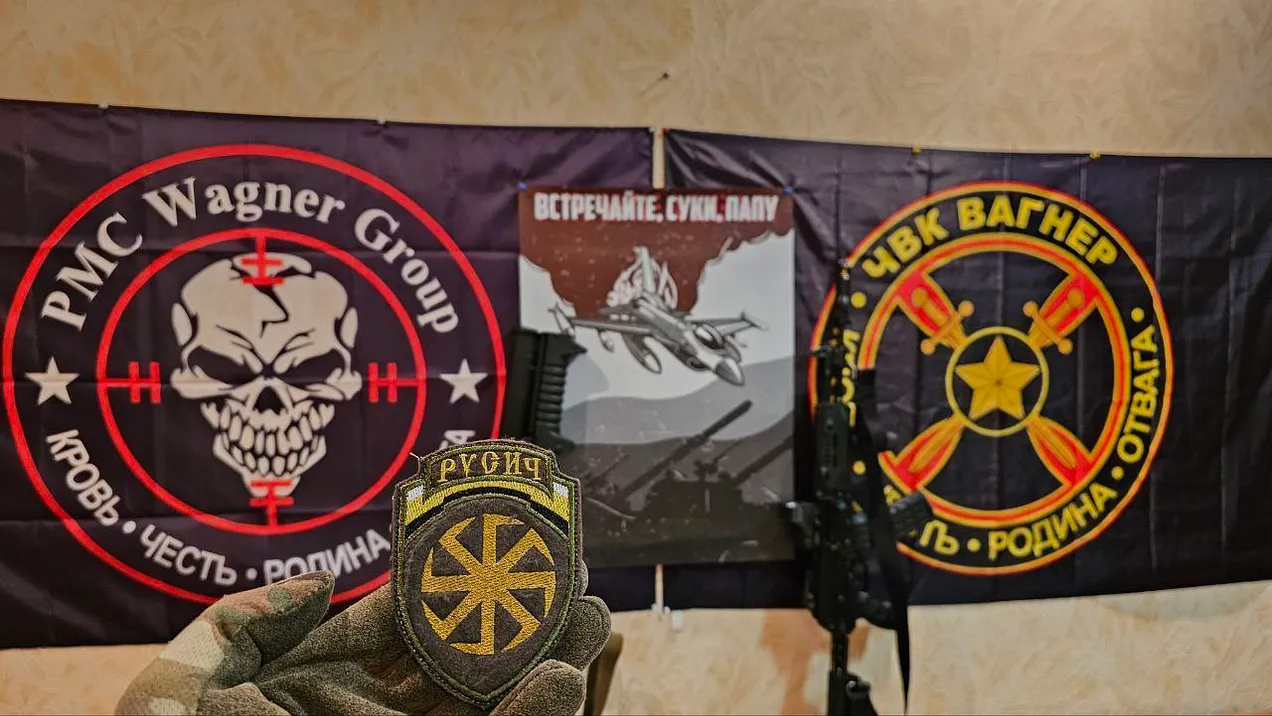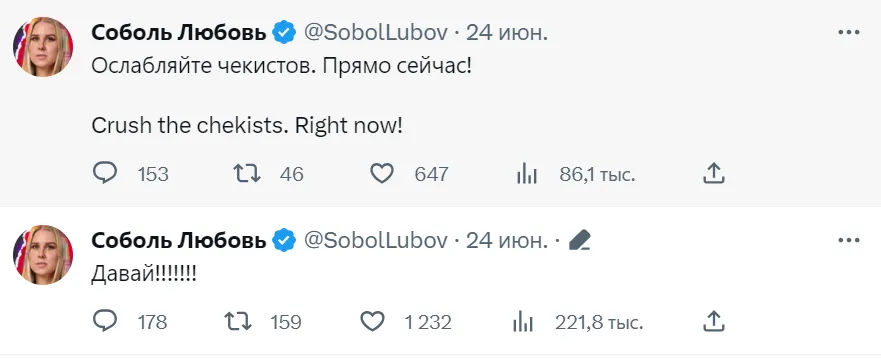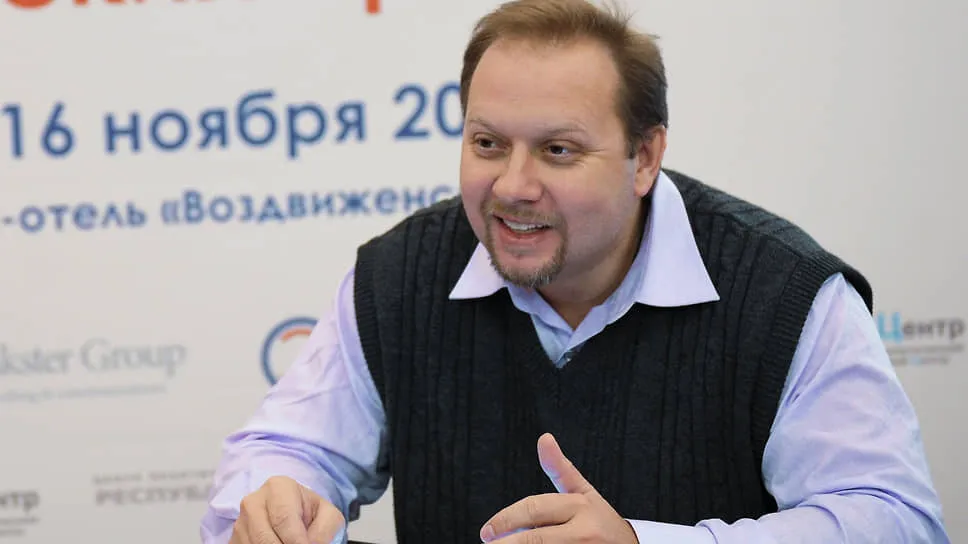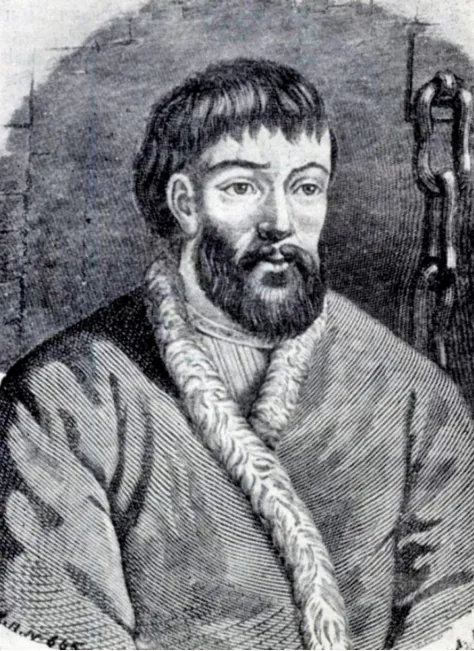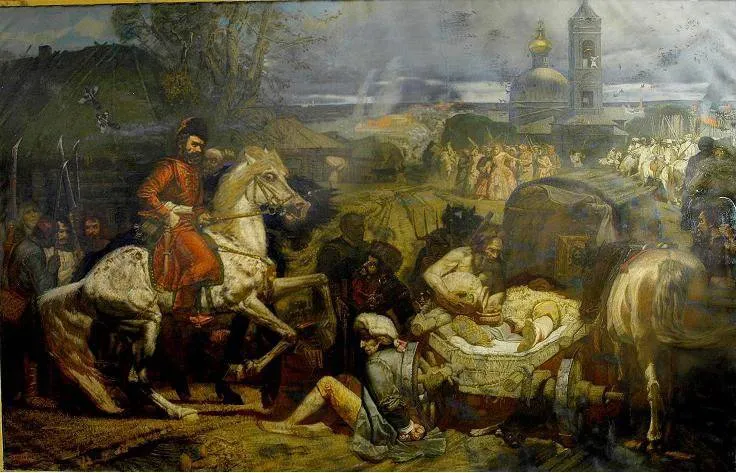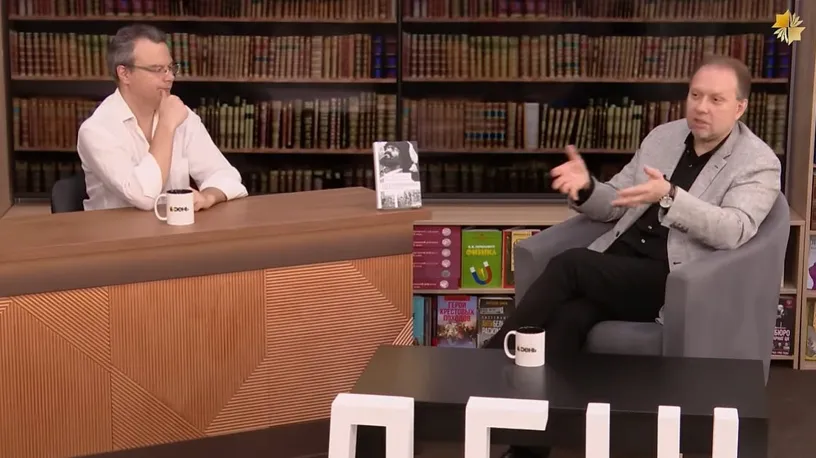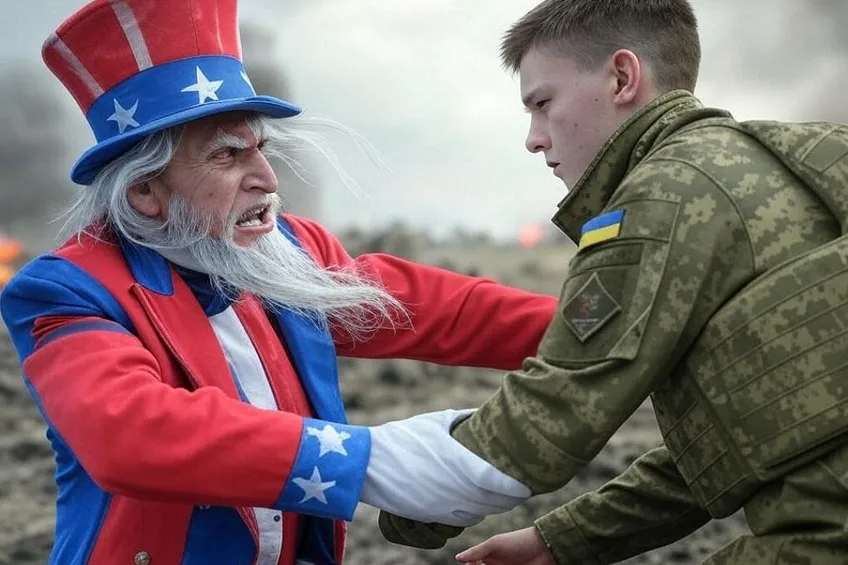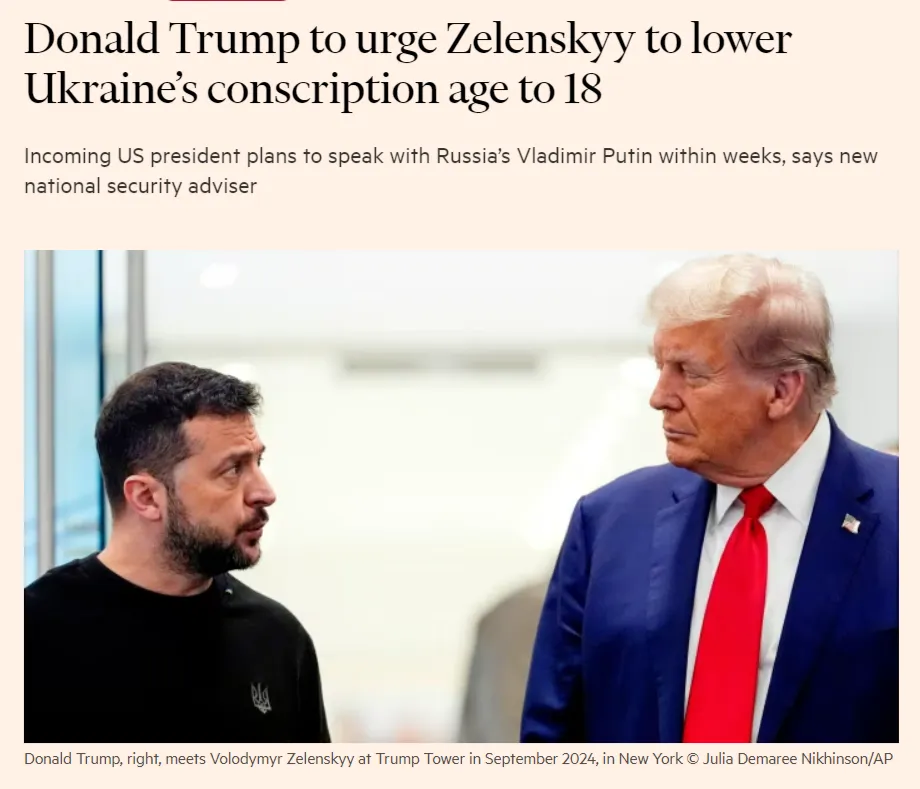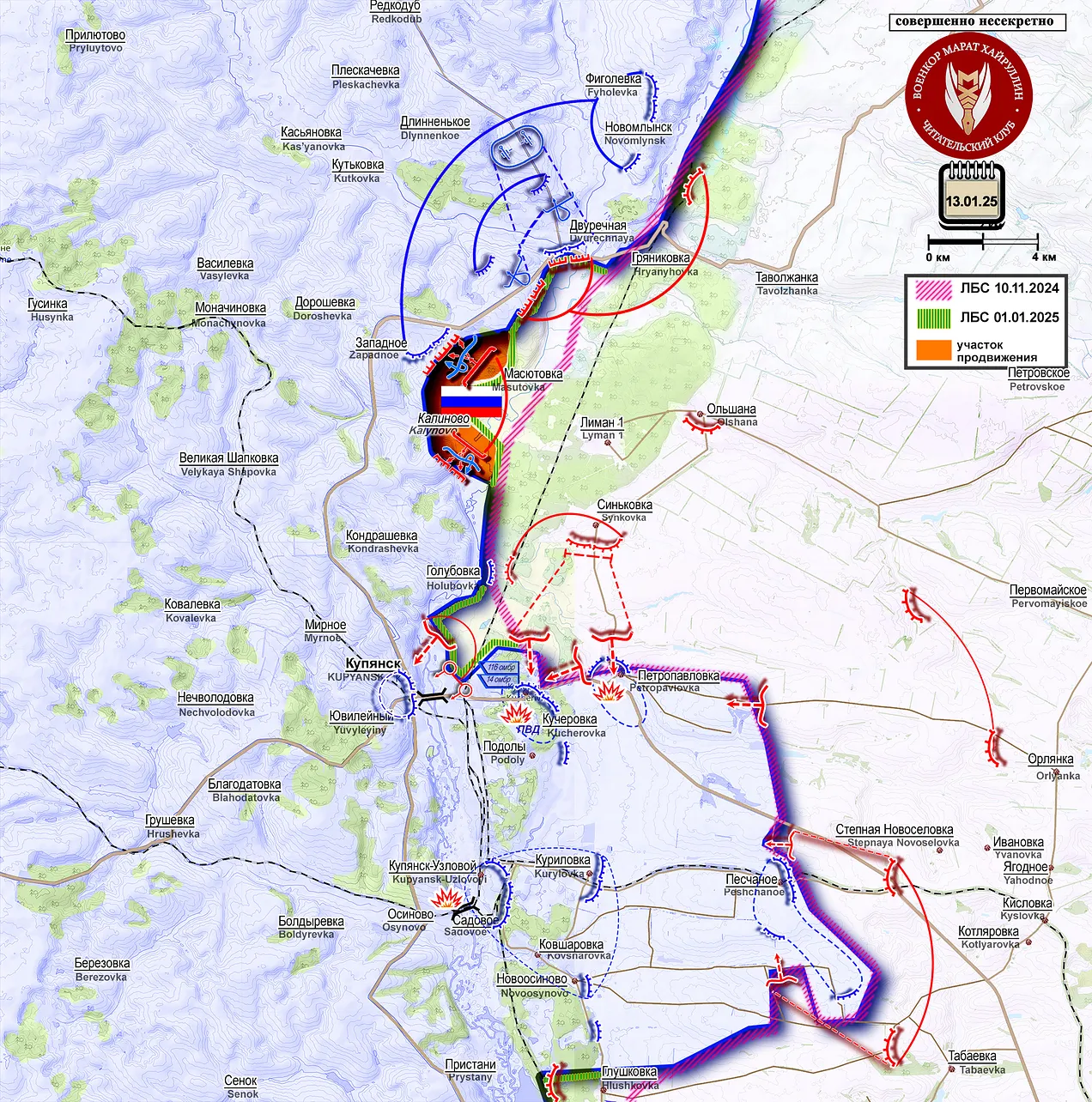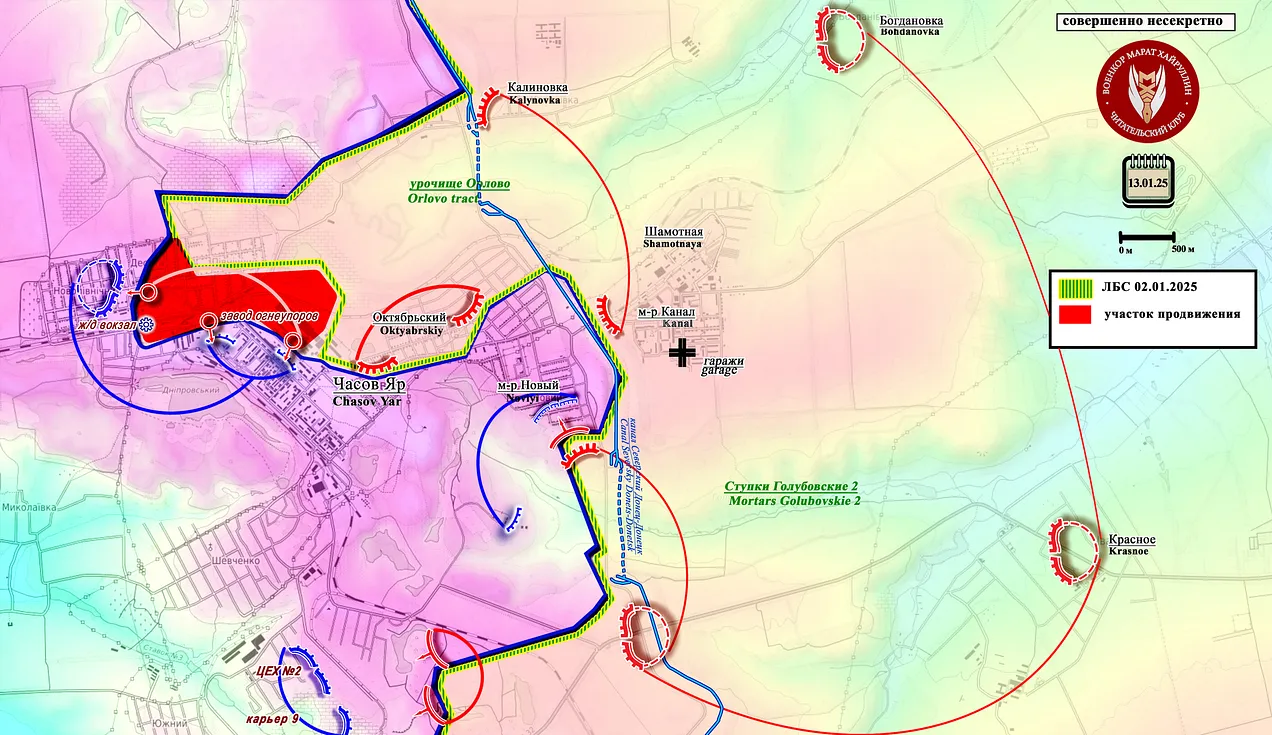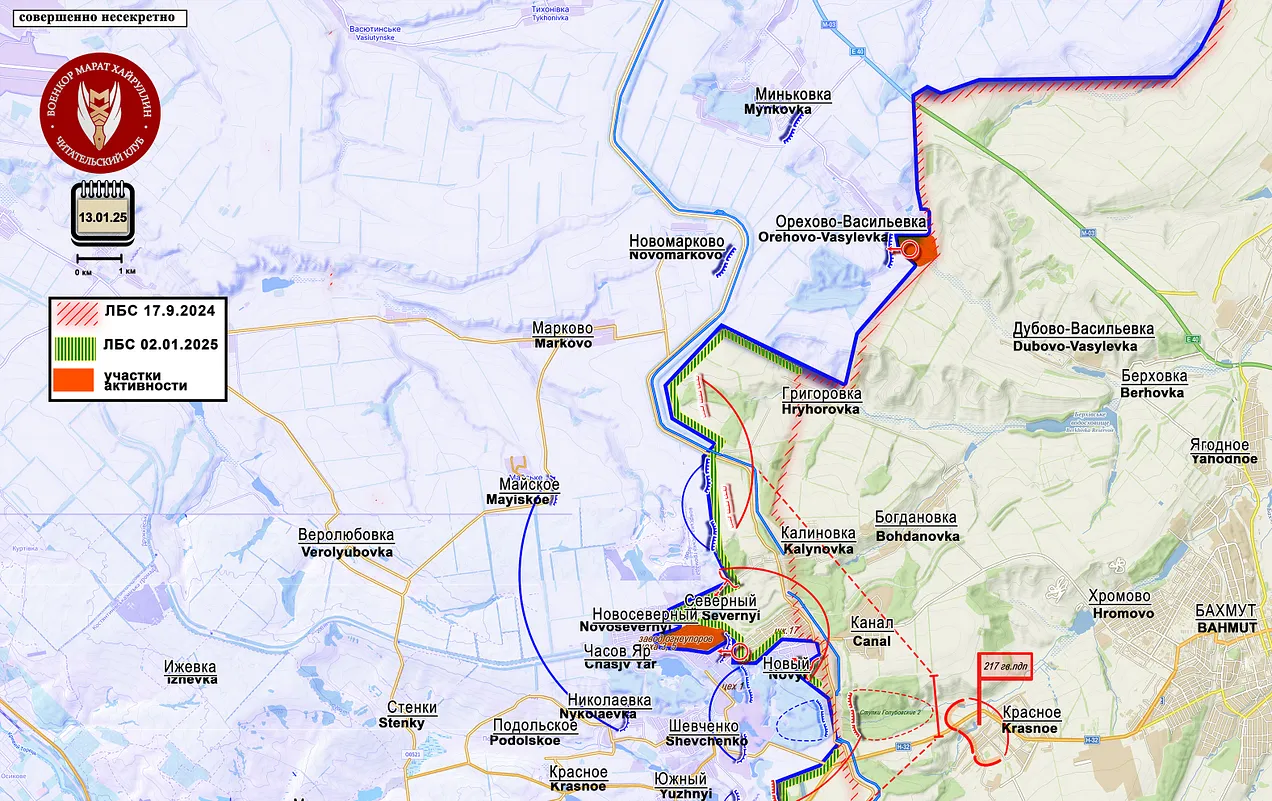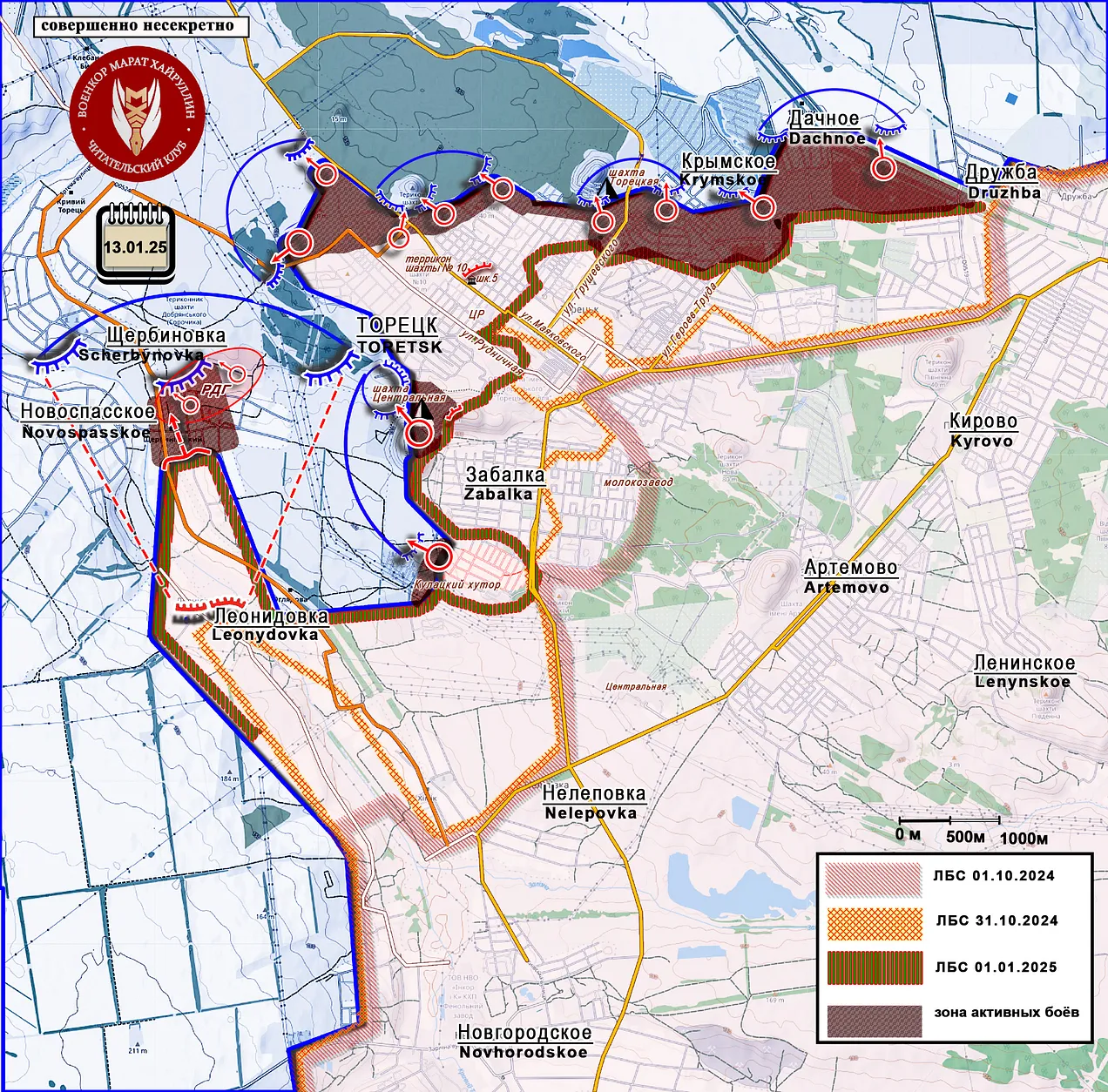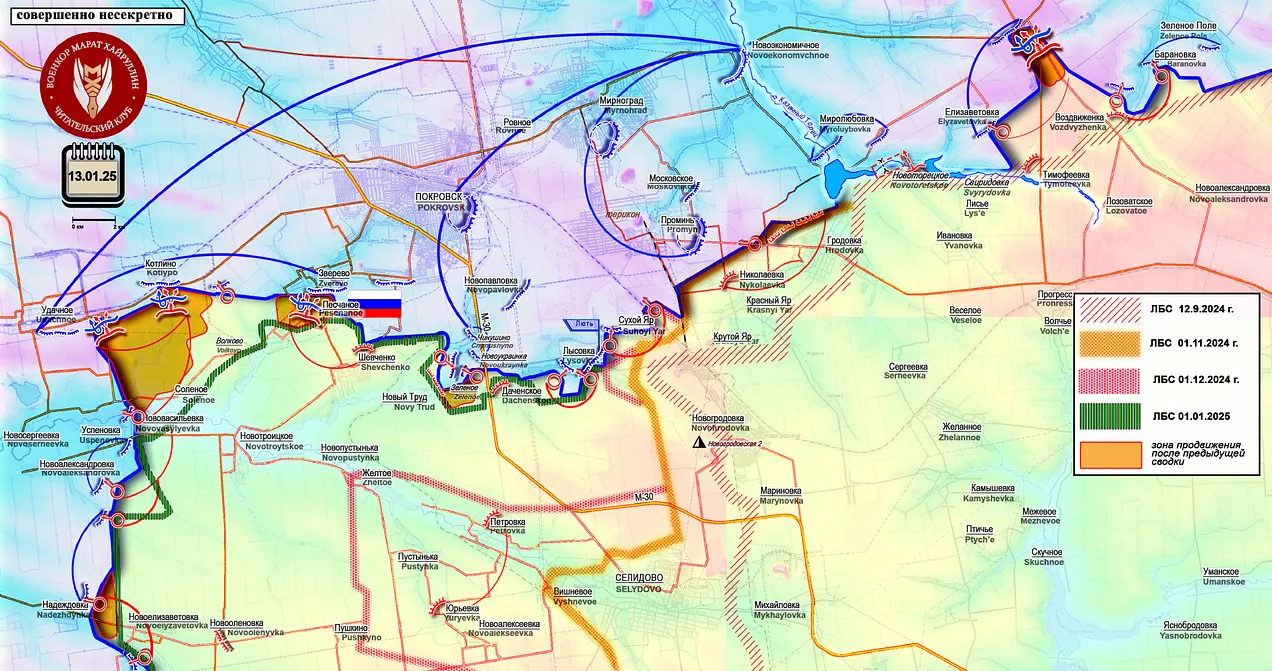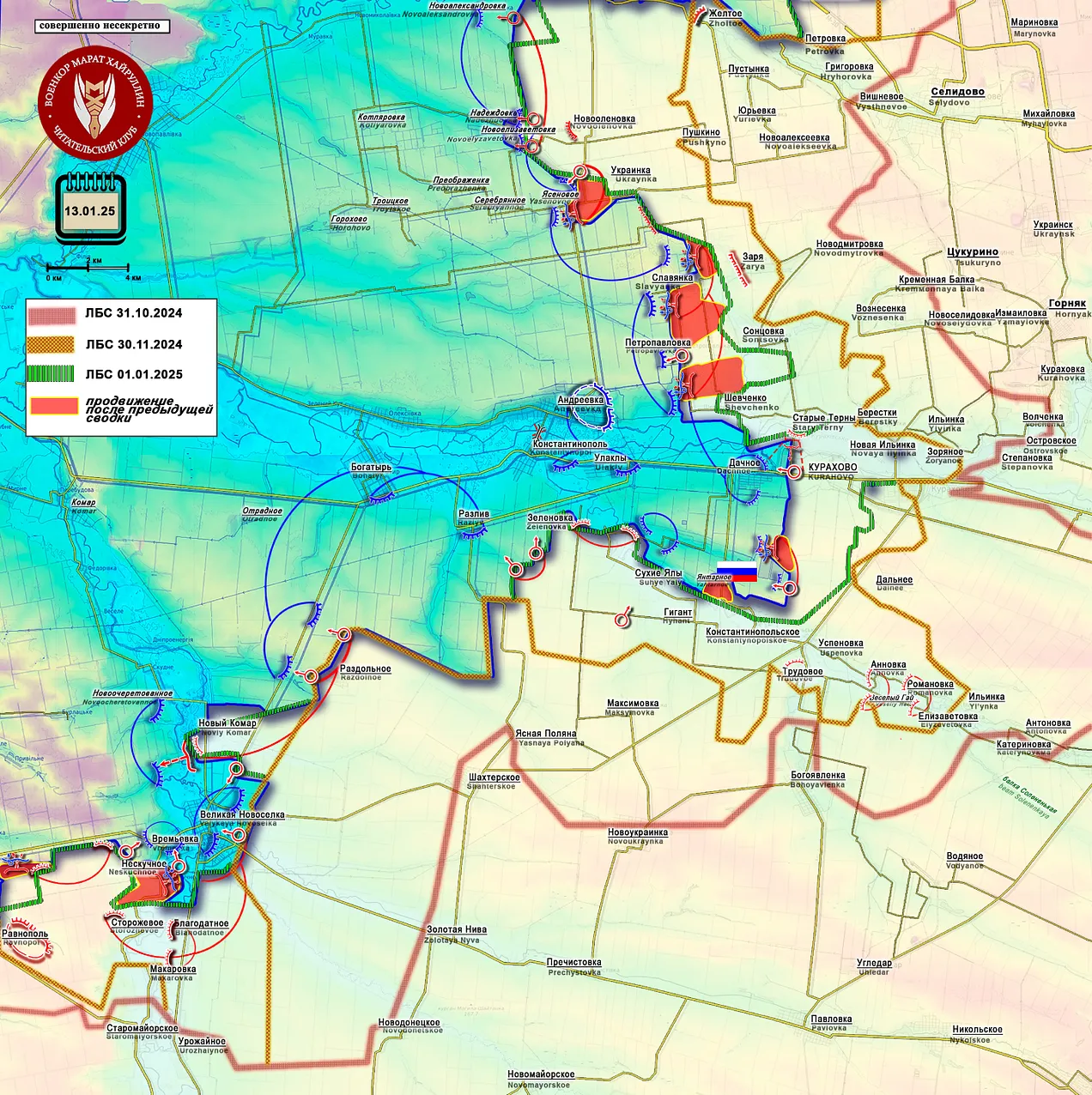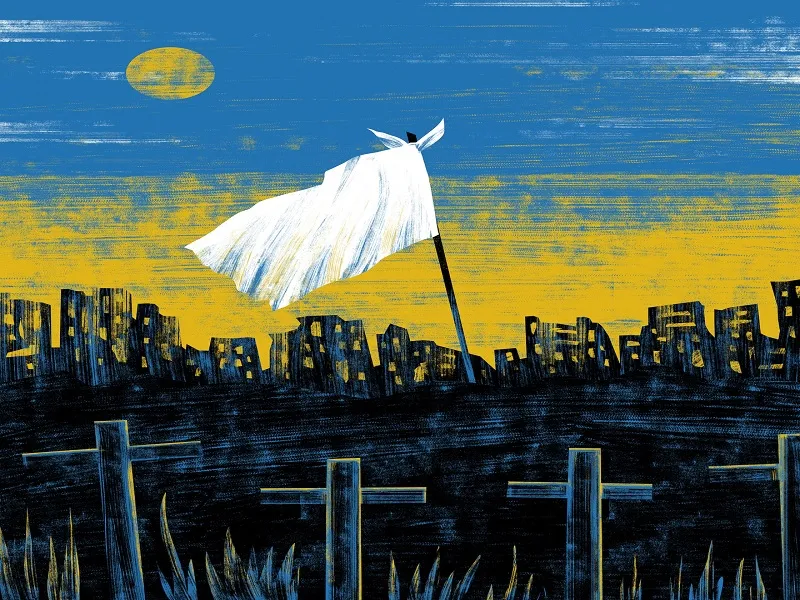Posted by @nsanzo ⋅ 07/01/2025

Since coming to power in 2019, Zelensky and his team, which come from the world of communication, interpretation and entertainment, have made public relations one of their strongest pillars. The campaign team convinced a significant part of society, especially in Russian-speaking areas of Ukraine, that the new president would moderate nationalist rhetoric, seek a compromise with Russia to end the war in Donbass and limit the effects of patriotic laws that sought to progressively remove the Russian language from the public sphere. Without any interest in moving in that direction, Zelensky's policy has always been a continuation of his predecessor and he even toughened the application of laws such as the one on the use of the language long before the Russian invasion. In the weeks before the Russian attack, Zelensky was able to convince his population that there was not going to be a war. As he admitted months later, this white lie was necessary to avoid an exodus that would destroy the economy and facilitate the Russian advance on abandoned cities. That year, he easily convinced the Russian delegation that he was negotiating in good faith and that an agreement had been reached in Istanbul. Now, the president does not need to address his own population or the Russian enemy, but rather his allies. “Meaningful answers to difficult questions. The Ukrainian vision of a just peace, which is important for all allied countries to know,” wrote the president’s official social media account yesterday with a message that makes it clear that the most important negotiation is not with Russia but with Ukraine’s friends.
“I have no respect for the Russian leader or the Russian people. And I don’t want to give Putin a chance to once again declare that we are all one people and speak the same language,” Zelensky said in his interview with tech podcaster and MIT engineer Lex Fridman, who had requested to conduct the interview in Russian, the native language of both. Despite the obvious communication advantages with the interviewer, who was born in the Tajik SSR and is descended from Jews from the Kharkiv region, the interview was conducted in Ukrainian, with simultaneous translation, and in English. Zelensky’s job now is to praise Donald Trump, attract his attention and make the Ukrainian cause his own. That's why he has worked to appear on Fox News , meet with Donald Trump at every opportunity and conduct a three-hour interview with Fridman, a well-known publicist linked to the US technology sector and on whose programme he has interviewed, for example, the current right-hand man of the president-elect, Elon Musk, possibly the most influential person in the Trumpist circle at the moment.
Zelensky wanted to speak in terms that the future president would understand and find flattering. Only in this way can we understand that the president of Ukraine, whose pensions and salaries depend on the European Union, the main economic partner ahead of the United States, said that “When I talk about something with Donald Trump – whether we meet in person or simply have a call – all European leaders always ask ‘how was it? ’ This shows Donald Trump’s influence and this has never happened before with an American president.” It is clear that the United States is the most powerful country and decisions about the future of the war have depended and will always depend on the opinion of Washington, so it is logical that European countries show interest in knowing the position of the White House at all times. The fact that the Ukrainian president has proposed a specific communication to find out the state of the matter indirectly through Zelensky – if these calls take place in reality and not in fiction – does not show Trump’s strength, but the weakness and subordination of European countries. Throughout the interview with Fridman, this is one of the aspects that most clearly emerges in Volodymyr Zelensky's speech, carefully prepared to praise the figure of the future tenant of the White House at the expense of the European allies, whose role is presented as important, but secondary.
According to data provided by the Ukrainian Ministry of Finance, the European Union has provided 38.9% of the more than $115 billion in Western aid since February 2022, compared with 27.1% for the United States. And yet, the Ukrainian president continues to insist that Europe is not enough and that neither military supplies nor security guarantees would be sufficient in the absence of the indispensable United States. “Trump and I will go first, and Europe will support the Ukrainian position,” the Ukrainian president said. The European Union has only to follow orders.
“Trump and I will reach an agreement and he will offer strong security guarantees together with Europe, and then we can talk to the Russians,” Zelensky insisted. The order of events is thus established: negotiation and agreement with the United States, ratification by the European Union and presentation of the plan to Russia. The hierarchy is clear and especially marked in Zelensky’s narrative also in the parts of the interview in which he refers to a possible negotiation, an aspect to which the Ukrainian president refers with increasing certainty, although this should not be confused with a lowering of kyiv’s aspirations.
“Zelensky would agree to give up the territories occupied by Russia if the rest of Ukraine joins NATO,” was the headline of an article in Europa Press yesterday , which did not explain that this would not be a renunciation, but rather the temporary acceptance of de facto Russian control over these territories, which would remain de jure Ukrainian, with the only difference being that “NATO would not be able to act in them.” This is a return to the Ermak-Rasmussen plan, which proposed the immediate entry of Ukraine into the Alliance in its current composition, pending the recovery of territorial integrity and always under the threat that any Russian attack that was considered excessive could activate NATO’s collective defence clause.
European security guarantees would not be enough for Zelensky, and neither is the formal invitation to join NATO, which makes it absolutely impossible for Russia to sign such an agreement. Ukraine wants more and insisting that it does not want “to happen like with Biden”, who according to the Ukrainian president did not deliver to kyiv the necessary weapons before the Russian invasion, its government is now asking for a large arms package to prevent a future aggression. Curiously, just two days ago, the US Secretary of State declared exactly the opposite of what Zelensky now claims. “We made sure long before the Russian aggression took place, starting in September and again in December, that we quietly sent a lot of weapons to Ukraine to make sure they had on hand what they needed to defend themselves, things like Stingers, Javelins, which were essential to prevent Russia from taking kyiv,” said Blinken, contradicting the current speech of the Ukrainian president, more concerned with praising who will be the new president than thanking the efforts of the current one. War requires weapons and speed, and Zelensky wants not only a formal invitation to join the Atlantic Alliance but a large arms package, the composition of which he insists on not specifying, although it is clear that it involves long-range missiles. This measure “depends primarily on the will of the United States,” he said, later specifying that “the EU would give us one part and the United States the other. There must be unity for this package.” In fact, there must be financing, which will have to come from grants or loans from the United States and the European Union or, as Zelensky proposes, from the delivery of the 300 billion dollars in Russian public and private assets seized by Western countries, for which Ukraine would also need the support of Washington and, above all, Brussels. Unsurprisingly, Ukraine says it would use this financing to acquire American weapons, thus actively supporting Kiev’s America First policy of Donald Trump.
Weapons are good business, a way to improve the economy and a tool for war or peace by force . “If the ceasefire works, no one will use these weapons,” he insisted in a statement that must be read in light of the precedent of the use of bombings against Donbass as a tool of pressure and artificial prolongation of the war in Donbass. Minsk has proven for seven years that a ceasefire without an accompanying political agreement is always unviable. In fact, many of Zelensky’s proposals for a possible ceasefire and a fair peace – fair only for the part of the population that Ukraine considers loyal – are so, hence Ukraine openly rejects a three-way negotiation, that is, a real negotiation, and continues to seek ways to pressure Russia so that it has no choice but to accept the Ukrainian diktat .
To do this, Zelensky is counting on Donald Trump. “I think that President Trump not only has the will, he has all these possibilities, and it is not just talk. I really count on him, and I think that our people really count on him, so they have enough power to put pressure on him, to put pressure on Putin,” said the Ukrainian president. Zelensky, who always tries to come up with creative ideas, proposed in his interview, for example, expelling Russia from the global energy market and blocking its sales of liquefied natural gas and oil, an idea that is impossible to implement and has a destructive capacity and destabilisation of the sector worldwide, which does not seem to concern the Ukrainian president, who prefers to focus on the benefit it would bring to the United States. “Imagine not having Russia in the energy market,” Zelensky said in the interview. “You just have to stop it,” he insists, referring to sanctions that would expel Russian energy from the global market. The consequences can only be positive. “Nothing happens. There is American oil, American gas is fine. Why not? “And it’s cheaper,” he falsely insists, without, of course, mentioning the carbon footprint of replacing a nearby gas with a distant one. “So it will be cheaper for everyone and the money will go to the United States,” he concludes. The priorities are clear and will undoubtedly impress Donald Trump.
https://slavyangrad.es/2025/01/07/objet ... ioridades/
Google Translator
******
From Cassad's telegram account:
Colonelcassad
— Units of the North force group in the Kharkov direction inflicted losses on formations of the mechanized, airborne assault brigades of the Armed Forces of Ukraine and the territorial defence brigade in the areas of the settlements of Oreshanka, Granov and Veterinarnoye in the Kharkov region.
The Armed Forces of Ukraine lost up to 65 servicemen, two vehicles, two 152 mm D-20 guns and two 122 mm D-30 howitzers.
— Units of the West force group improved the situation along the forward edge. Defeat was inflicted on the manpower and equipment of two mechanized and assault brigades of the Armed Forces of Ukraine in the areas of the settlements of Zeleny Gai, Petrovpavlovka in the Kharkov region and Novoyegorovka in the Luhansk People's Republic. Two counterattacks of assault groups of the Armed Forces of Ukraine were repelled.
The enemy lost up to 580 servicemen, two infantry fighting vehicles, 12 cars, an Iveco armored fighting vehicle and an Italian-made 105 mm Melara Mod 56 howitzer, a German-made 155 mm Panzerhaubitze 2000 self-propelled artillery mount, a Gvozdika 122 mm self-propelled artillery mount, three 122 mm D-30 howitzers, as well as an M113 armored personnel carrier, two M777 155 mm howitzers, two M198 155 mm howitzers and an M119 105 mm gun made in the USA.
An Israeli-made RADA RPS-42 counter-battery warfare station, four Khortitsa, Bukovel-AD and Anklav electronic warfare stations, and an ammunition depot were destroyed.
— Units of the Southern group of forces have taken up more advantageous lines and positions. Formations of the mechanized, motorized infantry and two airmobile brigades of the Ukrainian Armed Forces were defeated in the areas of the settlements of Seversk, Predtechino, Dachnoye and Belogorovka of the Donetsk People's Republic. Two counterattacks of the enemy assault groups were repelled.
The Ukrainian Armed Forces lost up to 245 servicemen, a tank, an infantry fighting vehicle, two pickups, two 122 mm self-propelled artillery units "Gvozdika", a 122 mm howitzer D-30 and two 105 mm guns M119 made in the USA.
Three ammunition depots were destroyed.
— Units of the Center group of forces improved their tactical position. The manpower and equipment of four mechanized brigades of the Ukrainian Armed Forces, three territorial defense brigades, two national guard brigades and a brigade of the national police of Ukraine were defeated in the areas of the settlements of Druzhba, Panteleimonivka, Mirolyubovka, Shcherbinivka, Dzerzhinsk, Vozdvizhenka, Shevchenko, Alexandropol, Dyleevka and Volkovo of the Donetsk People's Republic. 12 counterattacks of the Ukrainian Armed Forces were repelled.
The enemy lost up to 510 servicemen, four tanks, including two Leopards made in Germany, three infantry fighting vehicles, two M113 armored personnel carriers made in the USA, five other armored combat vehicles, nine cars, three 152 mm D-20 guns, a 122 mm Gvozdika self-propelled artillery unit, two 122 mm D-30 howitzers and a 105 mm M119 gun made in the USA. An electronic warfare station was destroyed.
— Units of the Vostok group of forces advanced deep into the enemy's defenses. Formations of three mechanized brigades of the Ukrainian Armed Forces, two territorial defense brigades and a National Guard brigade were defeated in the areas of the settlements of Neskuchnoye, Velyka Novosyolka, Razliv, Volnoye Pole and Vremevka of the Donetsk People's Republic. Two counterattacks of enemy assault groups were repelled.
The Ukrainian Armed Forces lost up to 155 servicemen, two combat armored vehicles, five cars, a 152 mm self-propelled artillery mount "Akatsiya", a 122 mm self-propelled artillery mount "Gvozdika" and a 122 mm howitzer D-30. An ammunition depot was destroyed.
— Units of the "Dnepr" group of forces defeated the manpower and equipment of the Ukrainian Armed Forces infantry brigade near the village of Pyatikhatki in the Zaporizhia region.
The enemy lost up to 80 servicemen, six cars and a 122 mm howitzer D-30. The "Bukovel-AD" electronic warfare station and an ammunition depot were destroyed.
***
Colonelcassad
It is reported that the Sudzhan borderland: the Berdin farm and its surroundings have been cleared by fighters from the 30th Motorized Rifle Regiment of the Guards "Sever"
. During the clearing carried out by the assault units of the 30th Motorized Rifle Regiment, the occupiers suffered up to 30 casualties, including 17 - "200", twenty-three Ukrainian soldiers from the 82nd separate airborne brigade surrendered.
In total, twenty-seven Ukrainian servicemen laid down their arms during the enemy counterattack that began yesterday.
https://t.me/s/boris_rozhin
Google Translator
*******
SITREP 1/5/25: Ukraine Launches Final Bargaining-Chip Offensive in Kursk
Simplicius
Jan 05, 2025
Ukrainian forces launched a new awaited offensive on the Kursk region, which was to be timed with the run up to Trump’s inauguration. The desperate offensive is meant to make sure the dwindling Kursk salient remains at least up until Trump is able to ‘negotiate’ with Putin, so that Zelensky still has Kursk as a “bargaining chip” in those negotiations.
As such, Russian forces have been anticipating a move somewhere in the region for a few weeks now. The only danger is that there is some possibility this opening is still just a diversion for a larger move in another direction, such as Bryansk, toward Belgorod, or even on the Zaporozhye line.
That’s because today’s action saw what’s estimated to be two battalions or so. There are mixed reports about potentially the 95th, 92nd, 22nd, and 82nd brigades participating, as well as the 225th Special Battalion. Other reports claimed 36th and 47th as well, although it’s likely just small elements and detachments of the above, if at all.
Footage of the columns advancing with Russian response fire and drone destruction of the Ukrainian armor: (Video at link.)
The assault column came out of Sudzha toward Berdin in an attempt to expand the bridgehead and keep Russians from collapsing the pocket on the AFU’s Sudzha HQ-stronghold:
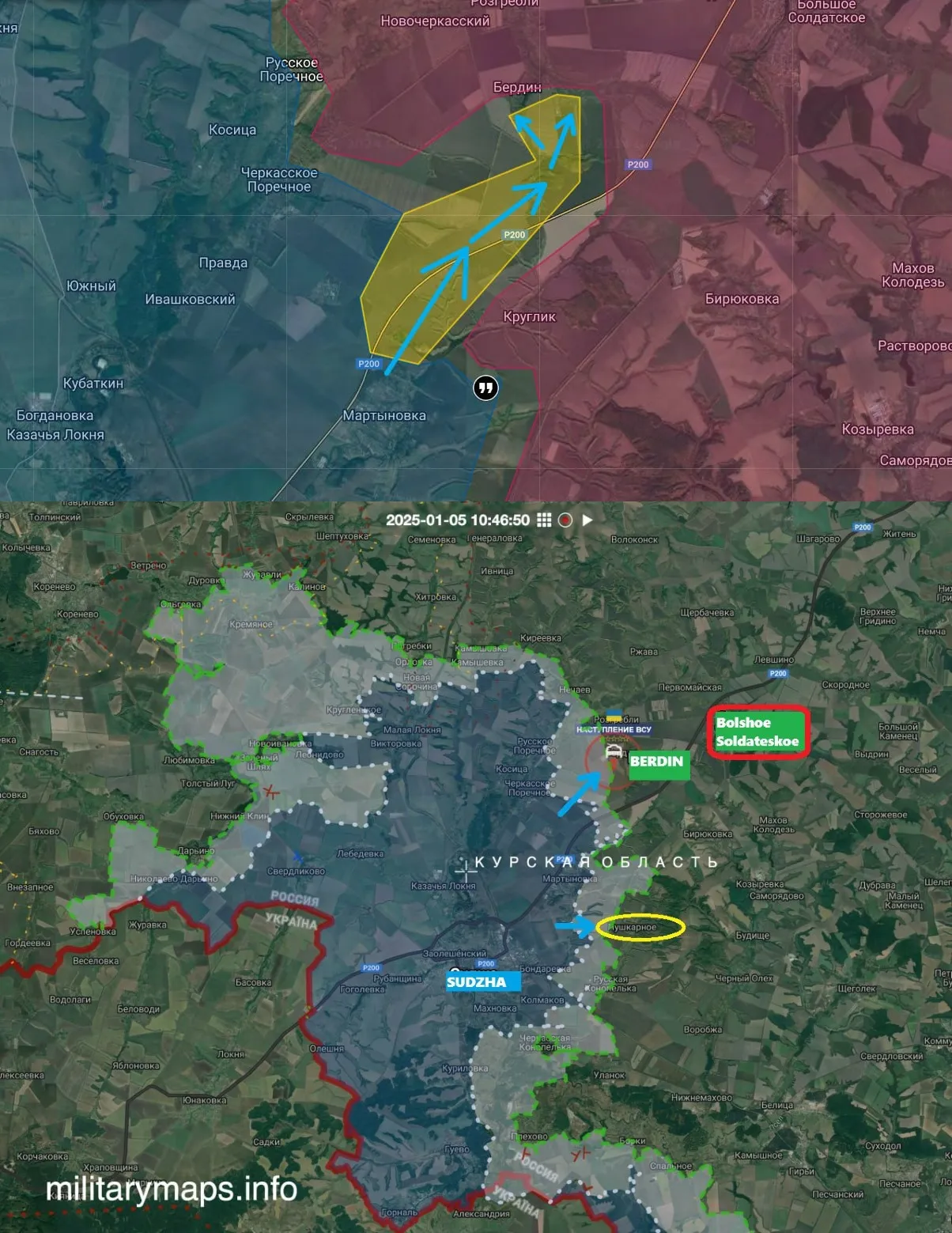
Here’s a video from Akhmat’s “Aida” Battalion operating in Kursk during today’s assault: (Video at link.)
Note that at a certain point the commander says we have four losses and they have four losses—this is an AI mistranslation, he actually said our unit destroyed four AFU units and another neighboring Russian unit destroyed an additional four.
Having anticipated this attack, Russian forces apparently also prepared an attack thrust of their own in other areas of Kursk in order to cut the Ukrainians off or simply catch them off guard. Thus there were reports of a Russian assault from the Malaya Loknaya, Sverlikovo, and Leonidovka directions, though there’s no further information at this time.
The Ukrainian assault did manage to embed troops in and around parts of Berdin, so they did capture a small slice of new territory with the incursion—but for now Russian forces claim they have stranded the AFU troops by destroying their armor and are in the process of eliminating the remaining stragglers.
A day prior to this, Russian forces had several successes including capturing the remainder of Kurakhovo. The flag was geolocated being placed here:
(Video at link.)
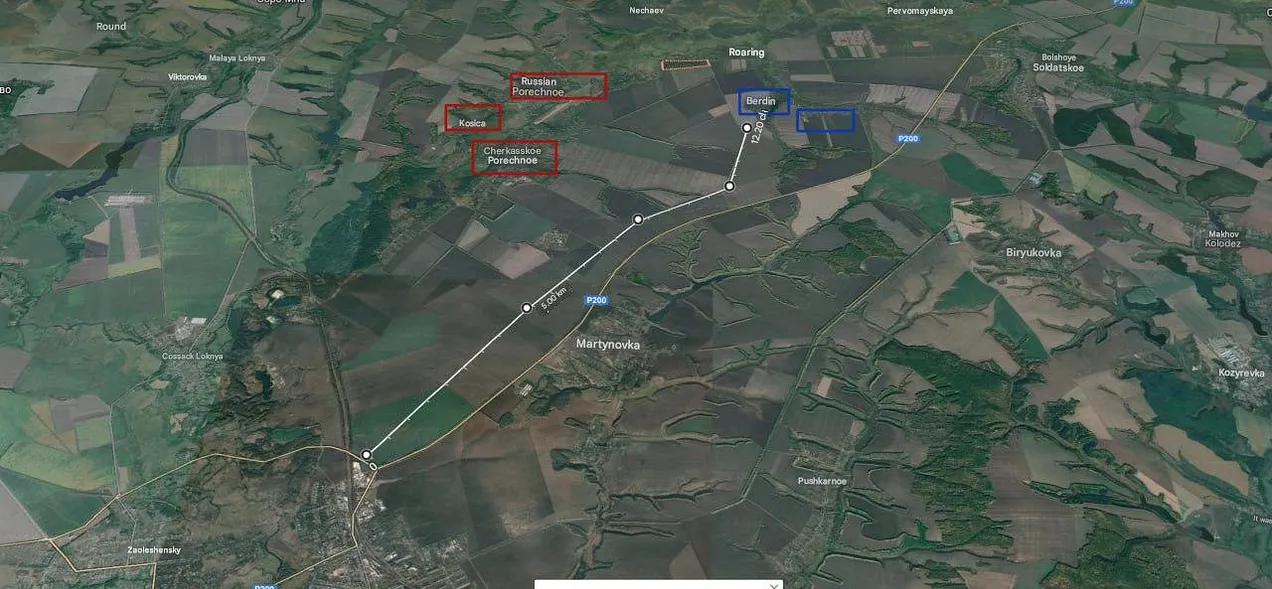
Which is here:
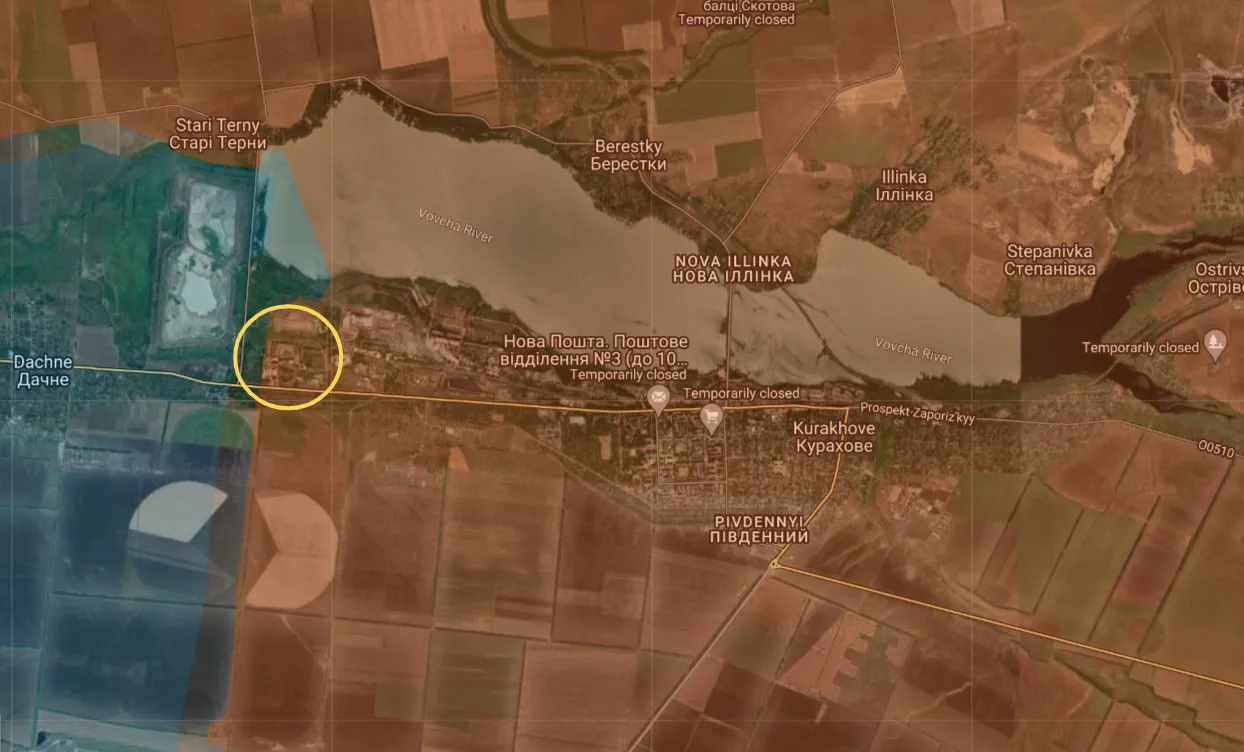
In fact the wider view shows Kurakhove region has been all but cinched up:
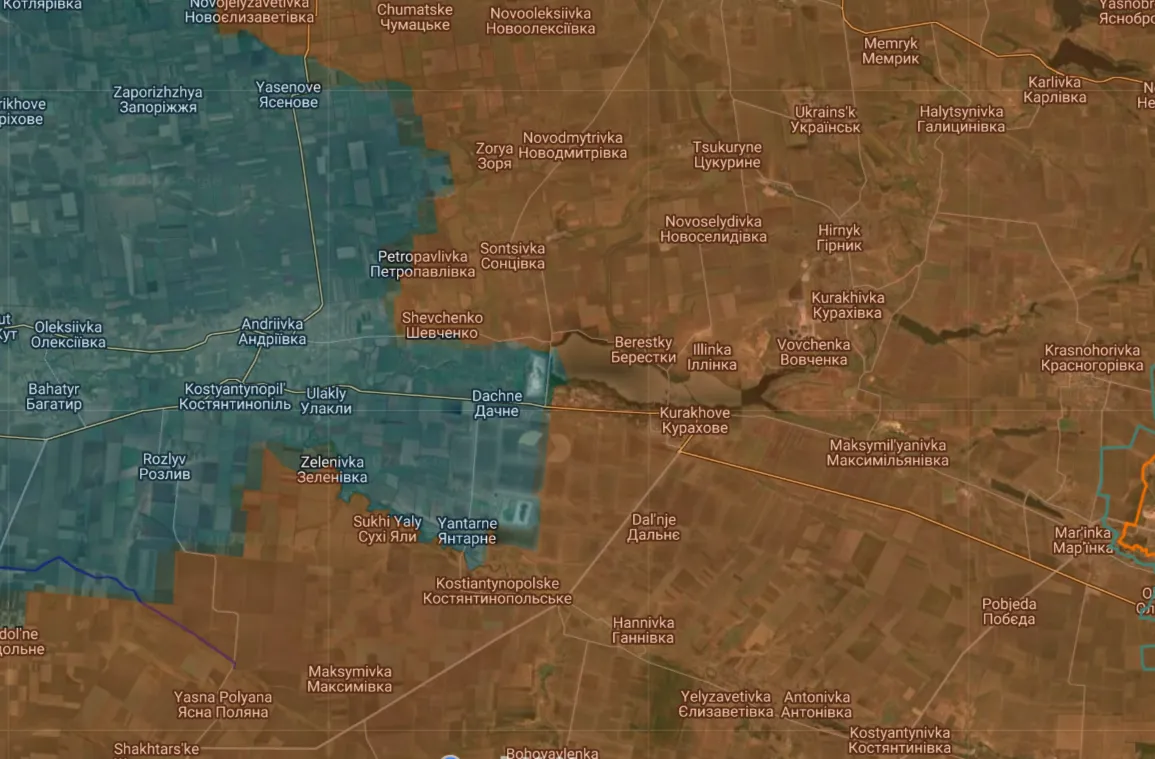
Toretsk has also now been almost entirely captured, with just a small segment to the north left:
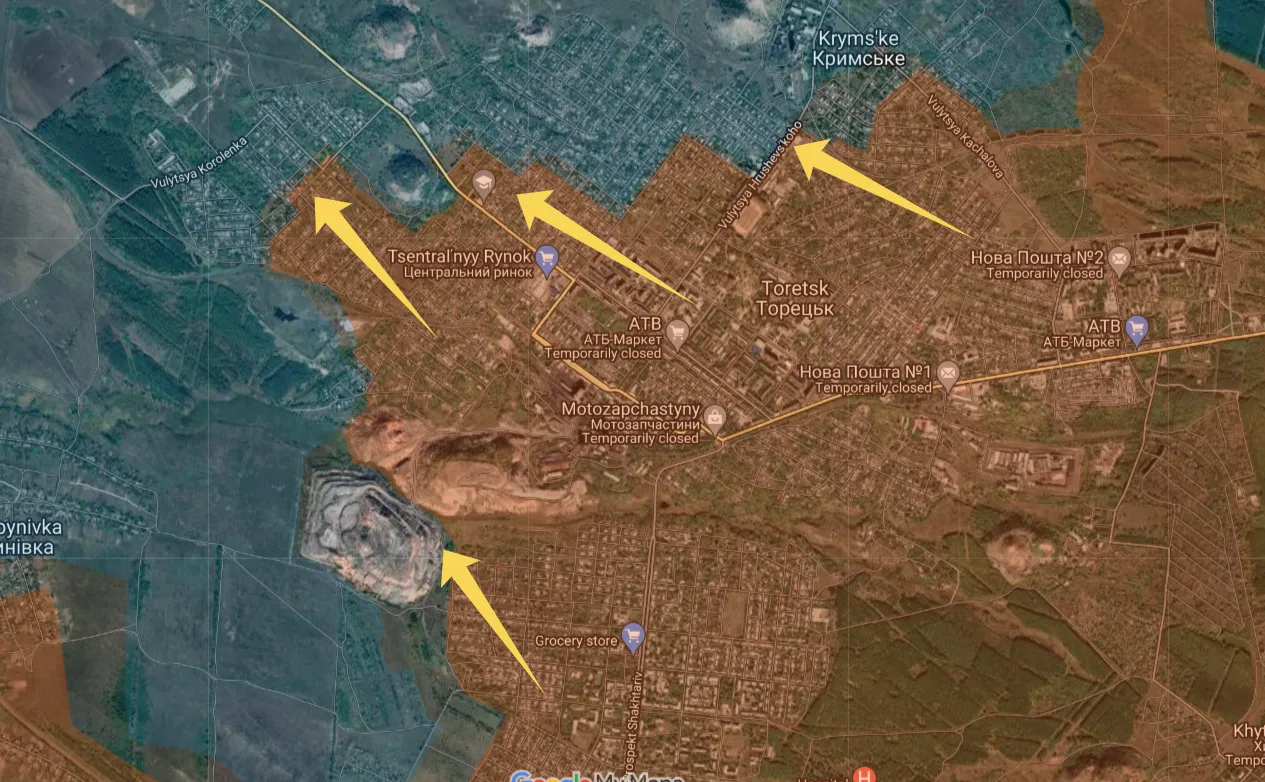
And there were advances in Chasov Yar as well, with much of the city likewise behind Russian forces:
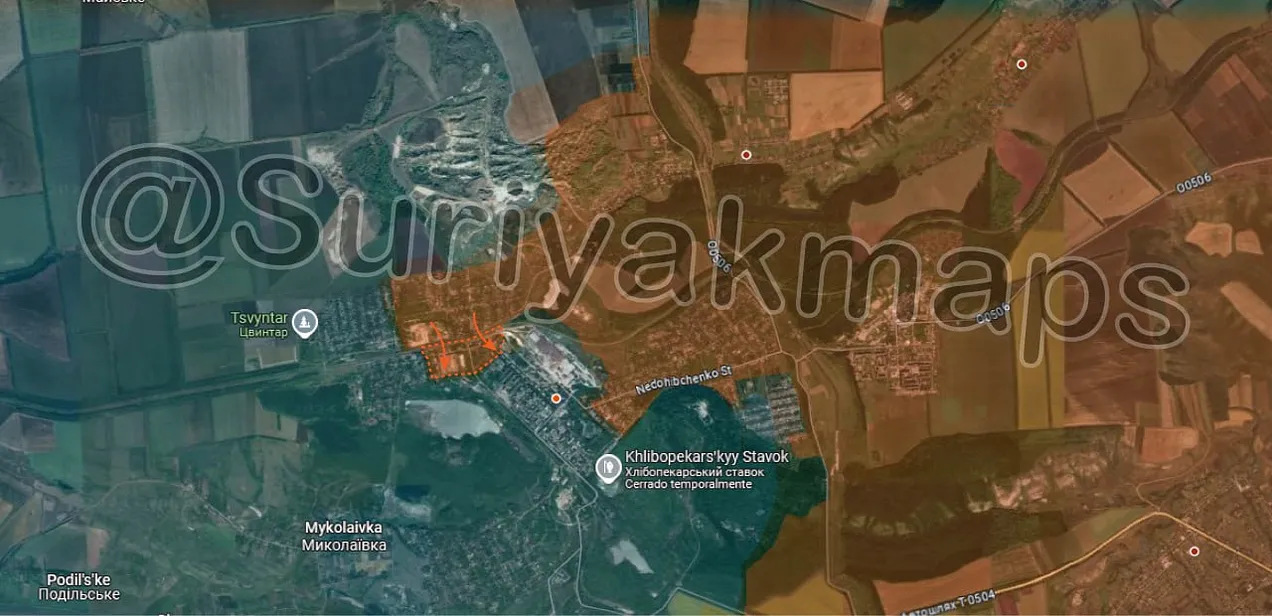
They’ve also expanded territory around Pokrovsk’s southern and western flanks, with Ukrainian forces said to have constructed fortifications around the city as follows:
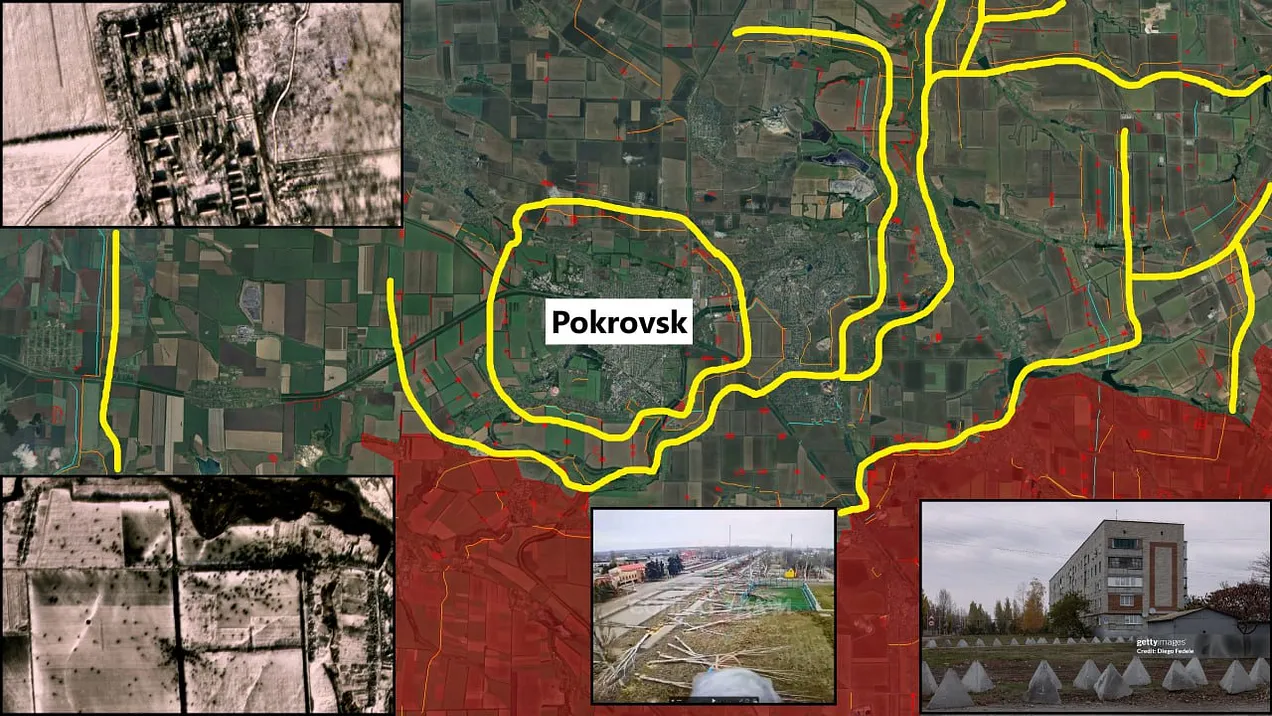
___
New articles continue coming to terms with Ukraine’s impending defeat, as the West slowly realizes that Trump will not be able to ‘magically’ end the war without giving Russia all of its demands, which is a complete non-starter for Zelensky:
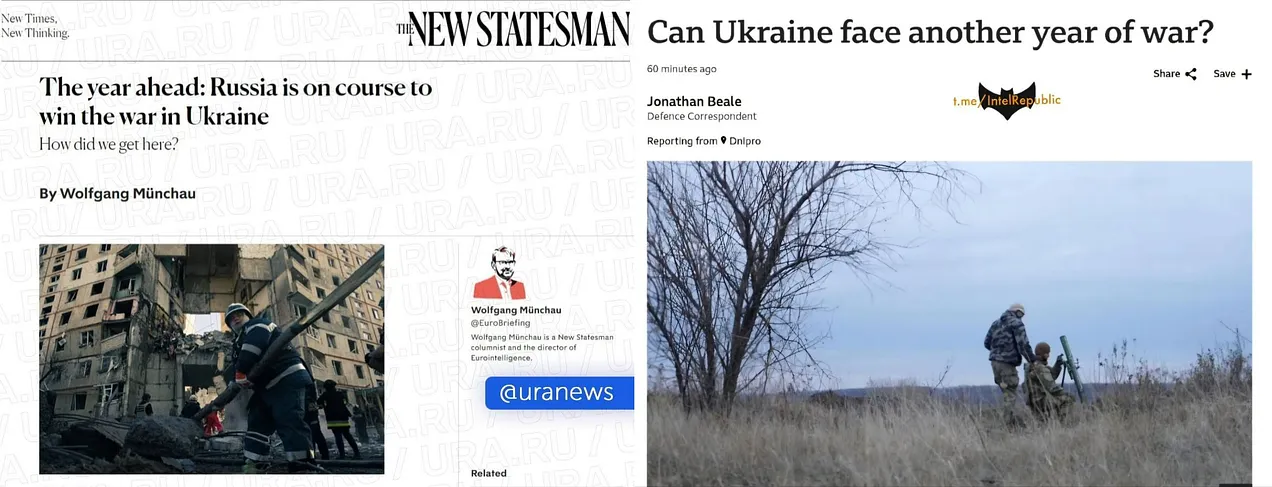
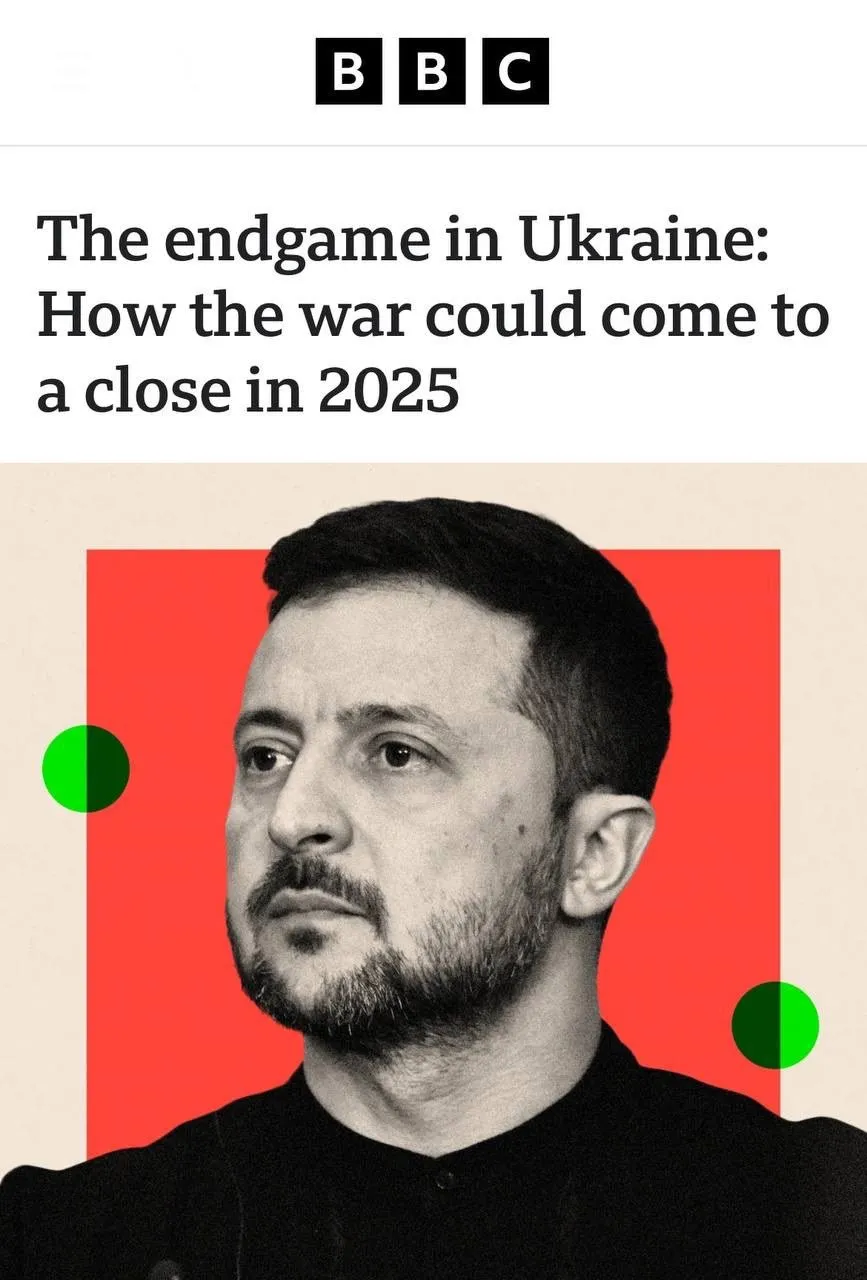
A new Washington Post article gives an interesting figure:

It states that Zelensky wanted 500k total troops drafted in 500k but ended up only drafting 200k. The reason that’s interesting is because we now know from several Ukrainian officials that Ukraine is at best breaking even and at worst experiencing a net loss in troop totals per month. Given that 200k were brought in as replacements in 2024, we can only assume this represents the AFU’s losses for the year.
Two weeks ago Belousov announced Ukraine’s total “killed and wounded” casualties for the year 2024 as 560,000. That would put strictly killed at something like 120-180k, which is not far from the 200k conscription figure above. Being charitable, let’s say that 200k is killed and disabled, which would put strictly killed at 100k. That would be 8,333 KIA per month or 277 per day, which is pretty much in the vicinity of where I’ve got AFU’s KIA pegged. I’ve said several articles ago I believe Russian KIA to be anywhere between 100-150 per day, sometimes higher, with Ukrainian being 250-400, give or take. MediaZona seems to roughly agree as their estimated death count for Russian forces was 5,500 for December last I checked, which averages to about 183 per day.
Recall that there are alternative estimates for Ukraine’s losses which are far higher, like this recently published one:

It claims a total of ~2 million casualties since the start of the war, with 920k of them being dead or disabled.
In fact, from the same WaPo article quoted above, we have the next paragraph:

Well, judge for yourself.
Taras goes on to remark that the current situation is even worse than February 2022 for Ukraine:
“Let’s be honest, the situation now is worse than at the start of the full-scale invasion,” said 33-year-old Taras, a captain and company commander in the 35th brigade. “What can we negotiate now? We can only nod our heads and agree to their demands, and what they will demand is obviously going to be something that we don’t like.”
They do make an interesting description of Russia’s ‘slow-drip’ strategy:
Moving in smaller groups on foot, the most-used tactic, also allows the Russians to covertly build up forces one or two people at a time before their next attack. Armored vehicles are rarely used in offensives anymore, soldiers said.
“You think everything is all right because you haven’t seen a lot of the enemy and then suddenly 10 people run out of one basement,” said Taras, the deputy commander fighting near Pokrovsk. “That happened to us recently. Where did they come from?”
Of course, they still mention the canard of “heavy Russian losses” in the article, but have you ever wondered why in every Ukrainian interview, the AFU soldiers mention their own high losses, yet in equivalent Russian interviews Russian soldiers virtually never mention much losses at all, or at least not particularly high ones? Does one actually suppose that Ukrainian governmental strictures are somehow “freer” and Ukraine has more “freedom” in this regard than Putin’s Russia? It’s a very telling point of fact.
How’s this final admission from the same article?
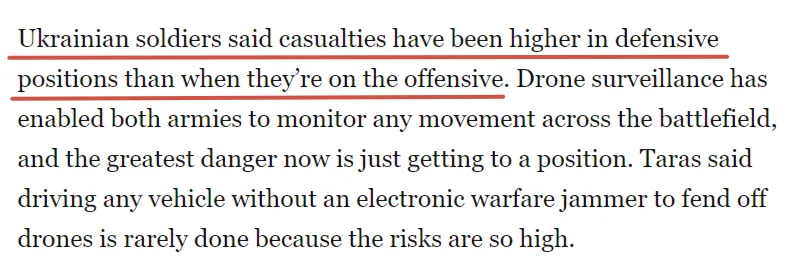
https://archive.ph/9tVn0
Either way, even Russian SVR now states that Ukraine is preparing to lower mobilization age, which means it may very well finally happen soon. The likely impetus remains a failure of Trump’s peace talks—which Zelensky is holding out for—which will allow Yermak and his puppet to blame the mobilization on the US’ “betrayal” to take heat off themselves.
—
An impressive new video comes by way of the Russian 5th Brigade, of the DPR’s ex-1st Army Corps, of the 51st CAA of the Southern Military District.
A four-unit assault formation from the 5th Brigade consisting of one heavy tank with three IFVs rolled into Elizavetovka from the now-captured Vozdvizhenka—just east of Pokrovsk:
Upon entering the village they suddenly ran face-first into two Ukrainian tanks, one of which I have seen identified as a T-64. I will assume both were T-64s. A high-noon standoff ensues with both sides’ tanks firing on each other, and the Russian one destroying his Ukrainian foe while the remaining Ukrainian tank flees. The fleeing tank is then hit by Russian drones soon after.
The remarkable video: (Video at link.)
At the 1:00 mark of the video the Russian tank fires and misses, but hits the dirt in front of the Ukrainian tanks, causing a plume of smoke that blocks their views. One wonders if this was ‘nerves’ or a deliberate quick shot to blind them, perhaps after realizing it would take longer to aim the gun onto the enemy tank than to hit the trigger on a barrel which may have already been pointing toward the ground there.
Either way, it worked and the Ukrainian tanks panic and begin backing up. At 1:09 both fire and seem to miss again due to the smoke. We’re already three shots in at point blank range and no one appears to have hit anyone. At 1:23 the Russian tank fires again and seems to again miss and hit behind the first tank, or possibly grazingly hits it. It’s hard to tell for certain, and a small wisp of white smoke does appear to attest to a possible hit. Another shot at 1:34 however finally hits the front of the Ukrainian tank’s armor—the autoloader on the Russian tank is now working at exactly 10 second intervals, which is much slower than the 6-7second optimal speed most T-72, T-80, and T-90s can do.
But what’s remarkable is at 1:36 the Ukrainian tank returns fire and appears to even potentially hit the Russian tank with a grazing shot. If you look closely you see the tell-tale wisp of white smoke indicating a possible hit on the defensive smoke charges on the turret. The shot explodes behind the Russian tank so it could have grazed off—or perhaps is a miss, it’s hard to tell.
But the final few shots from the Russian tank finally settles matters and finishes off the Ukrainian one. But one can see real modern war is not like video games, things are imperfect and sometimes many shots are needed to finish off the foe. The Russian tank even appears to be hit by something else at 2:06, either a drone or an RPG fired from near the Ukrainian tank, since there is a muzzle flash of sorts visible. But it seems to shrug the hit off with only another smoke canister destroyed.
—
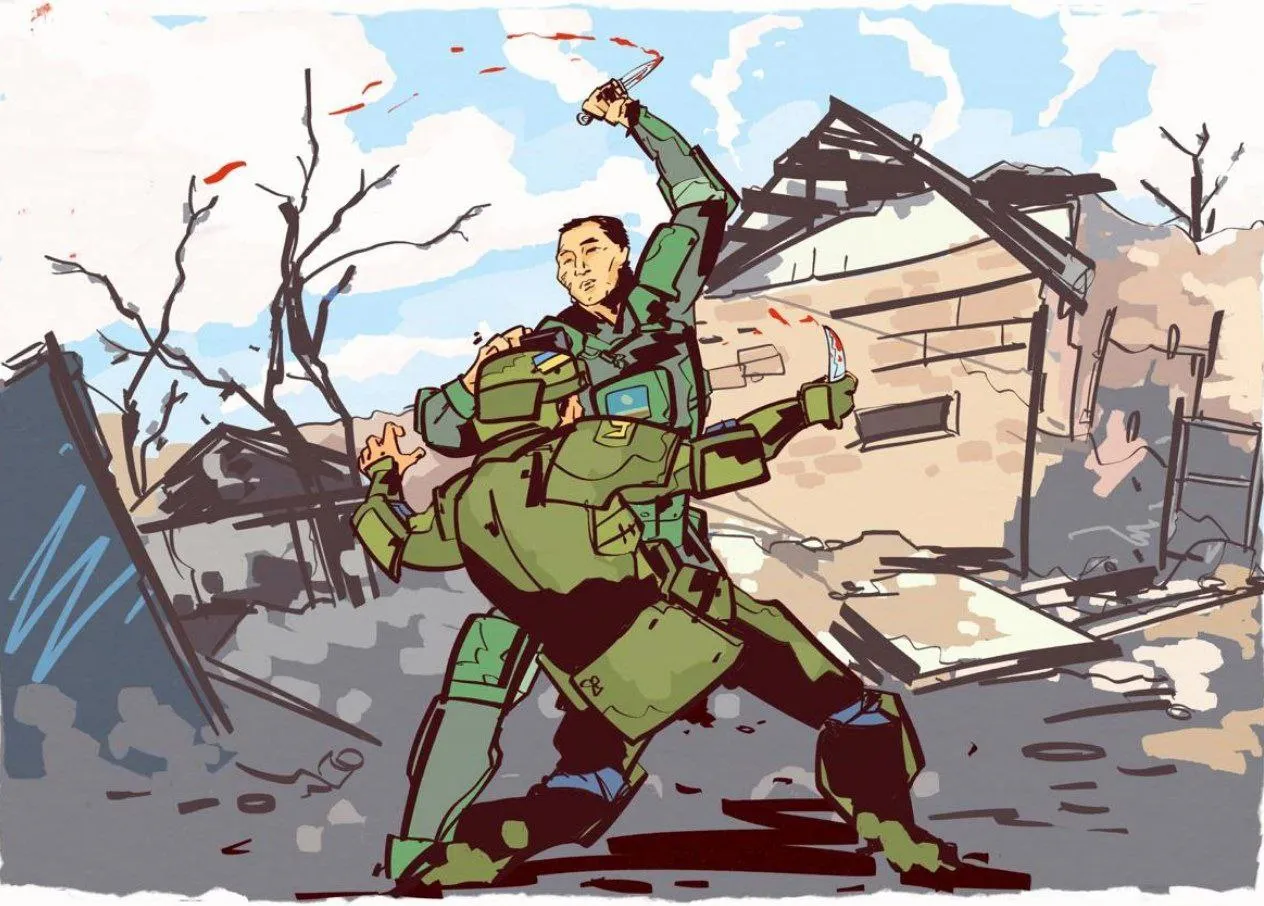
Lastly, for those who haven’t followed the incredible story of Yakut warrior Andrey “Tuta” Gregoriev, I wanted to have a centralized place to put all the links for posterity and those interested.
‘Tuta’ was part of the Russian 39th Brigade based in Sakhalin assaulting the village of Trudovoye, just south of Kurakhove here:
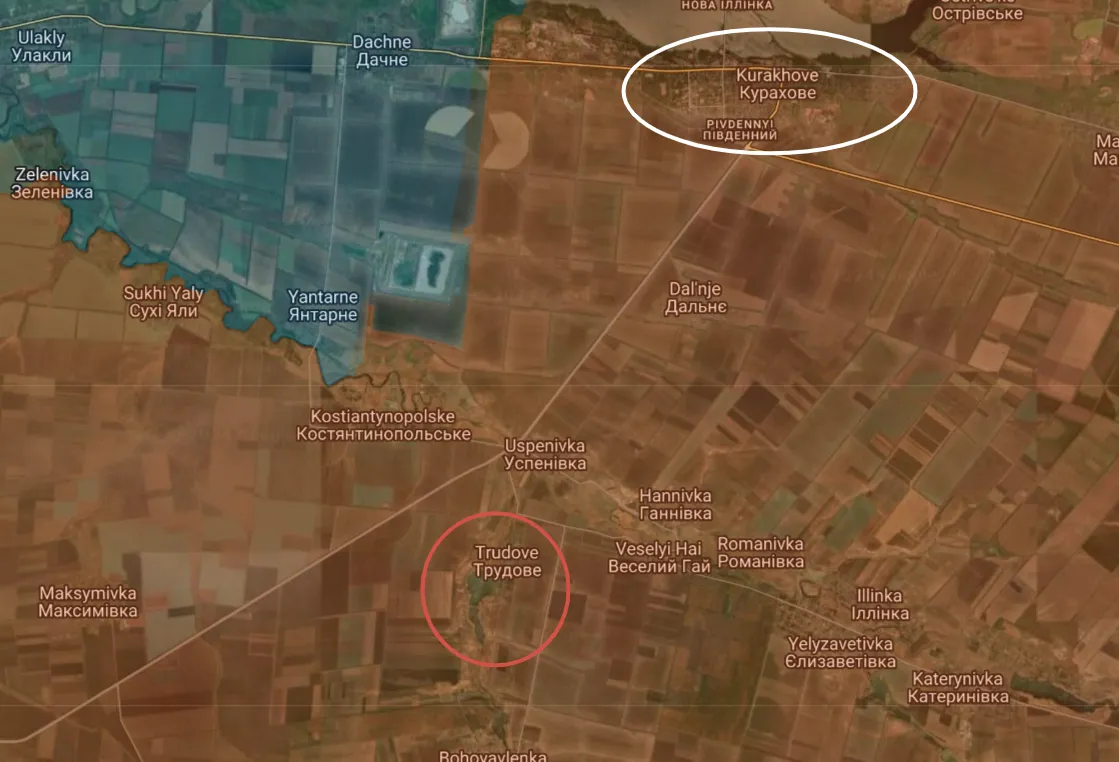
Note Trudovoye is now captured, but the events actually occurred in late November, when the village was still in the gray zone.
Tuta was ordered by his command to proceed on a motorcycle with another partner to plant a flag in the village. This has generated some controversy, like the following:
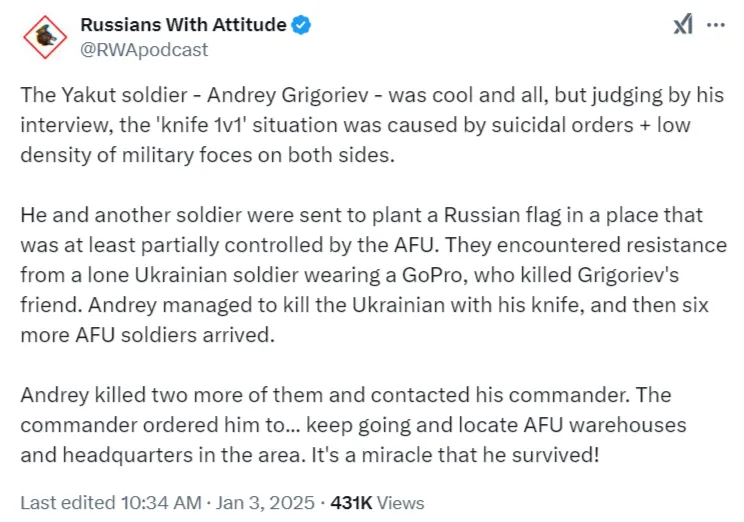
Sure, on first impression it may seem like this proves that force density is low and some ‘corrupt’ Russian commanders are sending troops on superficial suicide missions. But in reality, the village was in a gray zone, and a two-man team on a propaganda/scout mission is not totally uncalled for. Placing flags has more psychological importance in war than people on the sidelines give credit for; it’s generally frowned upon when the AFU sends dozens of men to their death for it like in Khrynki.
In this case it may have been a reasonable mission. If you listen to Tuta’s full length interview, you’ll note he conducted all sorts of rear sabotage and killed something like a dozen total AFU before he was done with his remarkable week-long spree behind enemy lines.
For those interested, the full highly graphic video of the fight is here: Video.
A newly released, even more graphic drone view of the same fight is here: Video.
And the full hour-long interview with the hero is here: Video.
Some Ukrainian channels allege that this was the AFU soldier defeated by the Yakut:
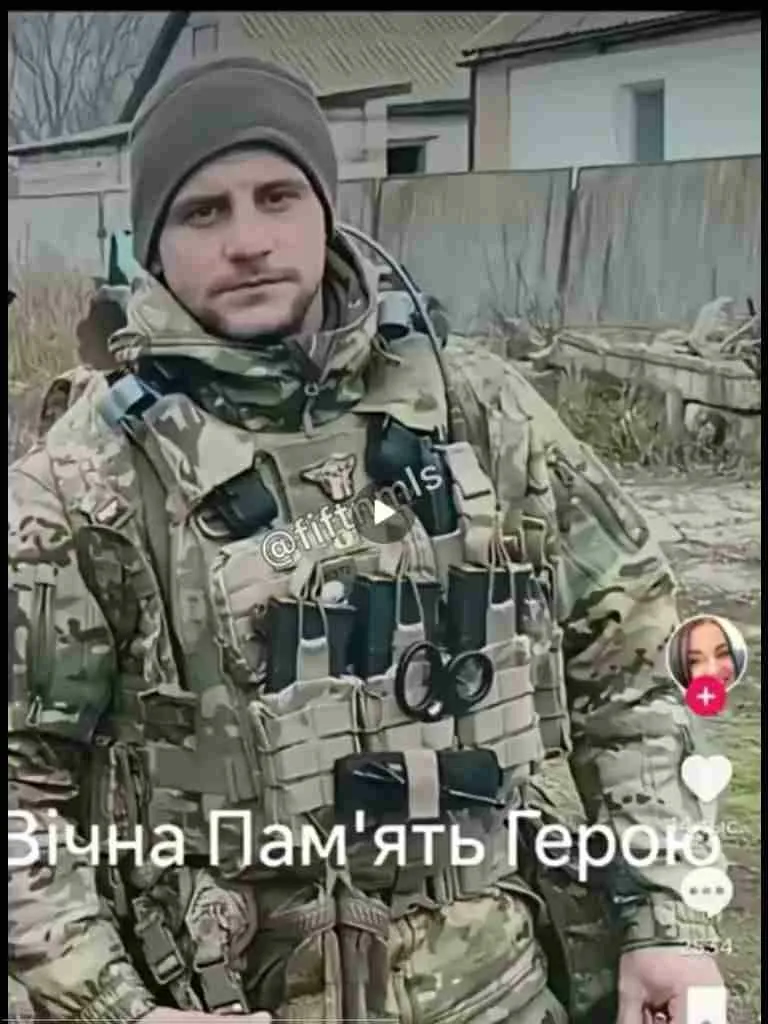
Many have romanticized the fight and the now-famous ‘brotherly’ exchange between the two warriors at the end, but in truth it was mostly just survival and primal forces at work. The Yakut soldier even admits in the full interview he later liquidated a three-man AFU mortar team, including the commander who tried to surrender; when you’re alone behind enemy lines, you don’t have the luxury of honor and chivalry—a ‘prisoner’ would just be a dangerous burden for your journey back to friendly territory.
A last important lesson: many Western propagandists continue parading the spurious notion that Russian forces use the age-old “Soviet-style centralized command”. In reality, Gregoriev’s exploits prove that Russian units operate with much more flexible initiative than their NATO counterparts. He was given leeway for all kinds of self-starting initiative when behind the lines, including sabotaging an AFU ammo depot, fuel warehouse, mortar unit, as well as reconnoitering various valuable military objects.
In fact the sheer know-how of the common Russian soldier was astounding, given his story. At one point he casually remarks how he Macgyver’d a C4 charge to blow the enemy warehouse on the fly, all because they were taught to do so in training, despite the fact he’s not even in any kind of special sapper or engineering battalion.
—
A few last items:
A report about the utter low quality of troops being press-ganged into the AFU:
A company commander of the 78th Airborne Assault Regiment of the AFU reported the low quality of conscripts arriving from the CVMP. According to him, his company received a drug addict on substitution therapy, two non-conscripts, a person with a mental disorder, a person with hepatitis and two with heart disease, one of whom can barely stand on his feet, and the second of whom almost died and ended up in the hospital. At the same time, as the officer noted, military commissariats do not draft successful healthy businessmen and strong young men of athletic physique, who can be found at various rallies
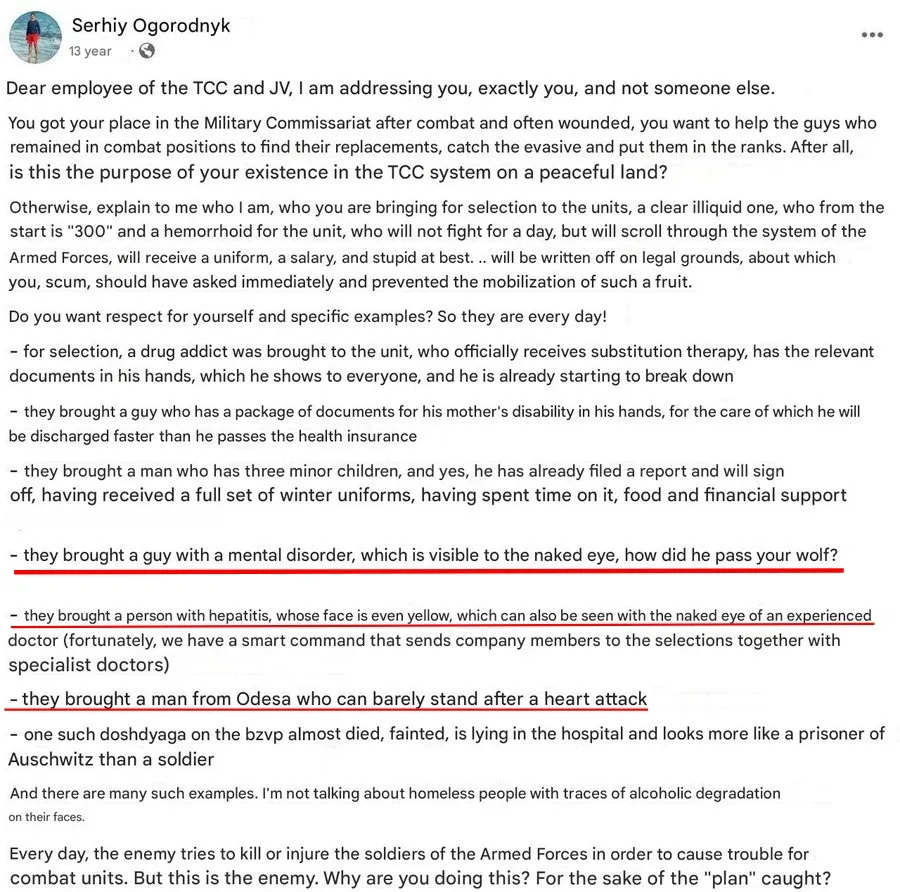
—
An addendum to add for last time when we spoke about Ukraine’s tactic for baiting Russian air defenses into shooting down civilian airliners or other military craft—I had found this snippet saved long ago which offers one piece of evidence for the Ukrainian saboteur tactic:
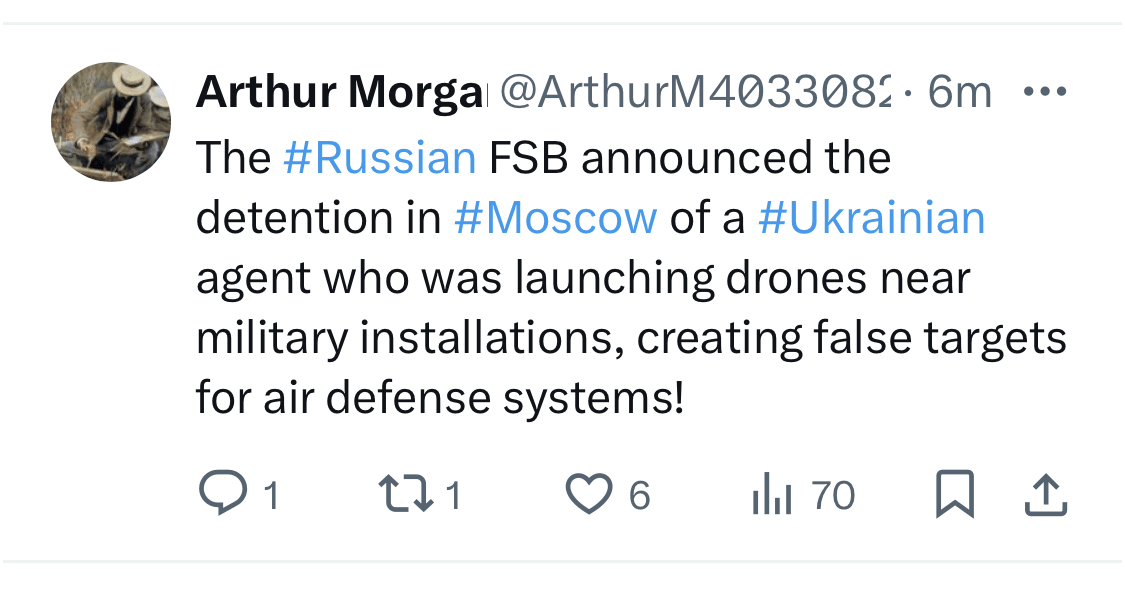
—
A new video showing a Ukrainian Su-25 utilizing the French AASM Hammer missiles against Russian forces: (Video at link.)
You can see the “lofting” tactic employed which we covered here many times long ago, where the plane flies low to avoid radar then briefly shoots up to as high an altitude as possible to gain distance on the missile, before dropping back down under radar coverage.
Intrepid viewers geolocated the plane from the footage, which is just over Konstantinovka:
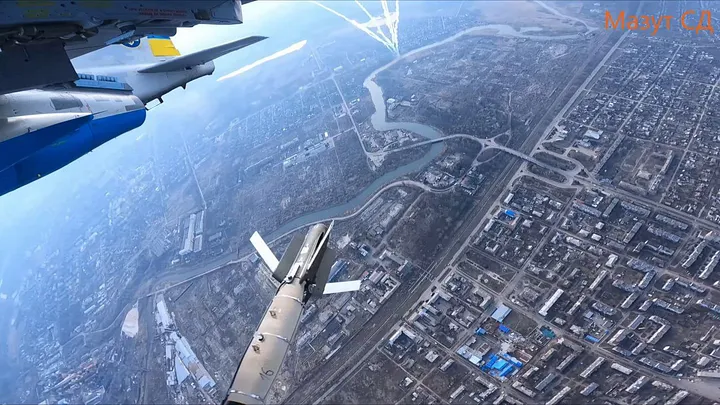
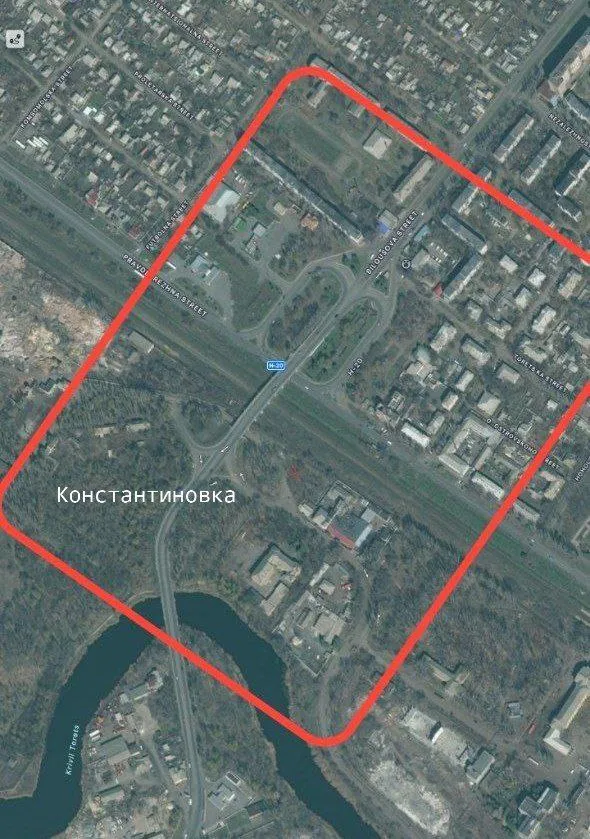
That’s fairly ballsy given that it’s only 10-15km or so from the frontline. In fact, we know Russian planes operate nearby given the famous S-70 Ohotnik incident, where the experimental drone fell somewhere over Konstantinovka, which means its wingman Su-57 was operating very close to the town.
Thus it shows the lofting strategy works—at least at times—based on luck, since there’s only a window of a few seconds to detect the Ukrainian plane and launch a missile if Russian assets are in the area.
—
Lastly, a remarkable video from 2015 where Sergey Dorenko makes a number of prophetic predictions about a most intense European war in the year 2025 and beyond: (Video at link.)
https://simplicius76.substack.com/p/sit ... ches-final
******
Overwhelming Evidence of US Pushing Ukraine Into War With Russia: Ted Snider Interview
January 6, 2025
https://natyliesbaldwin.com/2025/01/ove ... interview/
*****
Kursk direction: advance of the Russian Armed Forces to Malaya Loknya and the failed attacks of the Ukrainian Armed Forces
January 6, 2025
Rybar

In the Kursk direction, the situation did not undergo significant changes: Ukrainian formations continued to attack with smaller forces, but the attempts ended the same way as yesterday.
Judging by the objective control footage posted online, during one of yesterday’s attacks, the Ukrainian Armed Forces were still able to “drop in” to the outskirts of Berdyn .
However, the Archangel of Spetsnaz reports that the enemy was unable to gain a foothold there, and this is indirectly confirmed by the absence of more current evidence of the enemy’s presence in the populated area.
In other areas, the situation is approximately the same: despite reports from Ukrainian resources about supposedly successful actions in the direction of Leonidove and Pushkarnoye , units of the Russian Armed Forces repelled all attacks.
Russian troops, in turn, continue their offensive towards Malaya Loknya : according to some reports, they have managed to enter the settlement, although no supporting footage has yet appeared online.
https://rybar.ru/kurskoe-napravlenie-pr ... ataki-vsu/
Pokrovsk direction: advance of the Russian Armed Forces to the supply routes of the Ukrainian Armed Forces garrison
January 6, 2025
Rybar
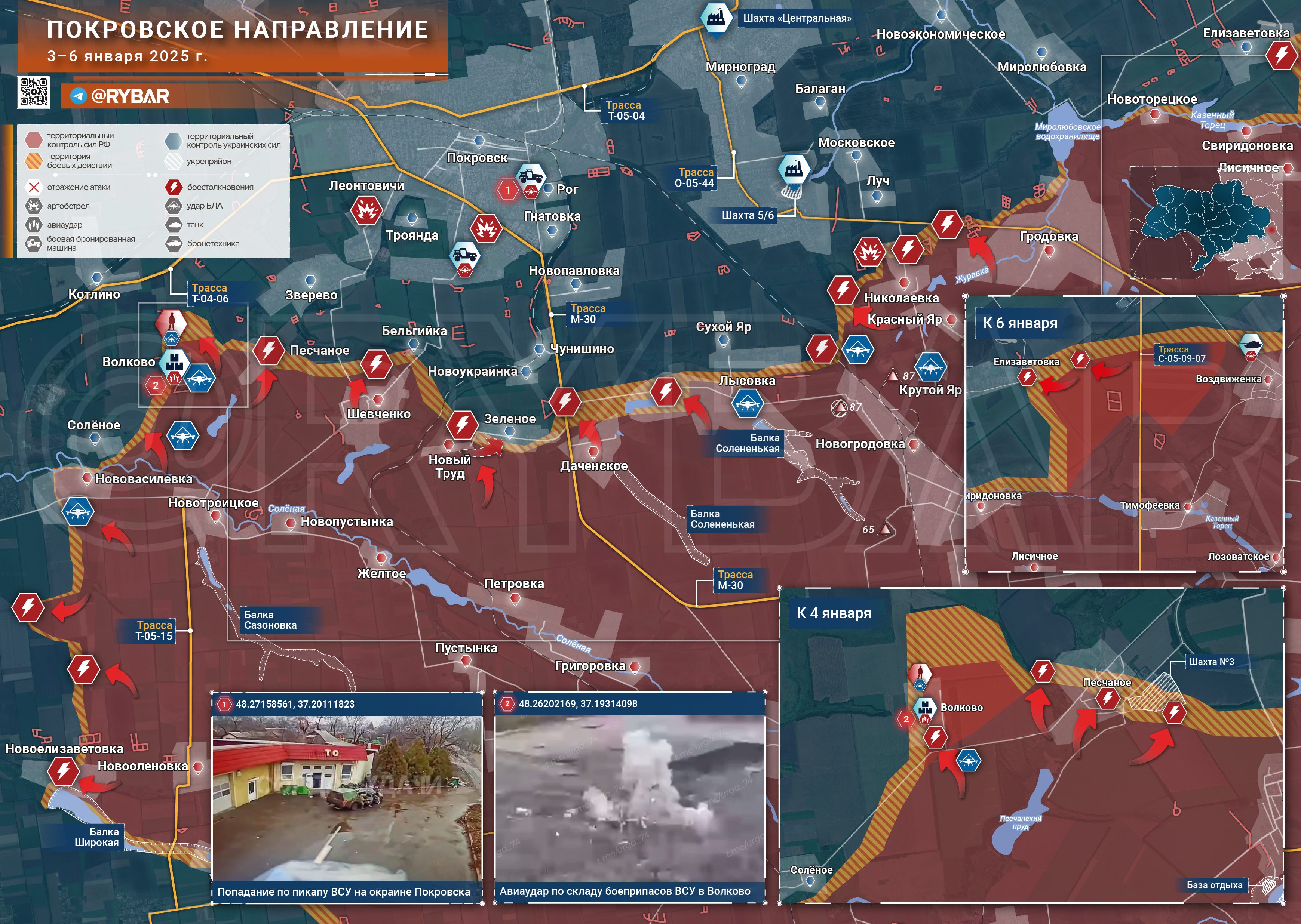
In the Pokrovsk direction, Russian troops continue the gradual encirclement of the Pokrovsk-Mirnograd agglomeration, advancing in a westerly direction from the previously captured Shevchenko and Novotroitskoye.
The Russian Armed Forces are not yet entering the development on the southern outskirts: the task remains to establish fire control over the roads, which will disrupt the logistics of the Ukrainian Armed Forces and facilitate the subsequent assault.
More about the situation in the Pokrovsky direction
On the eastern flank, after the liberation of Vozdvizhenka, Russian troops advanced to Yelizavetovka. The expansion of the Russian Armed Forces' control in the direction of the T-05-04 highway will soon create a threat to the supply of enemy forces from Konstantinovka .
In turn, in the western sector, assault groups liberated the settlement of Volkovo , located near the Kotlino railway station . This also allows cutting off another transport artery in this area and beginning to cover a large urban agglomeration.
At the same time, the Russian Armed Forces continue to "knock out" enemy equipment using FPV drones, including those on fiber optic cable. The latter allow for the effective destruction of enemy electronic warfare systems: in particular, footage of the destruction of two jamming stations at a car depot in the middle of a residential area in Pokrovsk has appeared online.
In general, the enemy is experiencing significant problems near Pokrovsk - what is the story of the 155th separate mechanized brigade, trained in France, worth : the Ukrainian command placed great hopes on it, but due to desertions, the unit suffered major losses and was unable to stabilize the front.
Nevertheless, there is no talk of the collapse of the Ukrainian Armed Forces defense in the area, and the enemy is even launching counterattacks against the advancing units of the Central Military District and other formations. Therefore, it is definitely not worth running ahead of the locomotive and predicting the imminent fall of Pokrovsk - months of fierce battles lie ahead.
https://rybar.ru/pokrovskoe-napravlenie ... izona-vsu/
Google Translator
******
One million dead claim justice
José Goulão
January 7, 2025
The Maidan coup is behind the loss of about a million human lives and will have to be the basis, the starting point for a necessary and fair trial of everyone associated with it.
I cannot guarantee that the war in Ukraine resulting from the anti-democratic Western coup carried out ten years ago “in the name of democracy”, has already caused a million deaths so far, among Ukrainians and also Russians – which, contrary to the single truth imposed by “our civilization”, they are also people.
The number, however, is close to it, it may even exceed it because the daily killings on the battlefields and the “collateral damage” they generate in the societies of both countries, with much greater repercussions in the unfortunate Ukraine, support such a tragic calculation. For example, the size of some Ukrainian cemeteries has been multiplied fourfold since the start of the Russian special military operation, completed through an illegitimate military invasion. Those responsible for this humanitarian catastrophe, to put a stop to the usual propagandistic delusions of the Euro-“commentary” and national commentators, are the sponsors of the Maidan Square coup in Kiev, successfully launched in 2014 by the main Western powers., with the United States – an “exceptional” and “indispensable” nation and its main satellite countries integrated (or dissolved?) in NATO and the European Union at the forefront.
Victoria Nuland explained to us at the time, without any shame or trace of secrecy, with the authority of someone who occupied a high position in the North American State Department, that the United States invested five billion dollars to overthrow the government of Kiev, by the way resulting from democratic, free and fair elections that no one contested, and put in its place a dictatorial junta with Nazi-Banderist tutelage.
According to the official figure revealed by Nuland and giving the extermination of a million people as probable, the price of human life in the purse of abuses practiced by liberal democracy in the always alleged defense of human rights is five thousand dollars (more or less the same thing in euros) per head.
Looking at the Western economic collapse, one can deduce that the investment seems excessive but, in truth, the possibility of NATO surrounding and even dismantling Russia and thus being able to open the doors to astronomical looting, taking a giant step towards imposing the much-desired globalism seems well worth that price.
The reality, however, was poorly budgeted and sales at a unit price of five thousand dollars represent an inconsequential Western waste of manpower and money because thousands of people continue to die every day on the battlefields of a war lost by Kiev, Washington and Brussels. The Western political classes and their well-trained microphone feet and keyboard-hammering zombies guarantee that no, that the victory of Zelensky and his Hitler supporters will come, perhaps on a foggy day, in exchange for a modest daily expenditure of around 50 million dollars in human lives (around 10 thousand deaths per day), which will be perfectly in line with the predictions of losses and damages – at least according to the technocratic spirit and the “invisible hand” of the Market. It should be noted that the five billion invested in the coup itself plus Western spending on the war to date, on weapons and direct and indirect financing for the Banderista regime, must be close to a total of one billion million, that which the Anglo-Saxons refer to as a trillion dollars – or euros, it doesn’t matter when we enter the domain of these astronomical sums, still the 30th part of the sovereign debt of the United States.
The beginning of the end
The official and only admitted story about the Ukrainian drama, which we have to accept under penalty of being classified as incorrigible Putinists, tells us that it all started on February 24, 2022, when “Russia invaded Ukraine”. And if someone claims that we must go back to February 2014, then the official version is adapted informing us that the problem at that time was triggered by the “Russian invasion of Crimea”.
What Western elites never admit is that it all started with the coup on Maidan Square in Kiev on February 22, 2014, when the legitimate Ukrainian president, Viktor Yanukovich, democratically elected with 49% of the vote on February 25, was overthrown. 2010.
No one contested these elections or the results, and all Western countries considered them within Ukraine’s democratic normality. One of the “deviations” of the elections, as it belatedly and opportunistically came to be invoked when the crowds of the “revolution of dignity” were already moving through the streets of Kiev under the leadership of Nuland and the American ambassador Geoffrey Pyatt, was the fact that Yanukovich received more votes in the East than in the West of the country, a geographical inclination that, after all, seems to be a peccadillo for democratic sensibilities. But, to better sustain the coup through the faithful media echoes, the owners of truth and democracy in the West soon accused Yanukovych of being corrupt, in a country where corruption is congenital, and of “handing the country over to Russia”, when he had limited himself to reject a partnership agreement with the European Union; which, as is customary, subjected Kiev to the autocrats in Brussels. In other words, the legitimate president was a victim of his government in defense of national sovereignty – a practice that the West does not even want to hear about, not because it is “retrograde”, as it says, but because it is uncomfortable for the strategy of neoliberal globalism, a condition in which we will be happy without having anything and half a dozen hidden mega-thieves will have everything.
Even so, on February 21, 2014, the foreign ministers of Poland, France and Germany went to Kiev, respectively Radoslav Sikorsky (also a British citizen, now again in office), Laurent Fabius and Frank-Walter Steinmeyer, who mediated and arrived at an agreement between the government and the opposition to resolve the crisis through the holding of general elections and the re-entry into force of the 2004 Constitution. By that time, Nuland and Pyatt were already distributing biscuits to protesters on Maidan Square – it seems that the always diligent politician Portuguese Ana Gomes tried it and liked it – while members of Nazi-Banderist groups, distributed on the roofs of surrounding buildings, wearing Ukrainian police uniforms, shot at the crowd, causing dozens of deaths. The fact is duly proven, which is why it was buried in the silence of Western elites, including the media.
The agreement was nothing more than a useless piece of paper and Yanukovych was overthrown. Victoria Nuland then formed a government junta in Kiev including ten members of Nazi-Fascist-Banderist groups and, when mildly criticized for not having shared the task with European leaders, responded with the usual elegance and consideration of the United States towards the satellites: “Fuck the EU” (unnecessary translation).
The West was quick to recognize the coup junta, France, Germany and Poland did not even invoke the agreement they mediated and Kiev’s war soon began against the populations of Russian origin in the east of the country and the Crimean Peninsula, territory originally from Russia but that the Soviet leader Nikita Khrushchev, for whom the October Revolution was a dead and buried event and during a night of libations, in the fifties, decided to join Ukraine.
Moscow then reappropriated Crimea, shortly after the coup in Kiev, but the fact was accomplished only after a democratic consultation with the population; and, as it always happens that the electoral results are not what they wanted, the Western elites considered them a falsification – despite more than 90% of the population having spoken out for reintegration into Russia.
However, in Eastern Ukraine, generally known as the Donbass region, the population had to wait eight years for direct support from Moscow and was forced to organize themselves into self-defence structures, thus managing to stop Kiev’s offensive after many months., which reduced the intensity of the conflict.
The Minsk agreements were then negotiated, which established a type of federative solution for Ukraine and were signed by the Ukrainian parties to the conflict under guarantees granted by Russia and, again, France and Germany.
We would later learn that Poland, France and Germany’s disregard for the agreement between the government and the opposition established in 2014 was not a sporadic case of mystification and bad faith. François Hollande and Angela Merkel, French president and German chancellor, revealed a few years later, without shame, that their signatures on the Minsk agreements were due solely to the need for the Banderist regime in Kiev to gain time and be able to arm itself to achieve in the East the that began on Maidan – the expansion of the apartheid and xenophobic regime under the control of Nazi-Banderism throughout the territory. A need that Paris, now owned by Macron, and Berlin under Scholz, together with the countries of the European Union and NATO, under the tutelage of Washington, met without reluctance over the course of a decade, even paying the price of plunging the West into a deep crisis., possibly explosive.
A parenthesis to point out that Viktor Yanukovych, since then in exile, was sentenced to 13 years in prison by the Kiev regime, which in the meantime suppressed parties capable of authentic opposition to the dictatorial junta; This sentence prompted the European Union, true to its habits, to impose sanctions on the deposed president and his family. While the Biden family, vice-presidents of the Obama administration – the true masters of Maidan – increased their countless wealth by plundering Ukraine’s natural wealth, for their own benefit, mainly in the natural gas sector. Meanwhile, the European General Court ruled on December 23, 2023, to clear Yanukovych and the family of the Kiev charges, invalidating the sentence and ruling that the European Union must lift the consequential sanctions because they were imposed on the basis of “an error of assessment ” since the Ukrainian regime authorities were unable to demonstrate that the trial carried out was fair.
As can be concluded, Western political elites have always been on the side of the lie, the violation of democracy and the international agreements they signed regarding the situation generated by the Kiev regime, where they pontificate nostalgic for Hitler. As if that were not enough, when they could have guaranteed the suspension of the conflict through the Istanbul agreement, still in 2022, these same elites sent the trampoline British Prime Minister, Boris Johnson, to Kiev to sabotage it. At that time, Kiev’s war against the East had already caused 13 thousand deaths since 2014. A first and modest investment of 65 million dollars by the Nazi-Banderist regime in the extermination of its people.
The political caste that administers the so-called collective West, in the service of globalist economic-financial mafias and expansionist war, has thus left the planet under the greatest threat to its existence of all time. Therefore, it is not worthy of respect, of credibility, of any consideration from the people of its countries. Liberal democracy is nothing more than a gross falsification of democracy.
The ICC has a difficult task ahead
Let’s pretend we are all very naive and believe that one day the recent decision of the International Criminal Court (ICC) regarding Benjamin Netanyahu will have some practical effect.
Weeks ago, the International Court of Justice (ICJ), a UN body, had taken the same position, but without practical results so far. Netanyahu is immune and unpunished and will remain so. And if it accepted a ceasefire, certainly temporary, in Lebanon, it is because once again its troops and hordes of assassins are unable to bend the Lebanese people and Hezbollah as their stronghold, which once again stood up to the Zionist war apparatus and did not give in, despite the successive beheadings of its main leaders.
Unfortunately, within the UN there are always those who manage to soften and deauthorize the work of the ICJ, such as, in this case, the secretary general, António Guterres. By attending a conference in Lisbon together with the Zionist war criminal Tzipi Livni, directly involved in the permanent genocide in Gaza, Guterres blatantly ignored the court’s position: he knows very well that the ICJ’s decision is not personalized on Netanyahu, who alone would not be able to carry out the ongoing carnage, a work that is the responsibility of the transnational Nazi-Zionist ideology.
The two international courts thus reserved seats for Netanyahu on two benches. The scope of the measure, however, will have to be broader and more comprehensive. The opening of these precedents – which had already happened in relation to Vladimir Putin – can and should mean that those responsible for the war in Ukraine will have to face their Nuremberg on a day when the world is able to do so, if the many candidates for these banks of defendants have not destroyed it before.
With the historical rigor on which these necessary tribunals will have to be based, the individuals to be brought to trial will all be those directly responsible for the Maidan Square coup in Kiev, not just the operatives – Obama, Biden, Nuland and Pyatt – but also those who supported its execution and those who supported and became involved in the consequent war. That has already killed around a million human beings, crimes that cannot go unpunished.
It is difficult, and it is not even possible here, to list all the leaders, civil and military, who will one day have to sit in the dock so that the memories of the fatal victims, the drama of their families and the damage caused are repaired. to millions of wounded and maimed, Ukrainians and Russians.
All heads of government, ministers of Defense and Foreign Affairs and high military commands of the United States of America and NATO and European Union countries will have to be indicted. The exception may be Prime Minister Fico of Slovakia, who was already paying with his life the price for his daring to go against the grain. Many will think that Hungarian Viktor Orban could be spared due to his cyclical reticence about involvement in Ukraine; however, he is unconditionally in heart and soul with the murderer Netanyahu, which makes him an equal defendant.
Without the Maidan coup there would be no war in Ukraine, the Crimean Peninsula would still be integrated into Ukrainian territory, there probably wouldn’t even have been the massacre at the House of Trade Unions in Odessa on May 2, 2014; and Ukrainian Nazism would remain residual as was the case before those responsible for the coup that overthrew the elected president Yanukovych gave him gas as the most qualified agent to guarantee repression, torture, terror, the militarization of society and the implementation of apartheid as state policy. And without Maidan, Ukraine would continue to be a state with full territorial integrity and living within normality – although always at the mercy of the colour revolutions organized by the National Endowment for Democracy (NED), a powerful coup branch of the CIA currently headed by Victoria Nuland herself, as recognition of their terrorist abilities.
The Maidan coup is behind the loss of about a million human lives and will have to be the basis, the starting point for a necessary and fair trial of everyone associated with it. We can mention Obama, Biden and Trump, several U.S. secretaries of state such as Blinken, Pompeo, Tillerson and Kerry, heads of the Pentagon, autocrats from the European Union and NATO such as Van der Leyen, Stoltenberg, Rutte, Charles Michel, Mogherini, Borrel and Kallas and the main leaders of the governments of NATO and European Union countries, without forgetting Costa and Montenegro, Santos Silva and Rangel (Portuguese PM and ministers), both for their support of the war in Ukraine and for their active collaboration with the Zionist genocide and the deliberate and overt tolerance in regarding Israel’s crimes. António Costa, it will never be too much to remind him, appropriated 200 million dollars belonging to Portuguese people to hand it over to the deranged war criminal Zelensky. The 200 million, according to the original value of human life in this war, contributed to the murder of 40 thousand people, a fraction of the slaughter to which no one can remain indifferent, much less justice.
In the name of humanism, human rights, the canons of “Western civilization”, invoked so many times only to be violated so many times, the million dead in the war imposed on the territory of Ukraine following the Maidan coup, on February 22, 2014, and the millions killed, injured, dispossessed and exiled since 1948 at the hands of Zionism demand justice. As citizens, it is an inevitable duty and obligation to actively fight against our governments, the European Union, NATO and imperialism to make this happen. Brute force works in favor of criminals, but courage, determination, unity, even time are in our favor because human reason is difficult, even impossible to bend and break. It is the laws of History.
https://strategic-culture.su/news/2025/ ... m-justice/

